We started out the morning by heading up to Shogunzuka Seiryuden from the Hyatt Place Kyoto where we have been staying. After enjoying the view and garden, we headed back down to have lunch at Sanjo, north of Gion. After an excellent meal, we visited Shoren-in and Chion-in before ending at Yasaka-jinja. We had a nice matcha snack in Gion before heading to dinner near Kyoto Station.
Morning
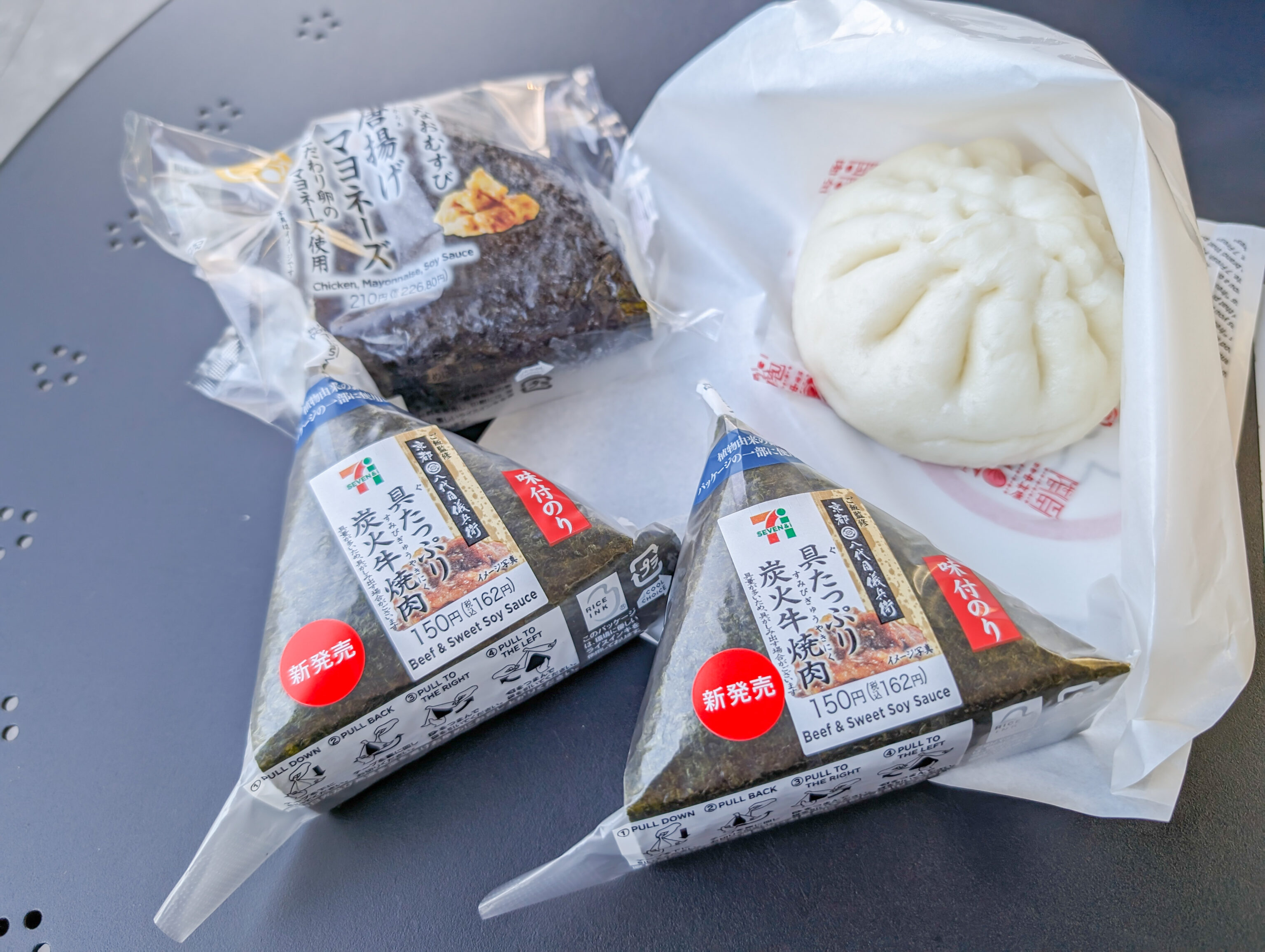
After waking up, we walked over to the local 7-Eleven from the Hyatt Place Kyoto. We got some onigiris and a pork baozi. The beef and soy sauce onigiris are very good!
Shogunzuka Seiryuden
After our cheap but good breakfast, we started to head to Shogunzuka Seiryuden. This temple is in the mountains in the Higashiyama Ward of Kyoto City. It sits above Kiyomizu-dera, Kodai-ji, and the Keage Incline, all places we’ve visited on this trip. Normally, there is no mass transit going to this temple. But for part of the year, there is a special bus service, route 70. The temple’s English Access Information page provides a timetable along with an inaccurate map which is probably from some previous year’s service as well as missing information on the actual schedule. The Japanese page is better.
Bus 70 departs from the Sanjo Keihan Station. There are various ways to get there. We ended up taking bus 51 which departs more or less across from the Hyatt Place. It is possible to shorten the trip by getting off earlier and walking a bit but we took it all the way to Sanjo Keihan Station. Bus 70 departs from stand C1. We arrived at C3! That lucky coincidence saved us from having to find the appropriate departure point. We ended up having to wait a bit until 8:45, the first departure of the day.
The bus doesn’t take long to go up to Shogunzuka Seiryuden. It heads directly there with two stops on the way. The route is pretty simple. Drive straight east until reaching the mountains and ascend adjacent to the Keage Incline. Just as the four lane road starts to climb, the bus turns off onto a much smaller street to make its way up to the top of the small mountain. The bus stop is in the middle of a parking lot.

After getting off the bus, we first walked on a very short path to the west to reach a viewing platform labelled Higashiyama Mount Peak Park Observatory on Google Maps. The view was nice but the mountain really isn’t high enough to get anything more than a relatively low angle view of Kyoto.

The viewing platform is really just a big paved area surrounded by forest on three sides. It seems to be in a state of slight disrepair but very clean as this is still Japan!

Not much fall foliage here, but we did see a few spots with some color. We spent just a few minutes here before heading to the temple. On the way, we passed the bus and the bus driver as the bus does not immediately depart. The driver mentioned when the next departure would be and where it would depart from, at the side of the parking lot. Very nice of him!


Fortunately, we saw some Japanese maples in their beautiful fall colors as we approached the temple!

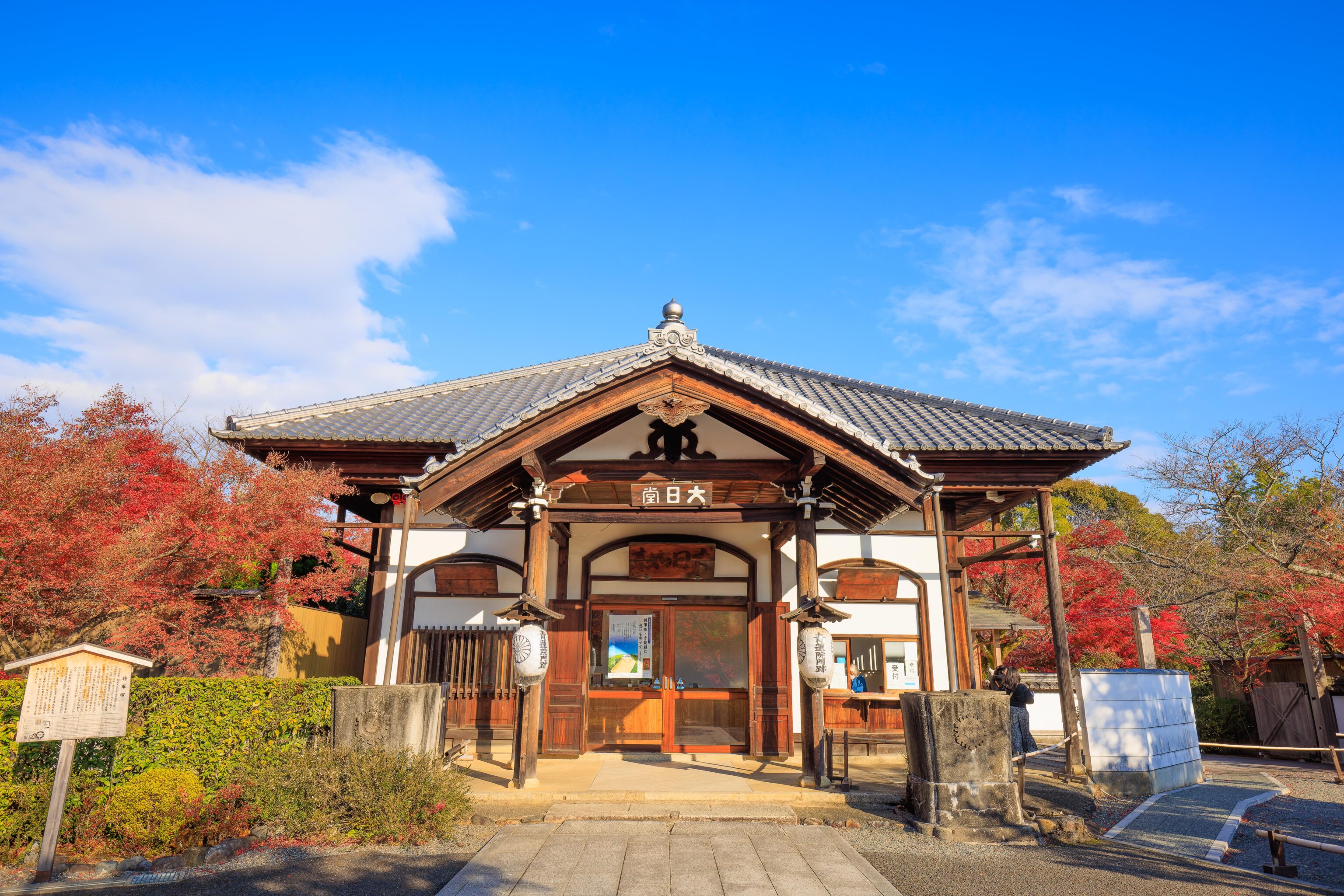
After taking a very brief look around, we headed to the ticket window.
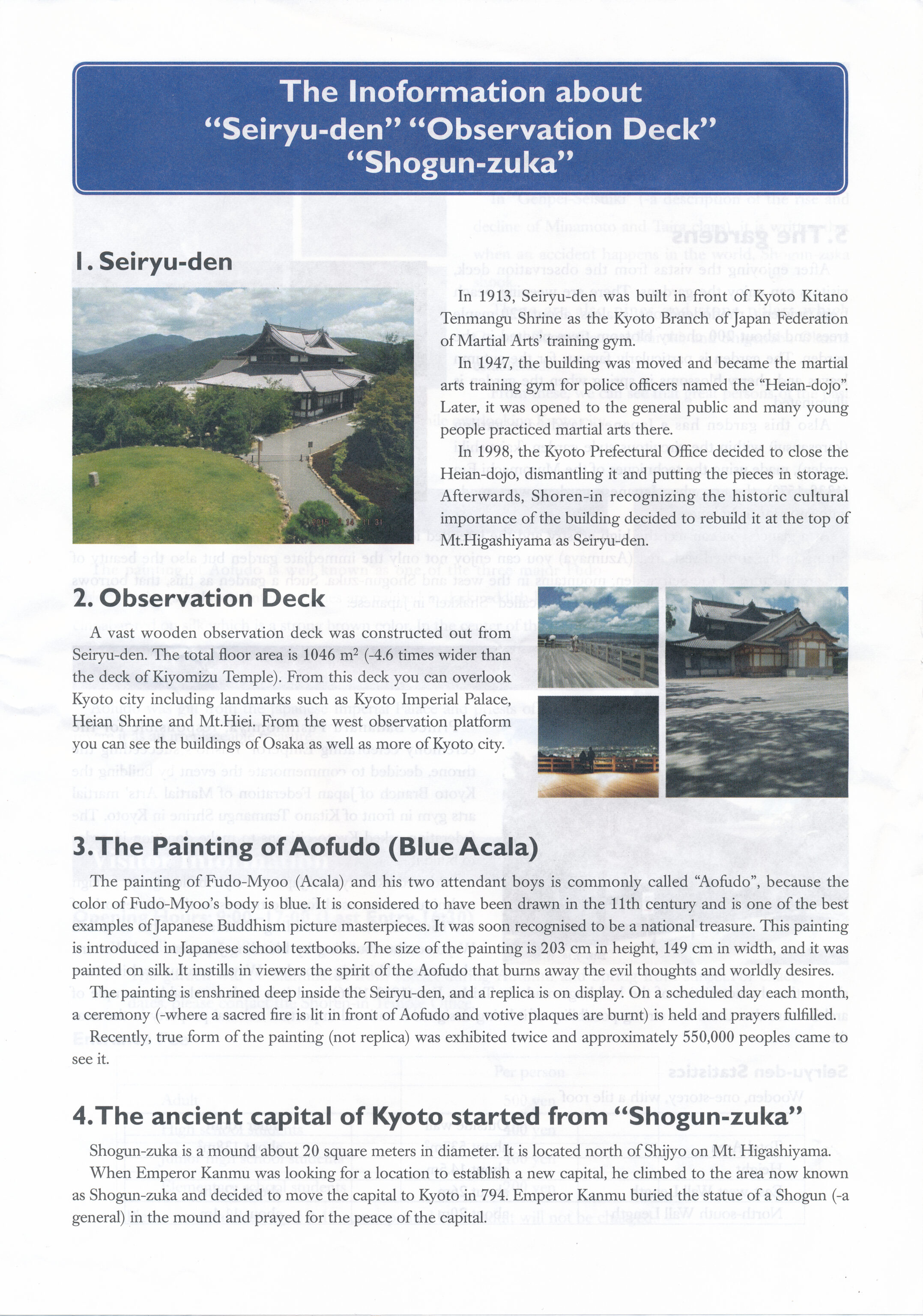
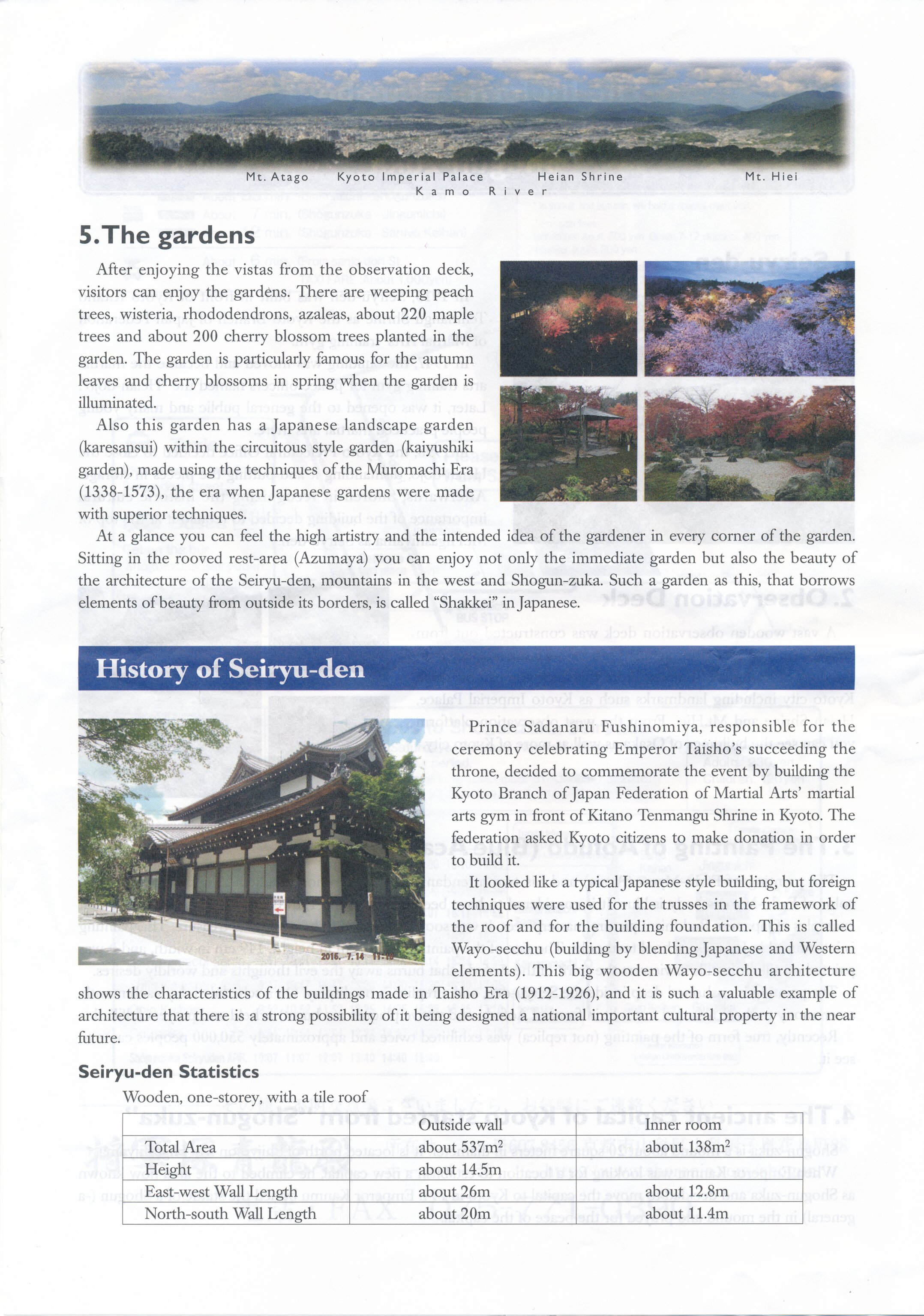

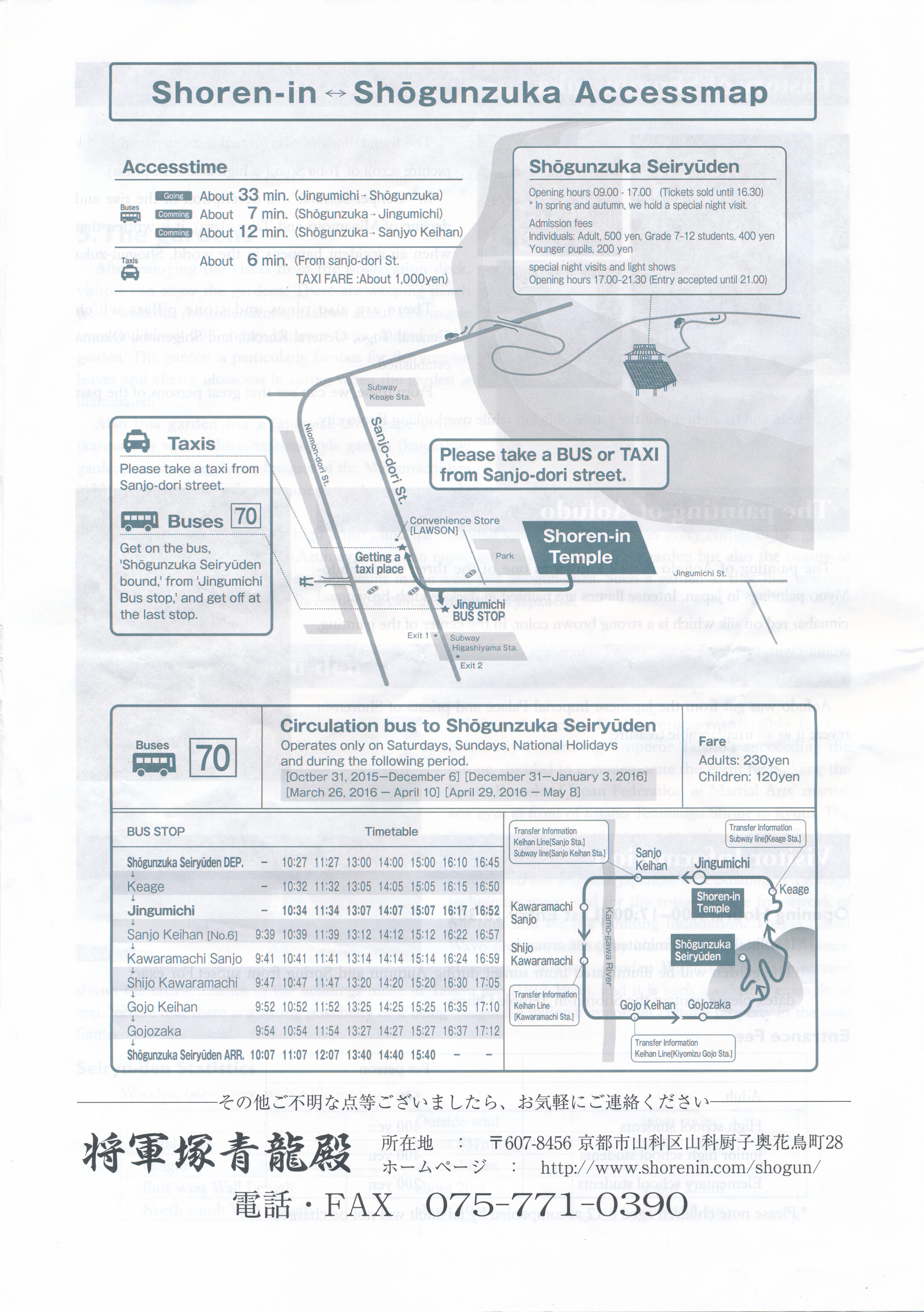
We received an English pamphlet which included a bit of useful information about Shogunzuka Seiryuden as well as a access information from 2016. Well, we made it here already so no big deal!
Historically, this place is interesting as it is a mix of very old and very new as well as a temple building that dismantled was moved here!


After entering, we headed to Seiryuden, the first stop on the tour route. This is a large temple building that was originally located at Kitano Tenmangu but disassembled and ultimately moved here with reconstruction finishing in 20141.
We went inside to take a quick look. Photography was not permitted so there is nothing to visually see here. Most of the building is empty, though some of the normal temple elements are present.
There is a painting, Ao Fudo, from the 11th century in the temple that is considered a national treasure of Japan. It seems that what we saw may have been a reproduction rather than the original, based on the temple’s pamphlet as well as website text.

After briefly taking a look inside, we headed back out and walked around the building’s east side.

We stepped out onto the temple’s vast observation deck! It was a huge space with just a few people present at the time.



The view of Kyoto from here was quite nice. We could see some color in the mountains, though it was quite patchy in places. We could also see the vast Kyoto Gyoen, the large park just north of the Hyatt Place Kyoto, as well as the Kamo River which flows through the city’s east side.



Of course, we could see the Seiryu-den.

We exited the deck from the west side. There were stairs leading down into an area with many Japanese maples showing their beautiful fall colors.

The path led to the Shogun-zuka mound. The story, as told in the temple’s pamphlet, is that the Emperor climbed up to this mountain and decided to move the capital here. He buried a statue of a shogun in this mound and prayed for peace. So, presumably, there is a statue somewhere under all the dirt and grass in front of us.
We walked around the mound to reach the concrete structure in the background.

This was another observation platform, accessed by exterior stairs.

From the top of the stairs, we looked back to see the Seiryu-den. Its wooden deck is visible as well, though from this perspective it looks quite small.
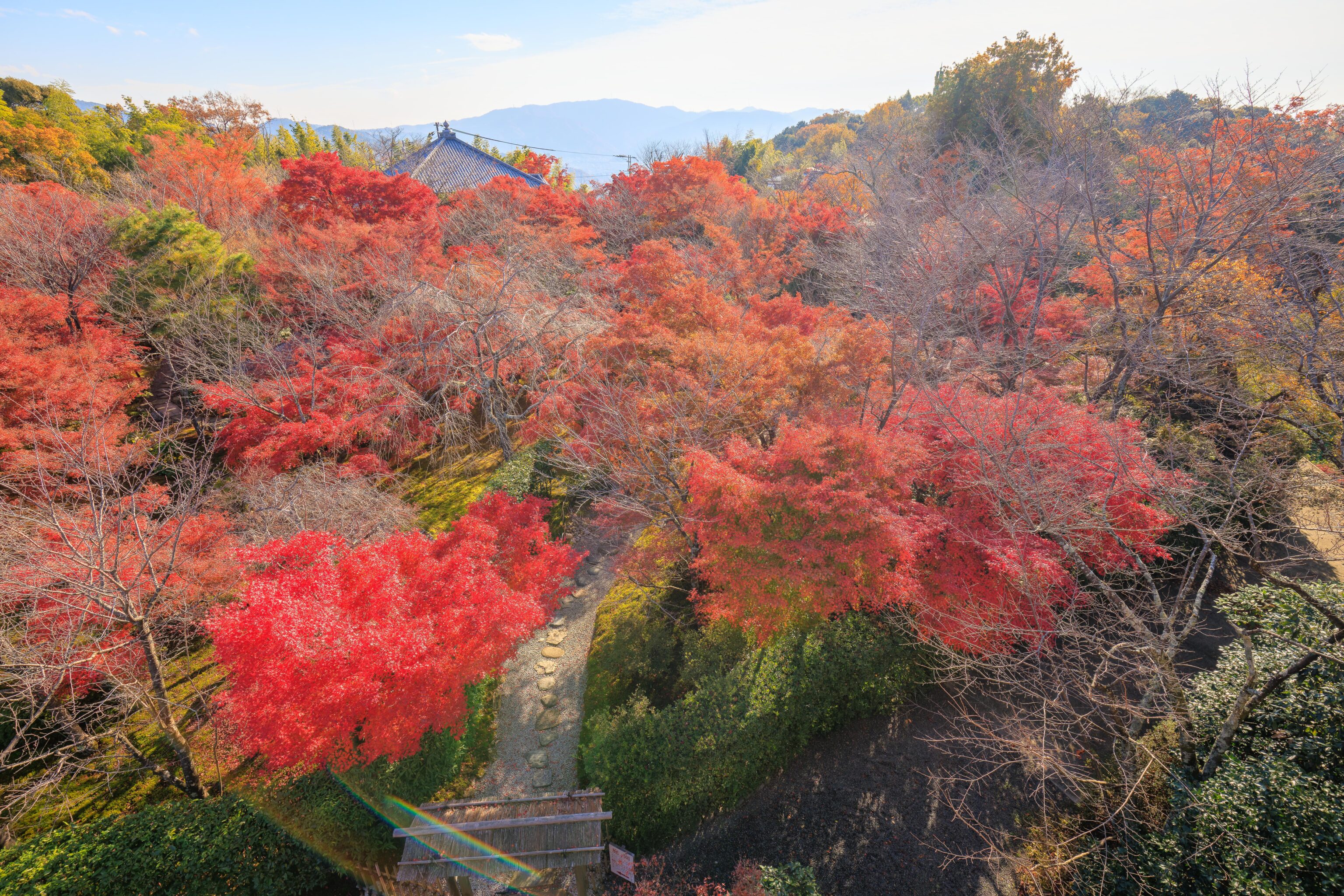
Looking to the east, into the sun, we could see the temple’s garden. There were a variety of leaf colors as well as many trees that had completely dropped their leaves already.
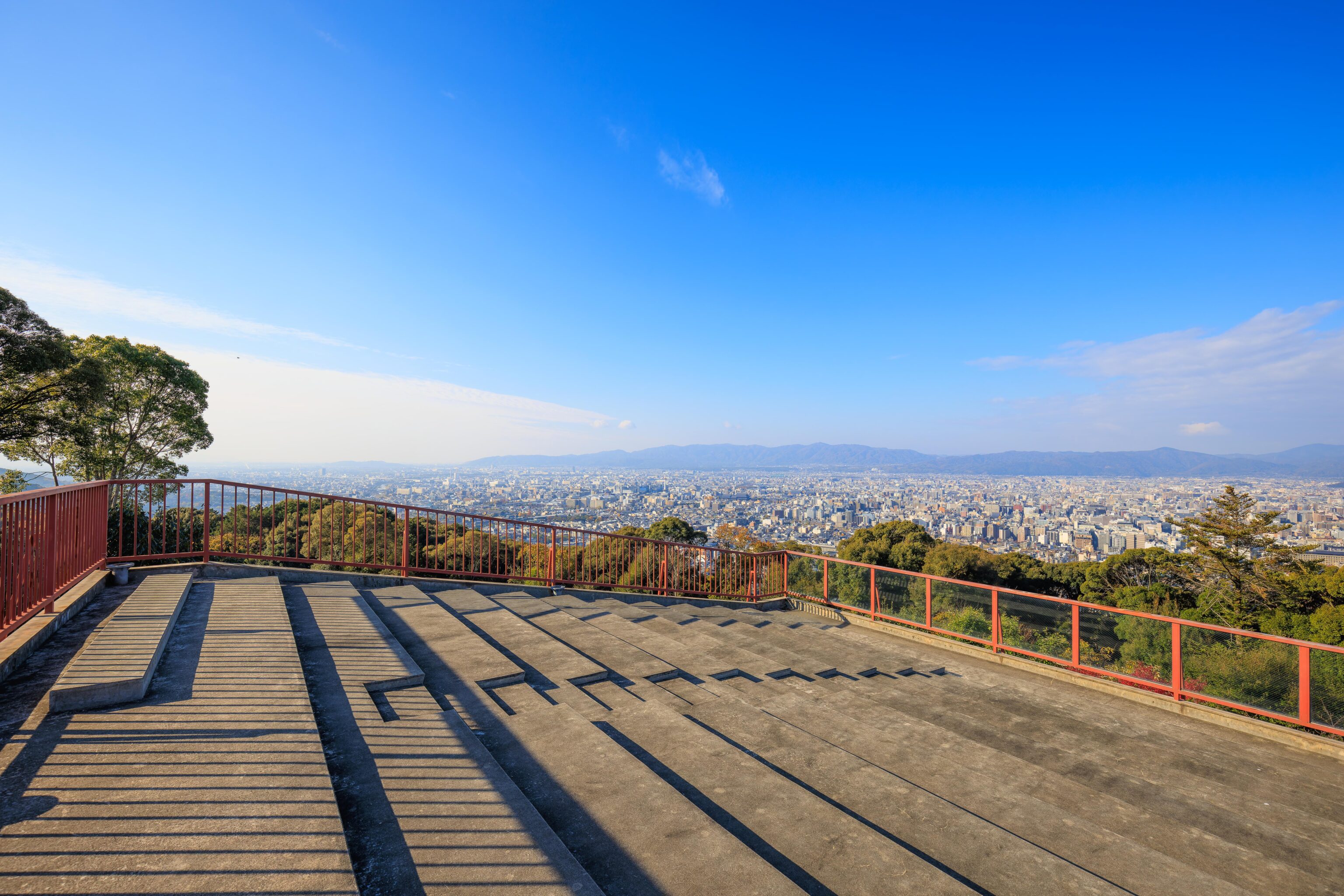
This concrete platform was configured as very wide and spacious steps. One does wonder though, what is under here? This platform is atop what seems to be a building rather than just a minimal steel frame.
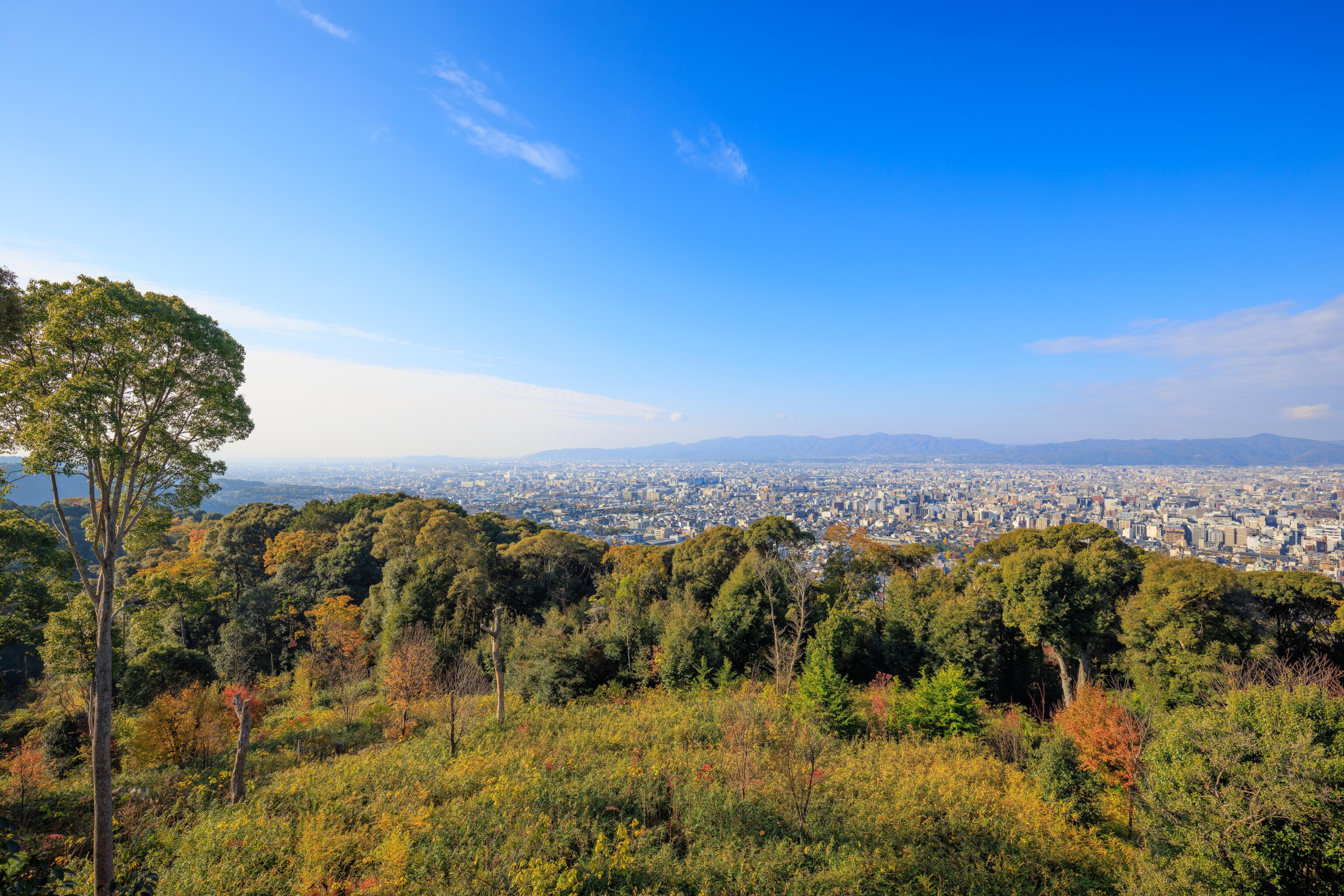
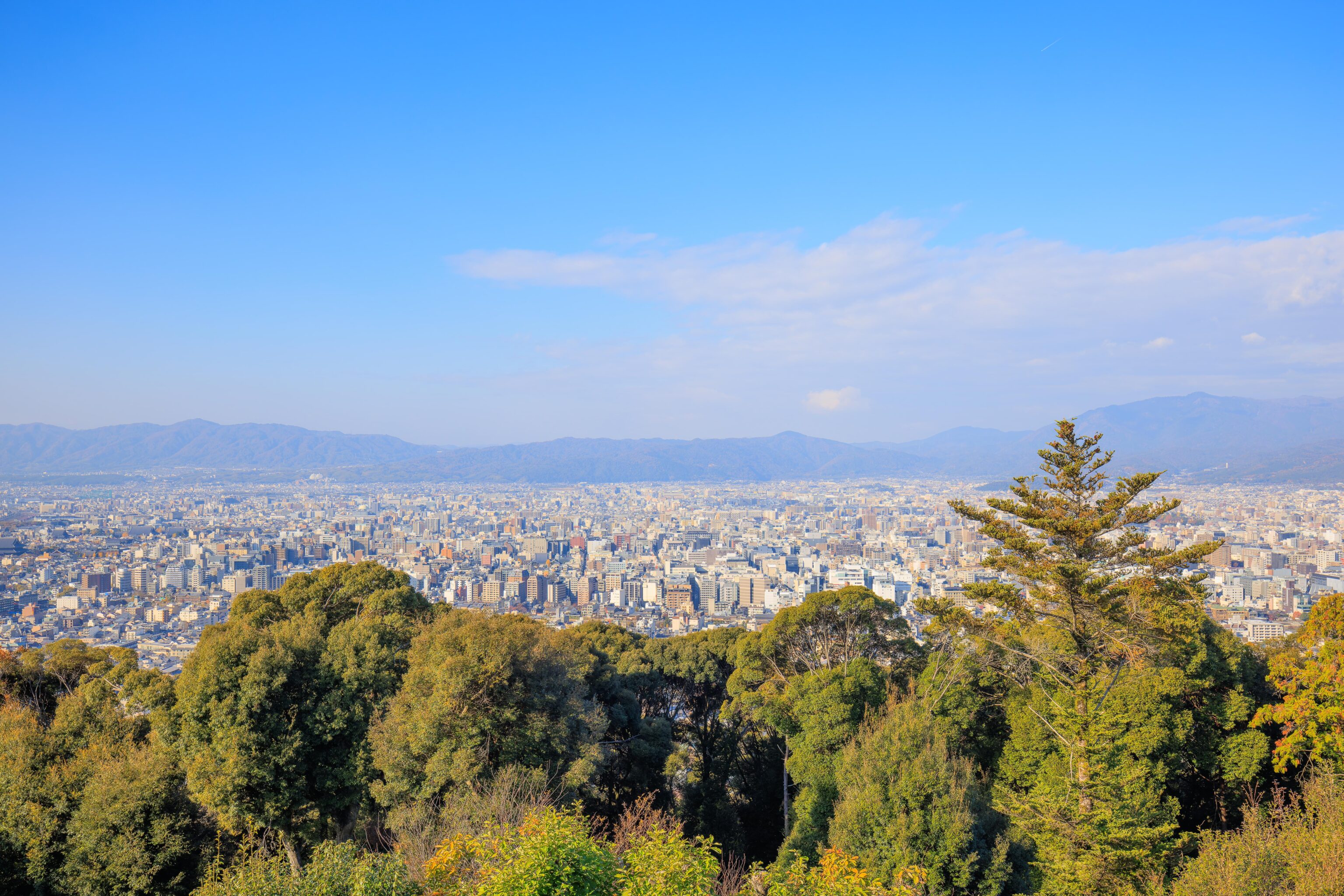

The view, from southwest to northwest. You’re supposed to be able to see Osaka from here, though the weather seems to be a bit too hazy.

We headed back down to ground level via the same stairs that we ascended on. The mound is right by the stairs.

We headed into the garden.
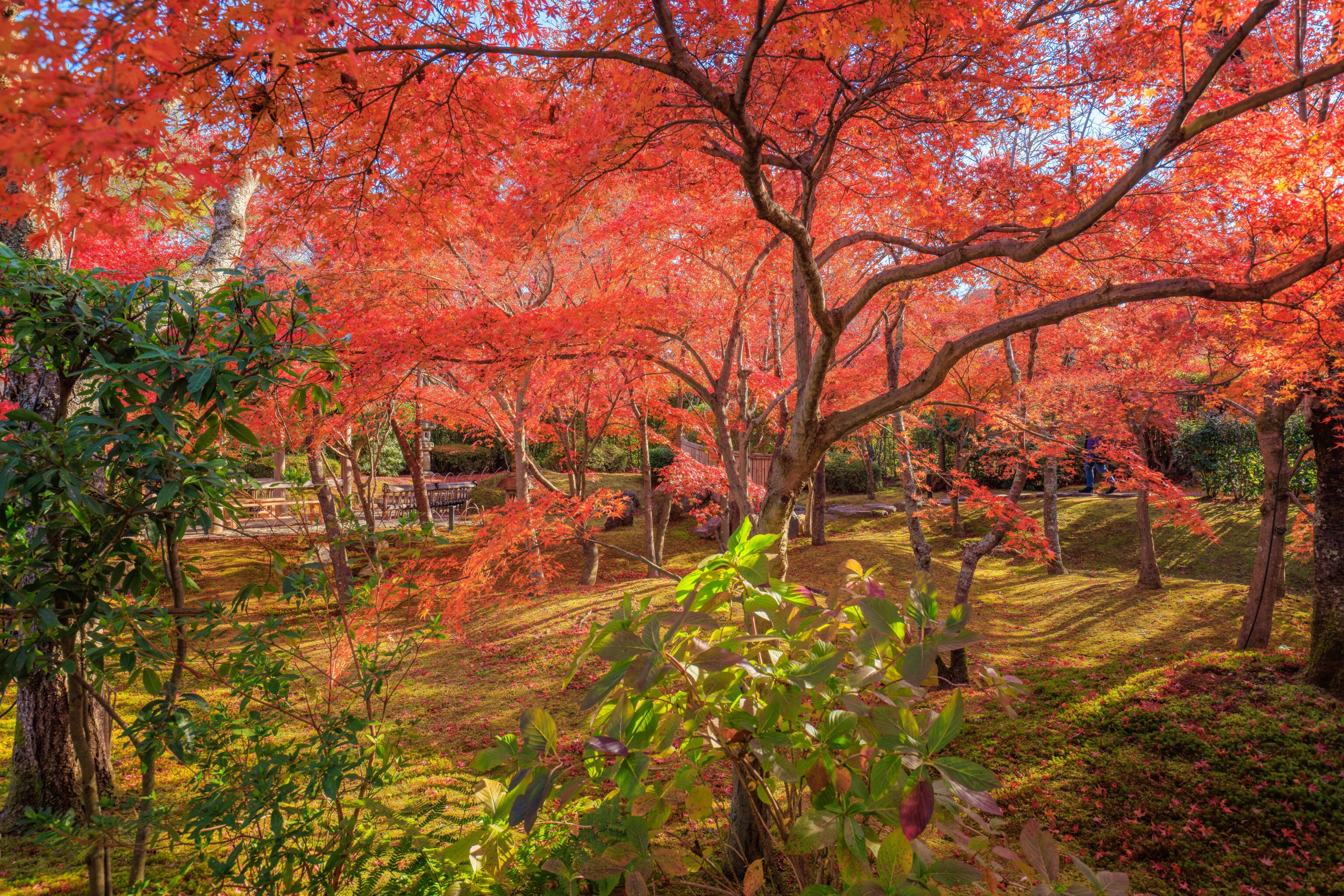
There were quite a few beautiful Japanese maples.
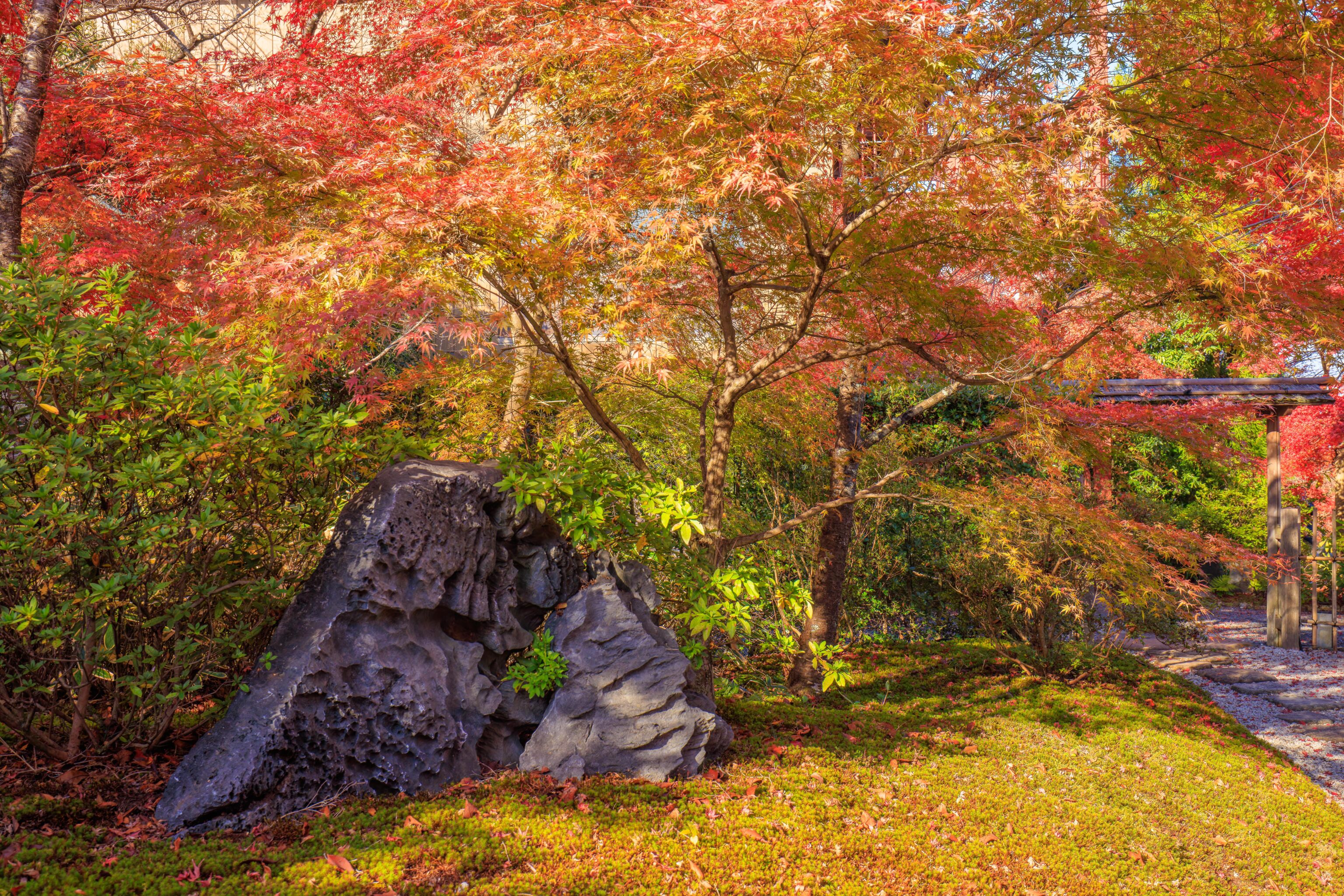

We passed by some stones…
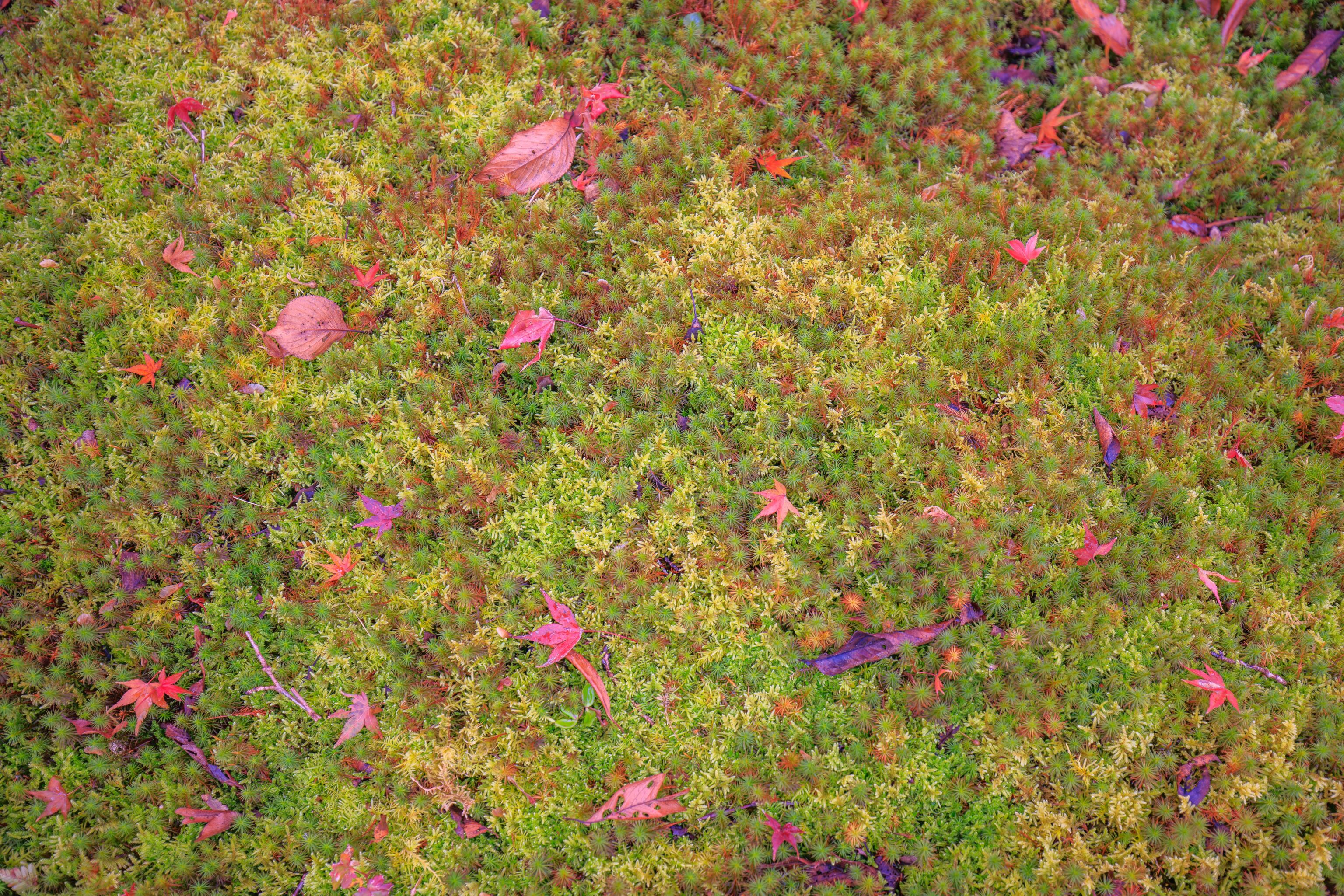
The ground was quite mossy in places.

This seems like it would be a small cascade if there was a bit more water.

The prettiest scenes we’ve come across so far during this fall season involve the maple trees!

We passed by another, more distant, view of the mound.

The garden route passed by the first temple building that we bought our tickets at.

The path didn’t end here though. It continued on.
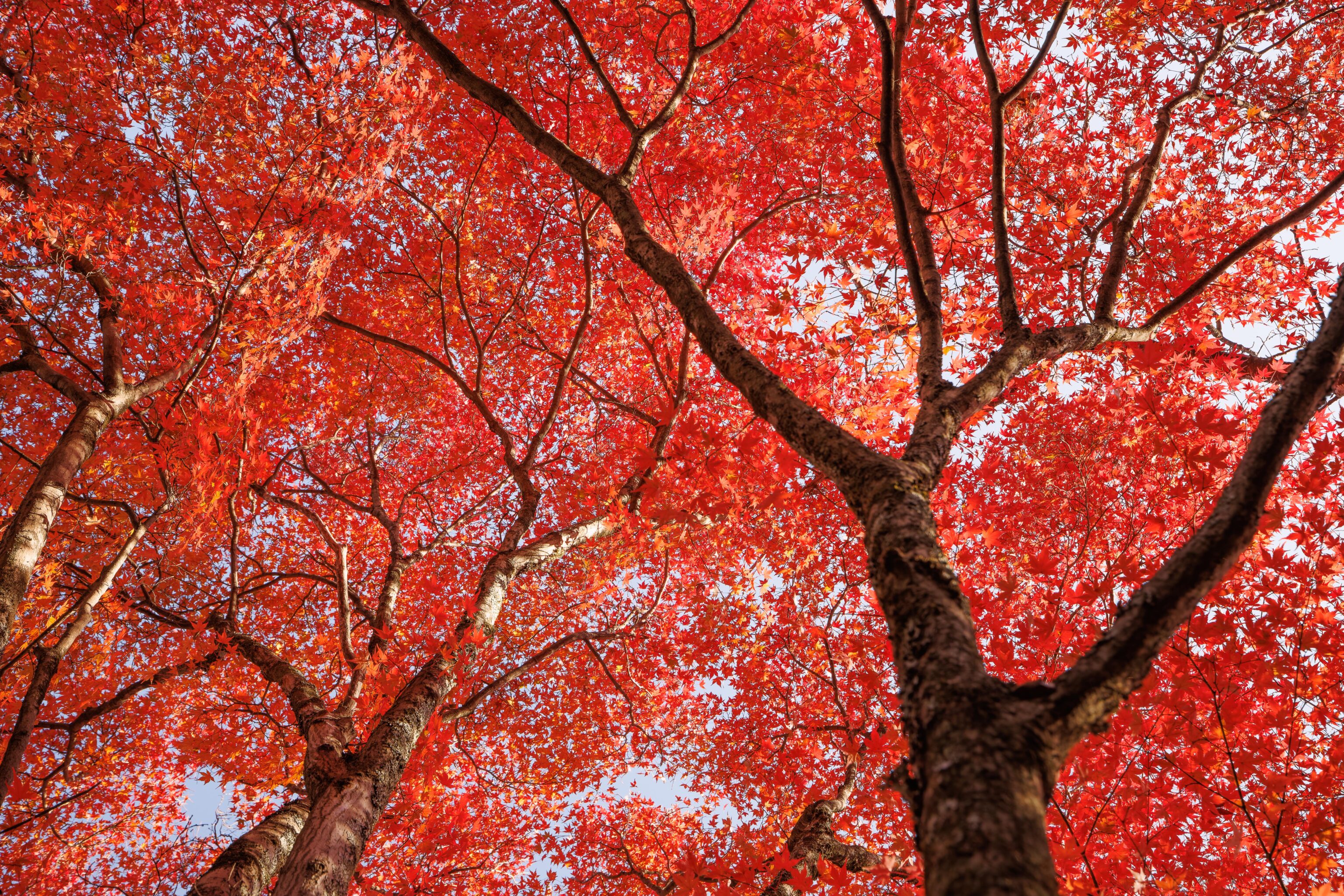
A very nice canopy!

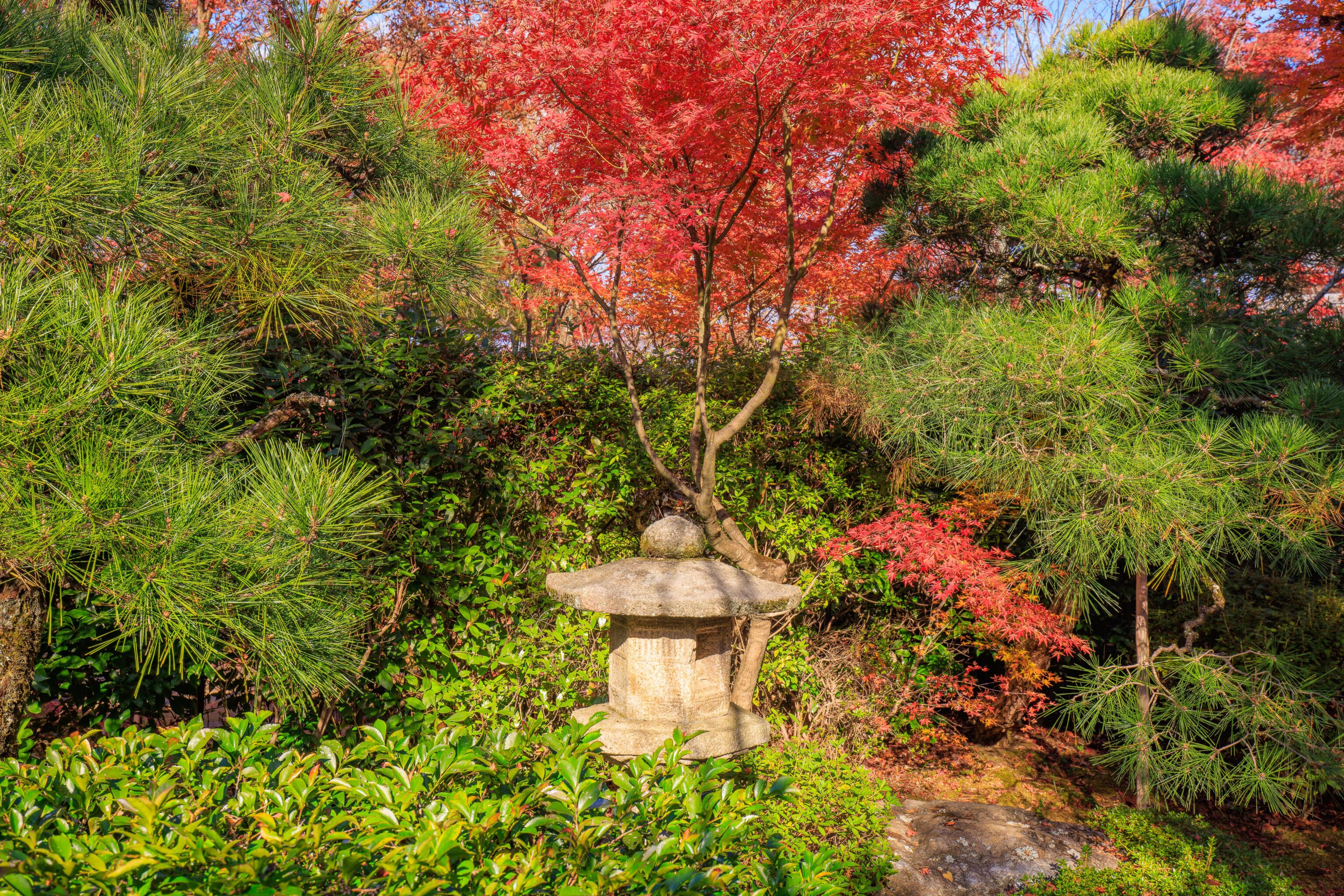

We passed by some stone lanterns. The last one seemed to be surrounded by some Jizo statues?

We passed by a small raked dry garden. The sand gives the appearance of a pond, particularly with the stone bridge in the background going across.
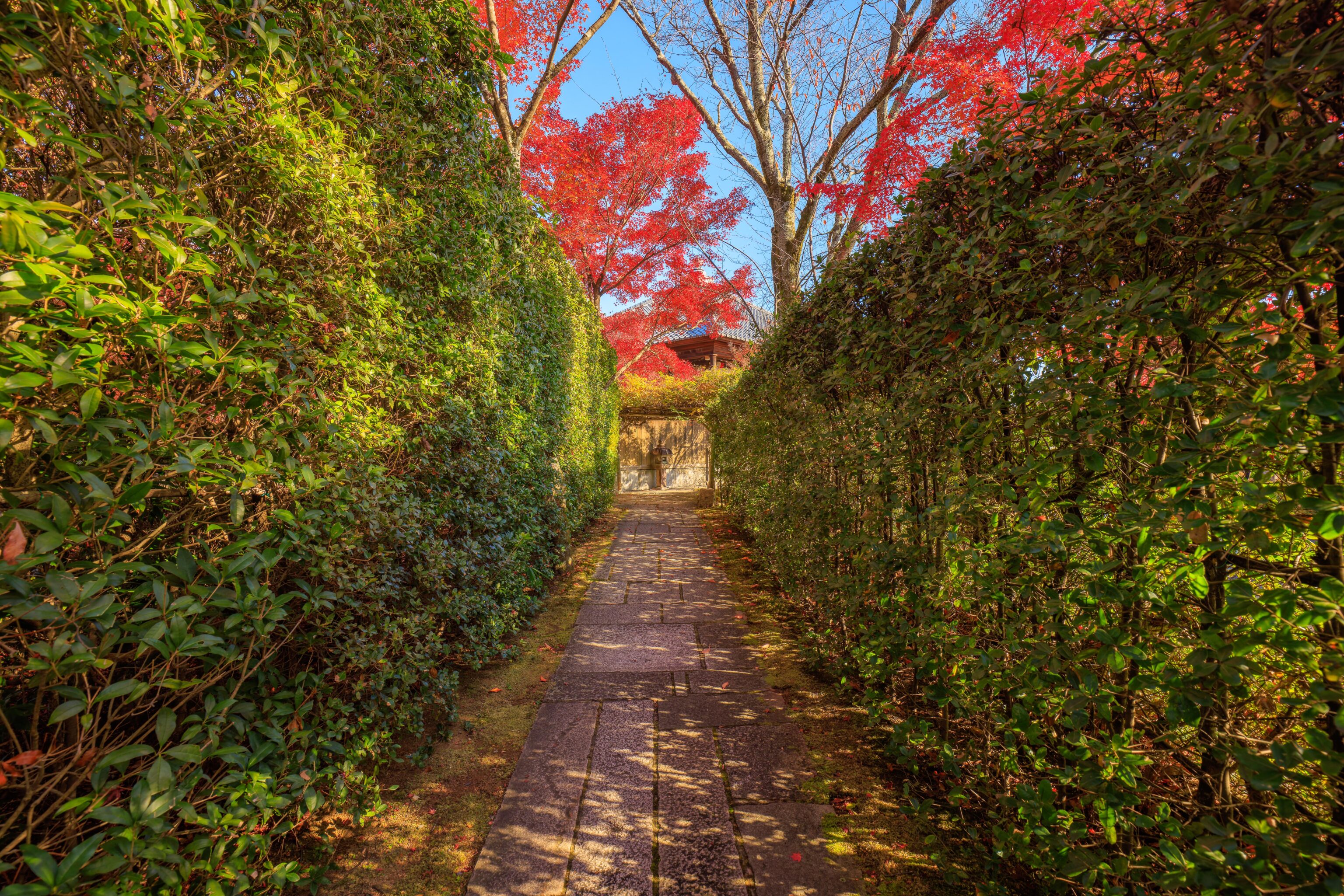
We passed through a hedge corridor on the way to the exit.

We exited the temple via the same route we entered on. There is actually an entrance gate on the entrance road.
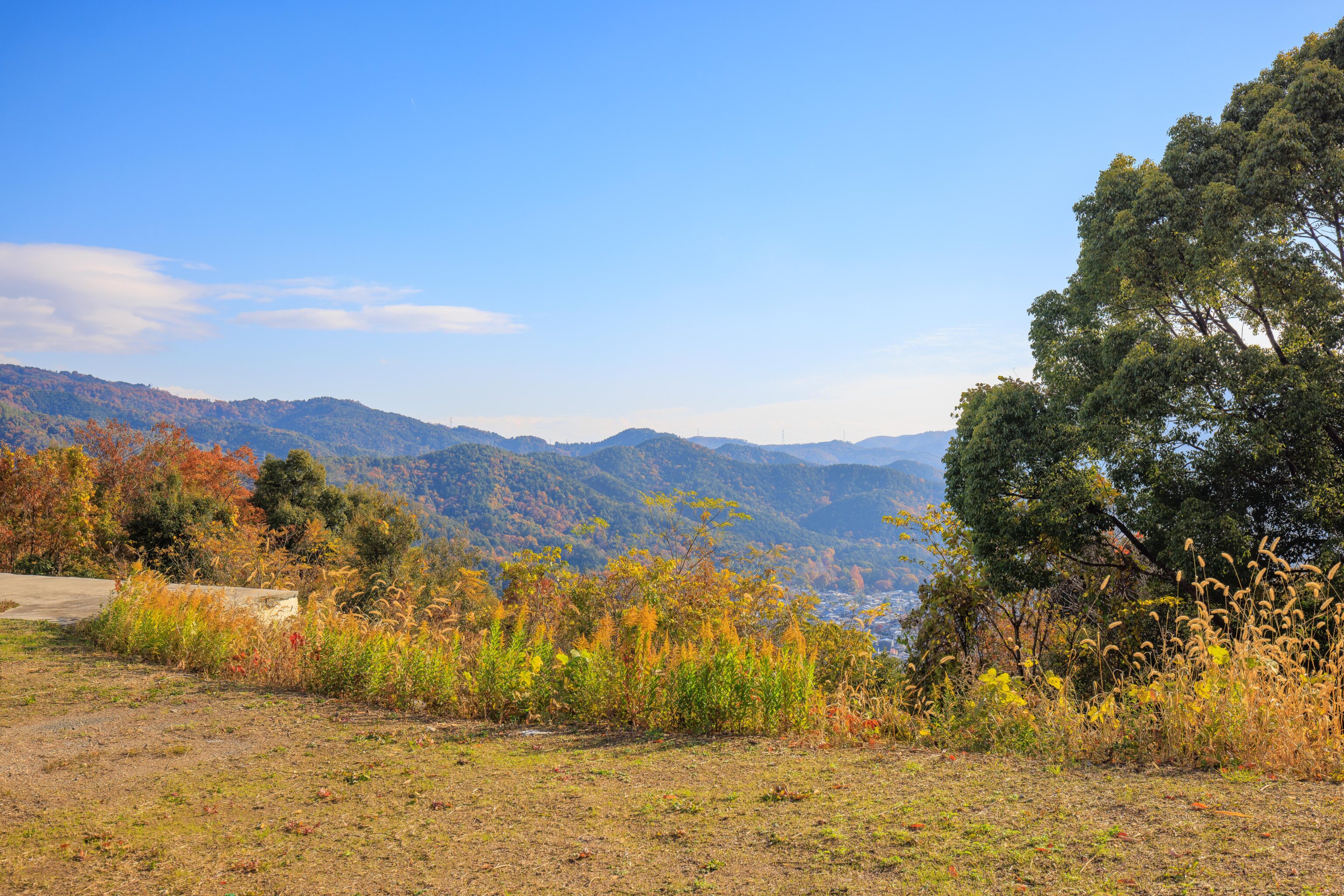
There is a small park on the far side of the parking lot, to the southeast. The view is unfortunately blocked as there is a fence limiting access. This was about as much as we could see to the southeast.
There is a hiking trail that starts around here. It is possible to hike down to the city, though we’re not sure what condition the trail is in.
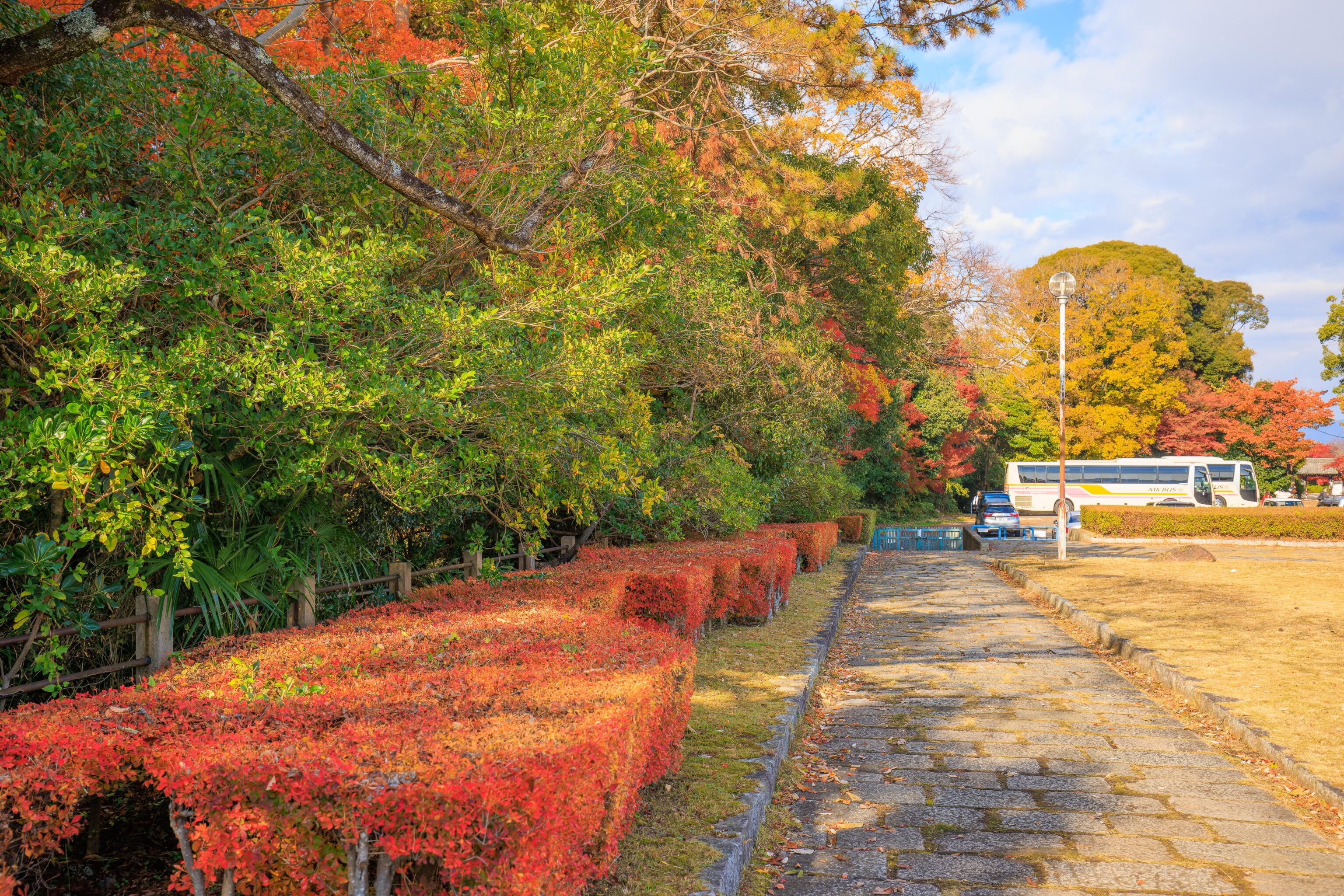
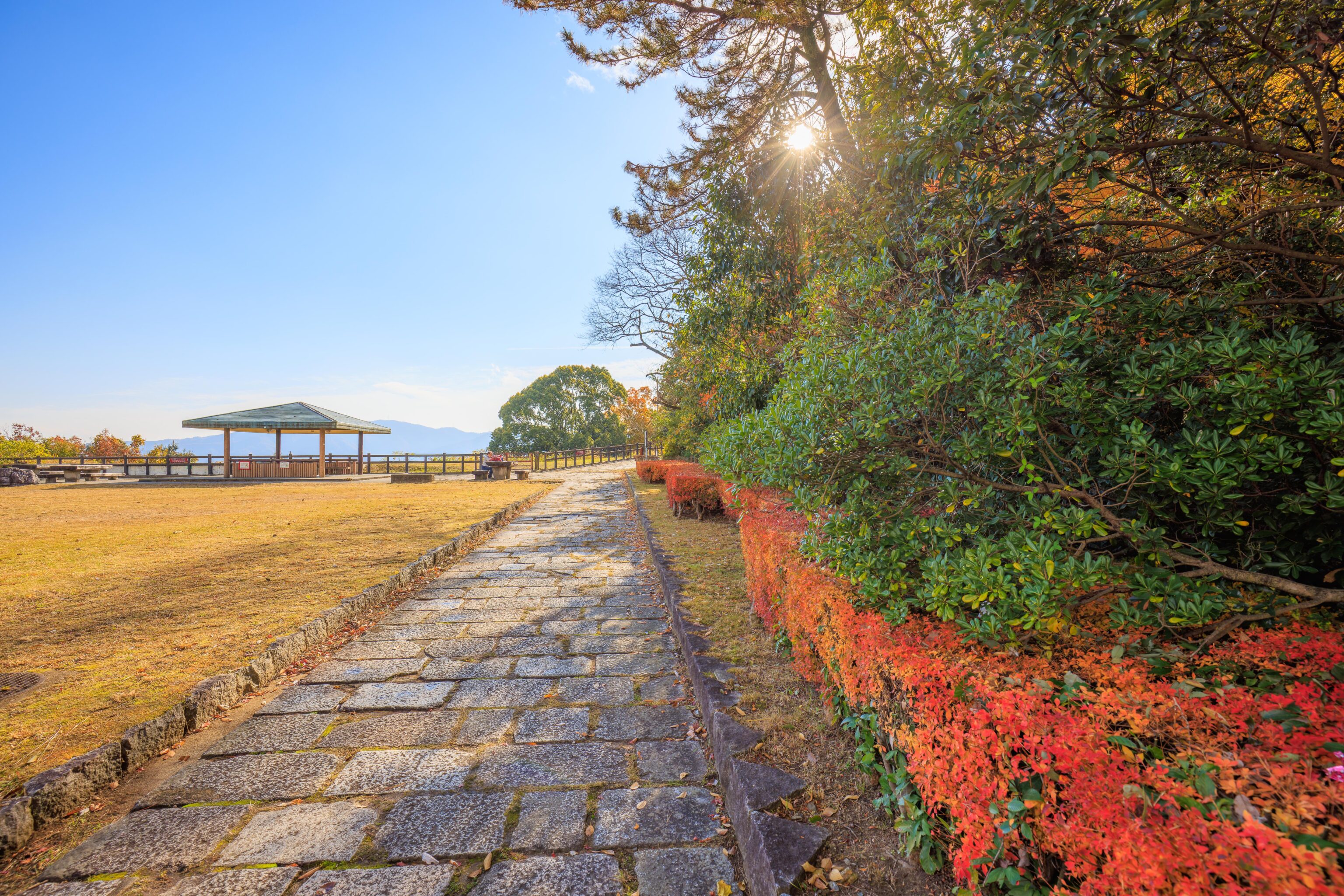
These red bushes were nicely trimmed. We waited nearby for a few minutes as we were a bit early for the next bus down.
Kamo River by Sanjo
After returning to the Sanjo Keihan Station, it was almost time for lunch. But we had a bit of extra time so we went to take a look at the Kamo River, right across the street to the west.

The Sanjo Keihan Station is right next to this bridge, the Sanjo Ohashi Bridge. It looks like it was recently renovated with new wood railings.

The area around the bridge is pretty busy in terms of car traffic. But it was also quite nice with plenty of trees by the river.

Herons are common here. We spotted a Gray Heron perched on a small rock in a shallow section of the river.

A down river view from the southeast corner of the bridge.
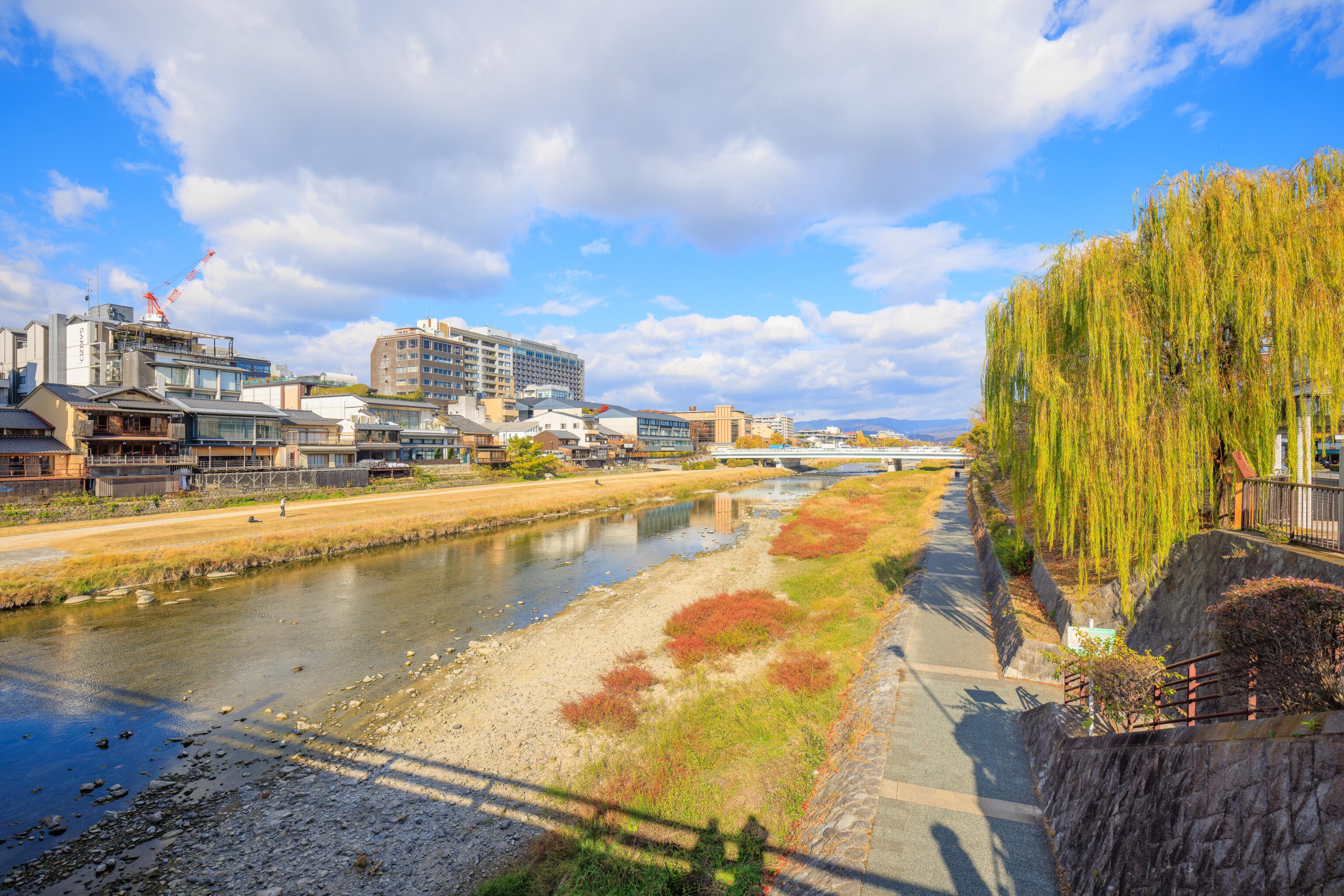
The view in the opposite direction, to the north. The river is lined with various buildings both old and new.
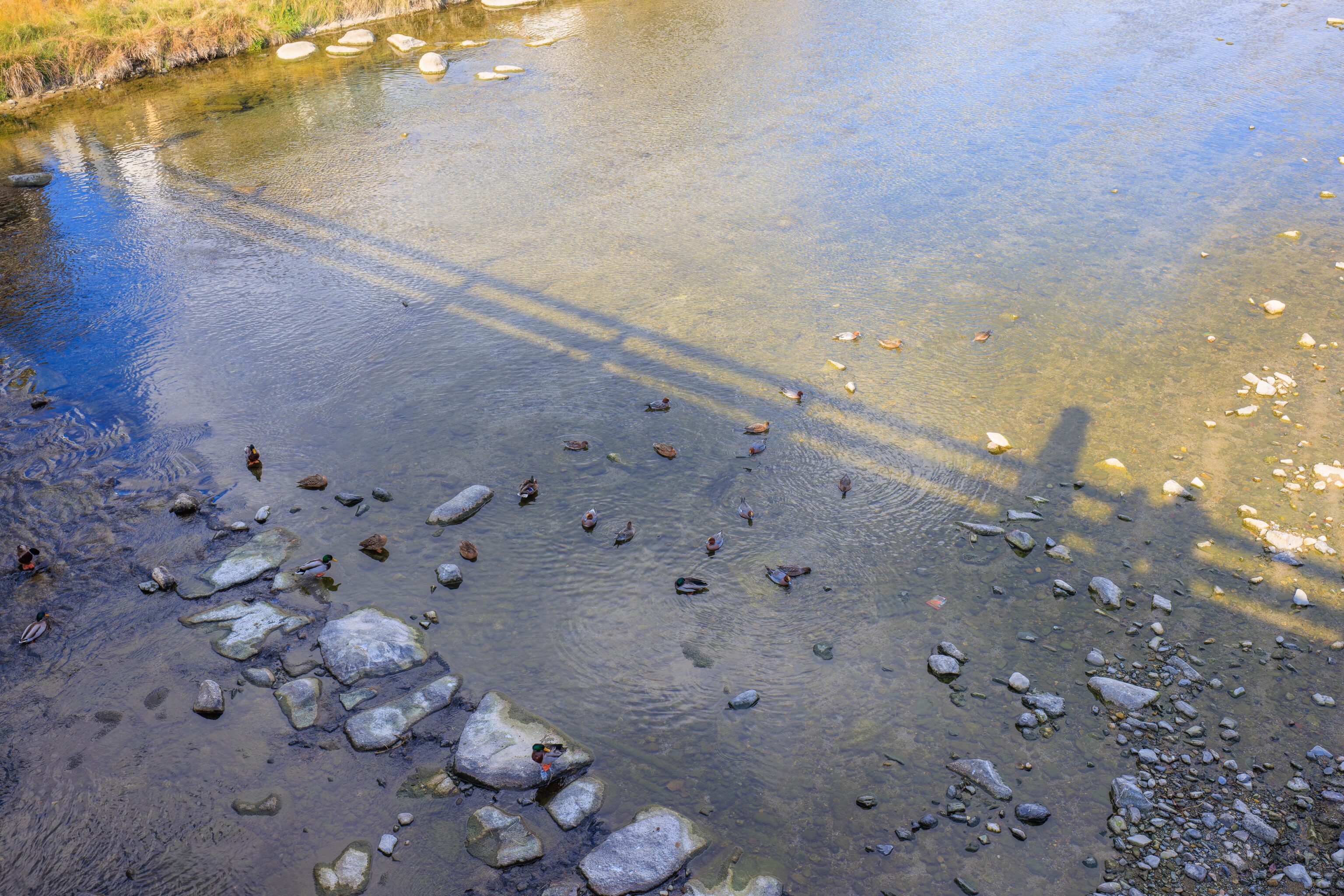
Looking down, we could see ducks in a shaded area below the bridge. There seemed to be two species, Mallards, which we have back home, and Eurasian Wigeons.
Lunch

Now, it was time for lunch! We spotted a restaurant across the street that we wanted to try while we were waiting here earlier in the morning. It’s name seems to be えん, En in English. We still arrived a bit early so waited for a few minutes downstairs by the entrance before being seated as the first customers of the day.

The interior of the restaurant looked very new. And it was, it opened in 2020. It is part of a small chain from Shiga Prefecture, just to the east of Kyoto around Lake Biwa, with four locations.
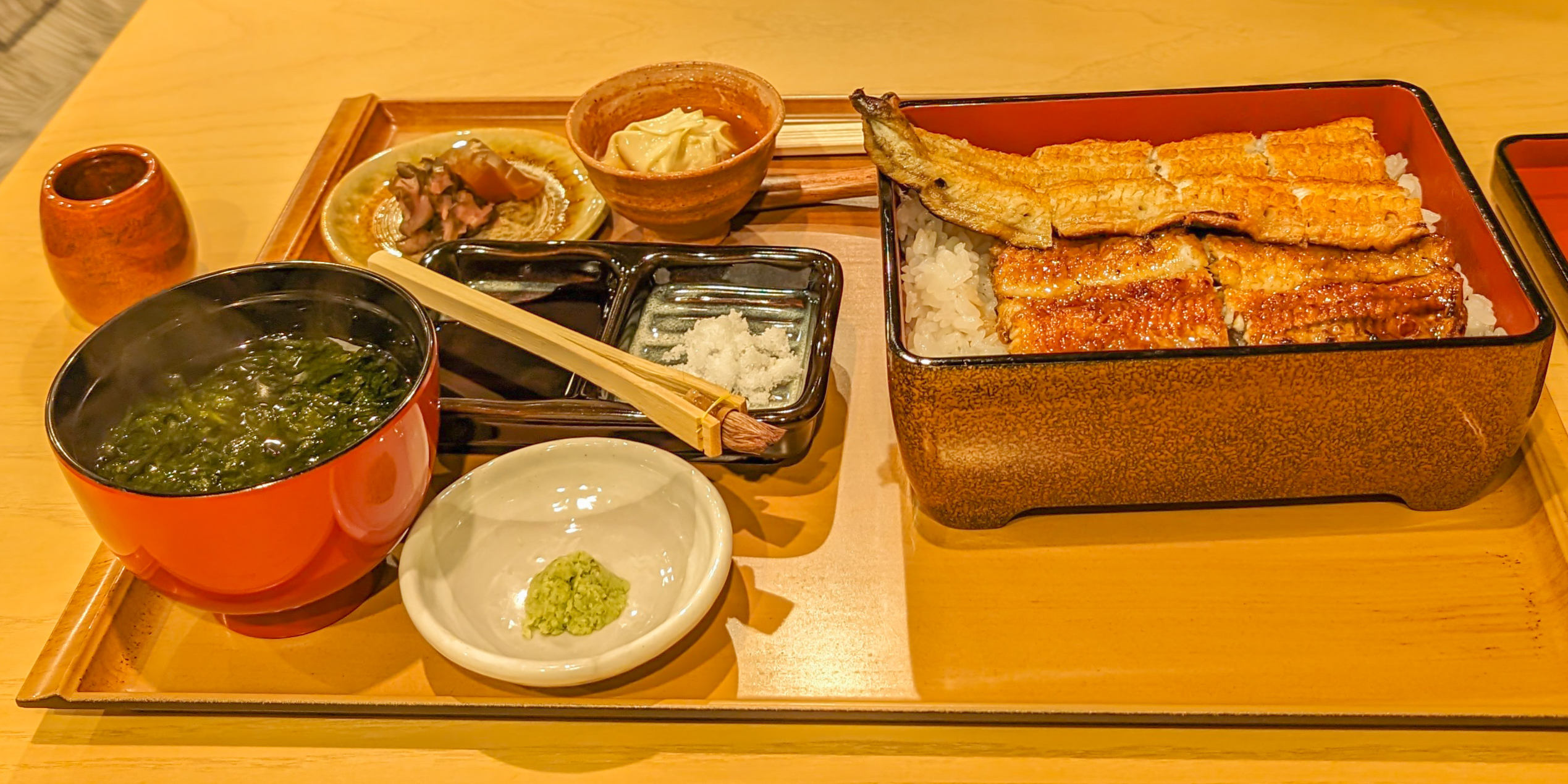

This restaurant specializes in charcoal grilled eel and beef. So, we got both types of meat. For the unagi (freshwater eel), half was without any sauce while the other was lightly marinated, described as kabayaki. Very different from the typical preparation.
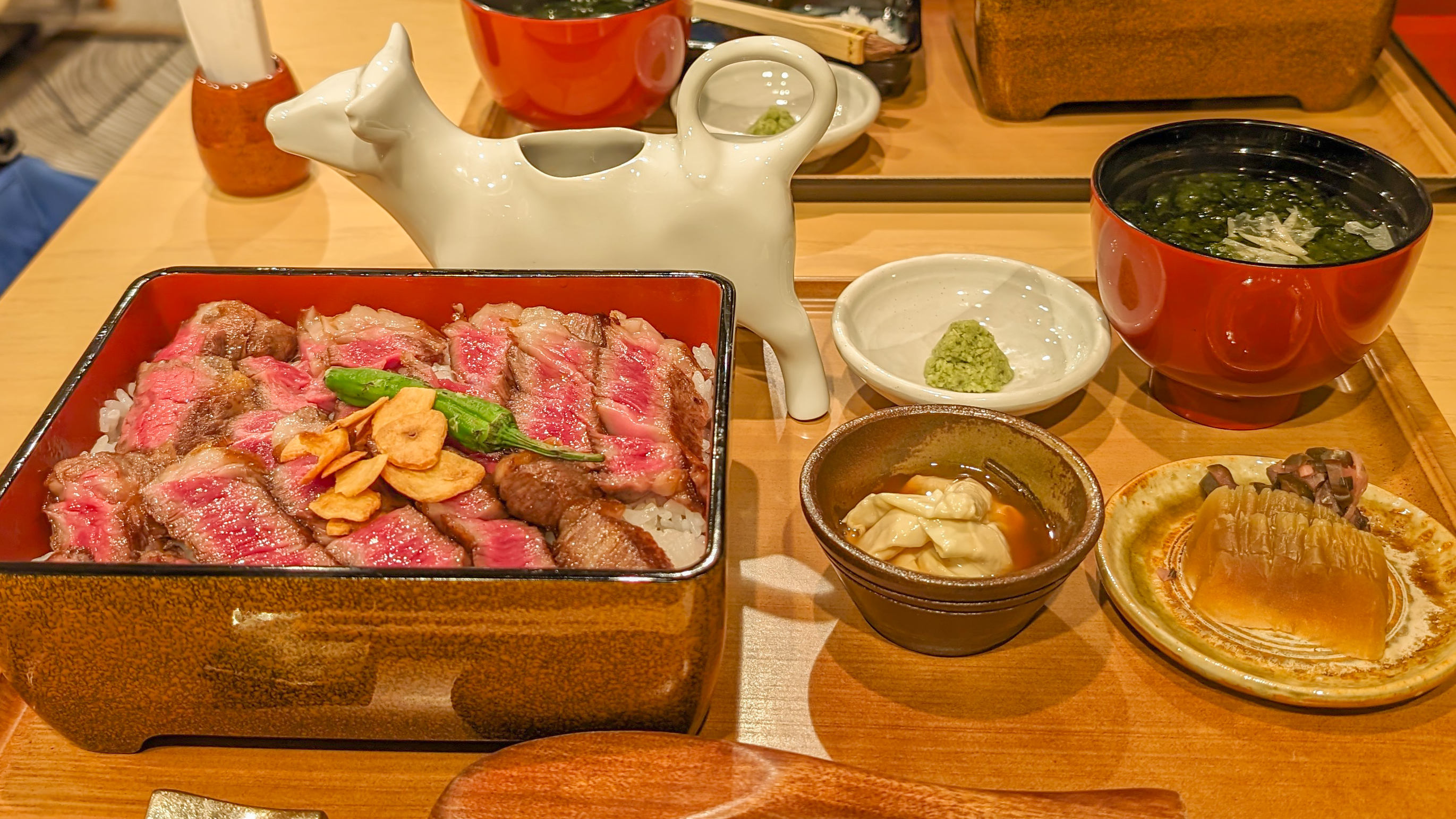

The beef was Omi Beef, from Shiga Prefecture where this restaurant is from. Omi was the historical name for Shiga. Like the eel, i twas fantastic! Salt, soy sauce, and wasabi were available as condiments for both dishes. The beef also came with a different soy based sauce, in a cow shaped container!
Shoren-in
After lunch, we headed to Shoren-in. This temple is below and to the northwest of Shogunzuka Seiryuden. There are a variety of ways to get there but we ended up just walking.

We passed by a nice tree lined canal on the way. At least, it seems like a canal.

We passed by this entrance to a small park next to the Shoren-in.

Here is the actual entrance to Shoren-in!
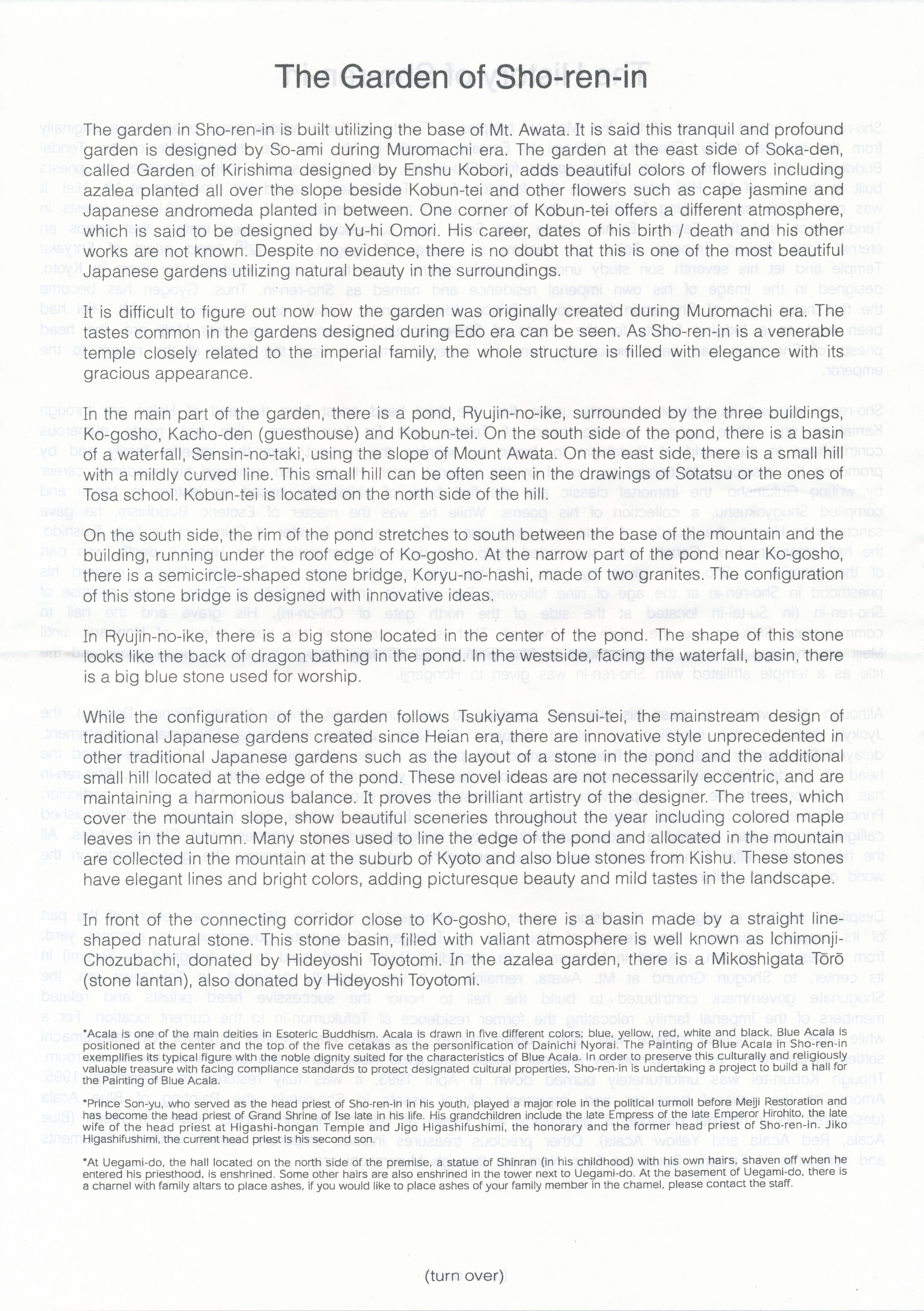

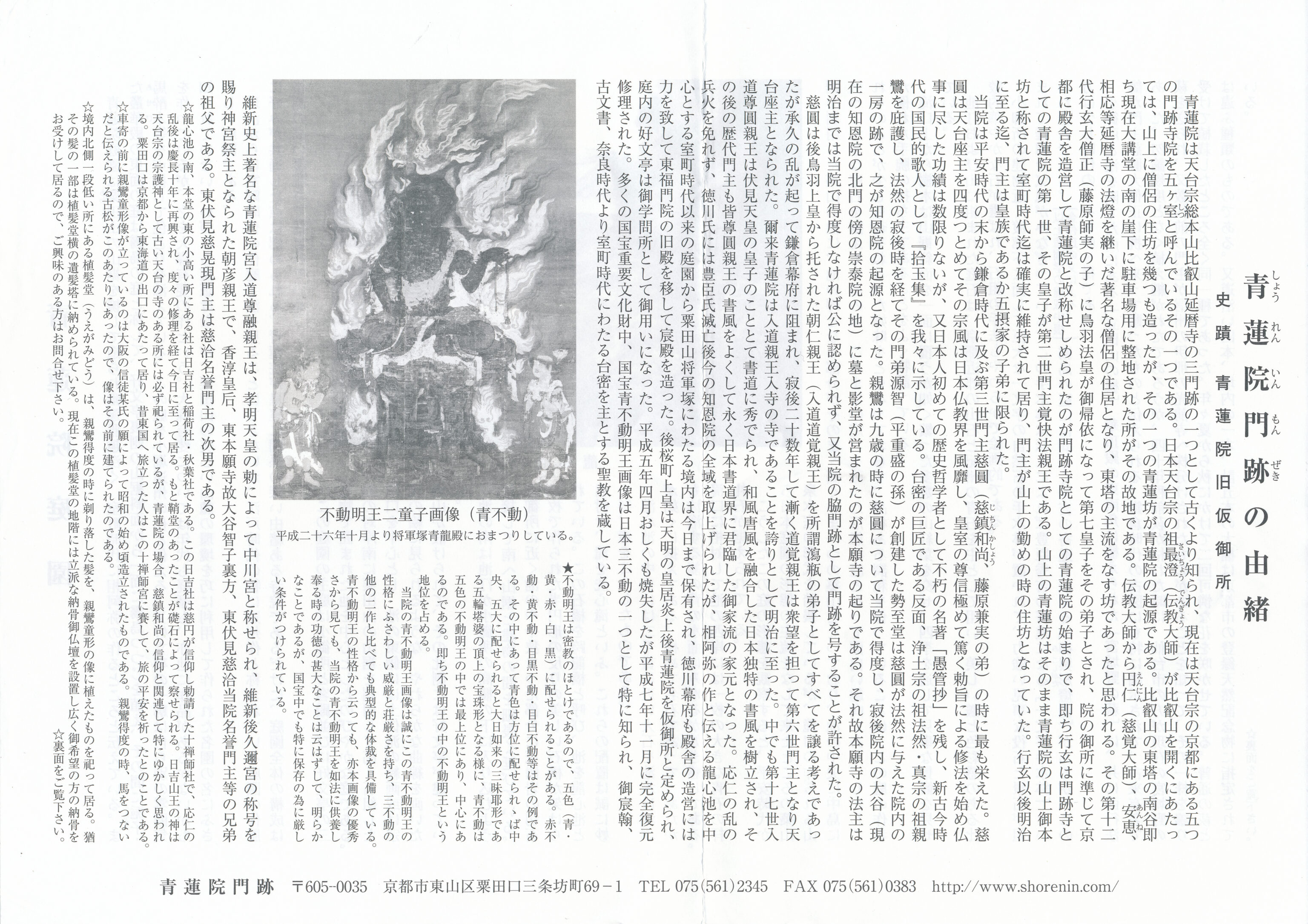
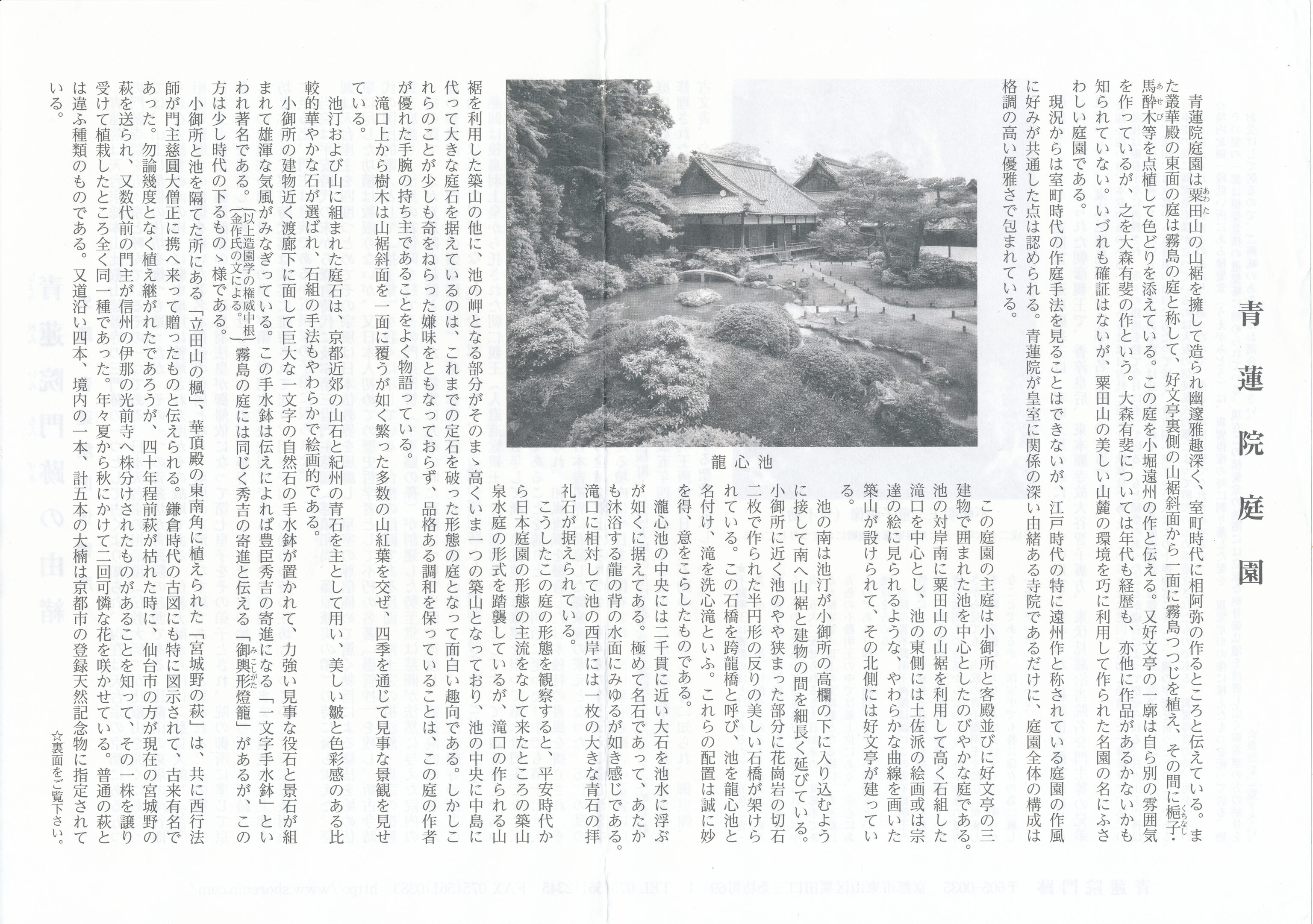

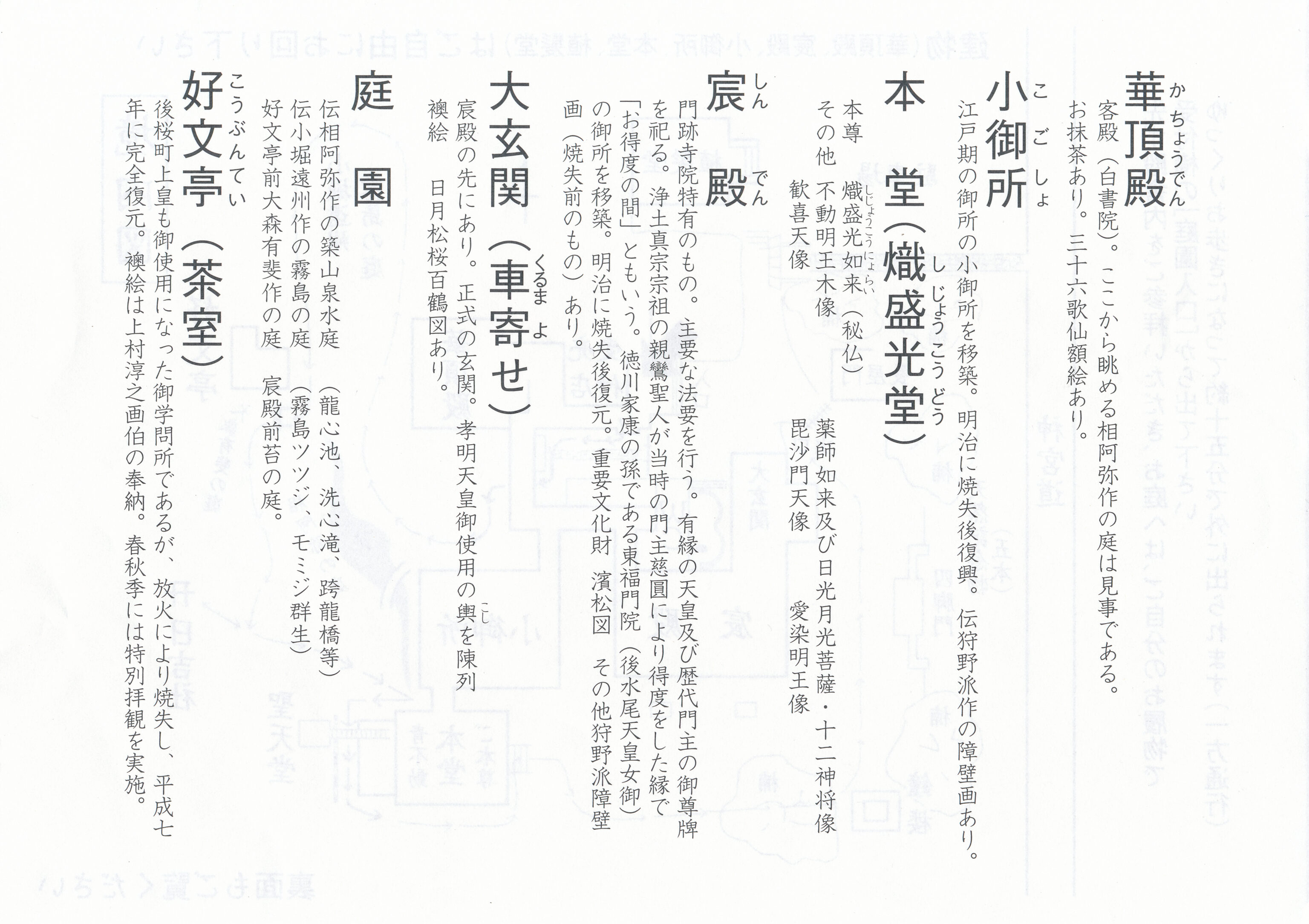
The temple provides some information in leaflet form. Some of the more useful pages, like the map, are only in Japanese. Their website does have a useful page about the temple including a map.

The route starts off in the temple buildings. It was nice and peaceful, quite unlike some of the recent massive crowds that we’ve experienced in the past few days! This building, the Kacho-den, had a view of the garden’s pond and was a nice place to sit! And of course, we did see some fall colors!
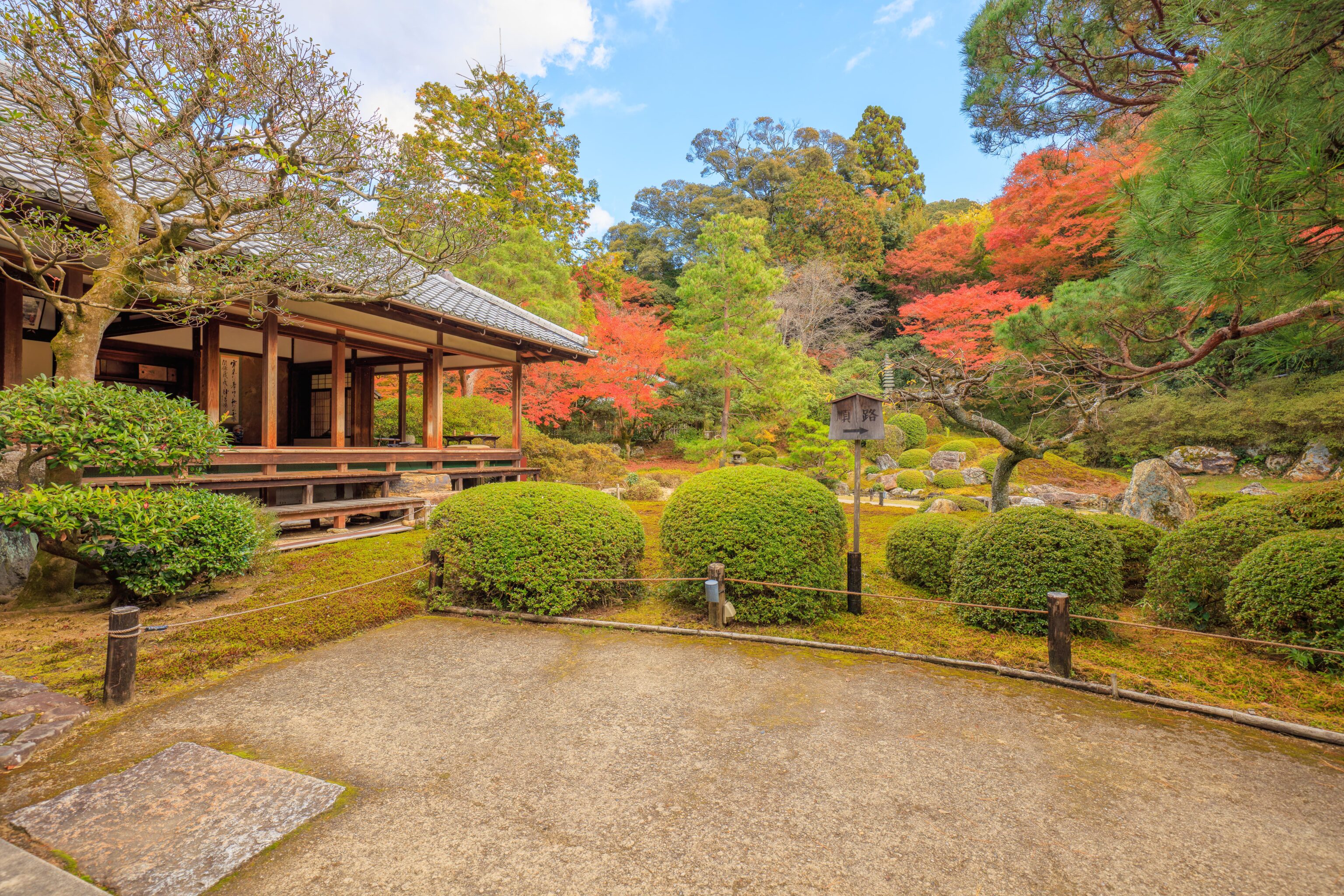

After enjoying the temple buildings, the route transitions to an outdoor one. The Kacho-den, where we were just sitting, is on the left.
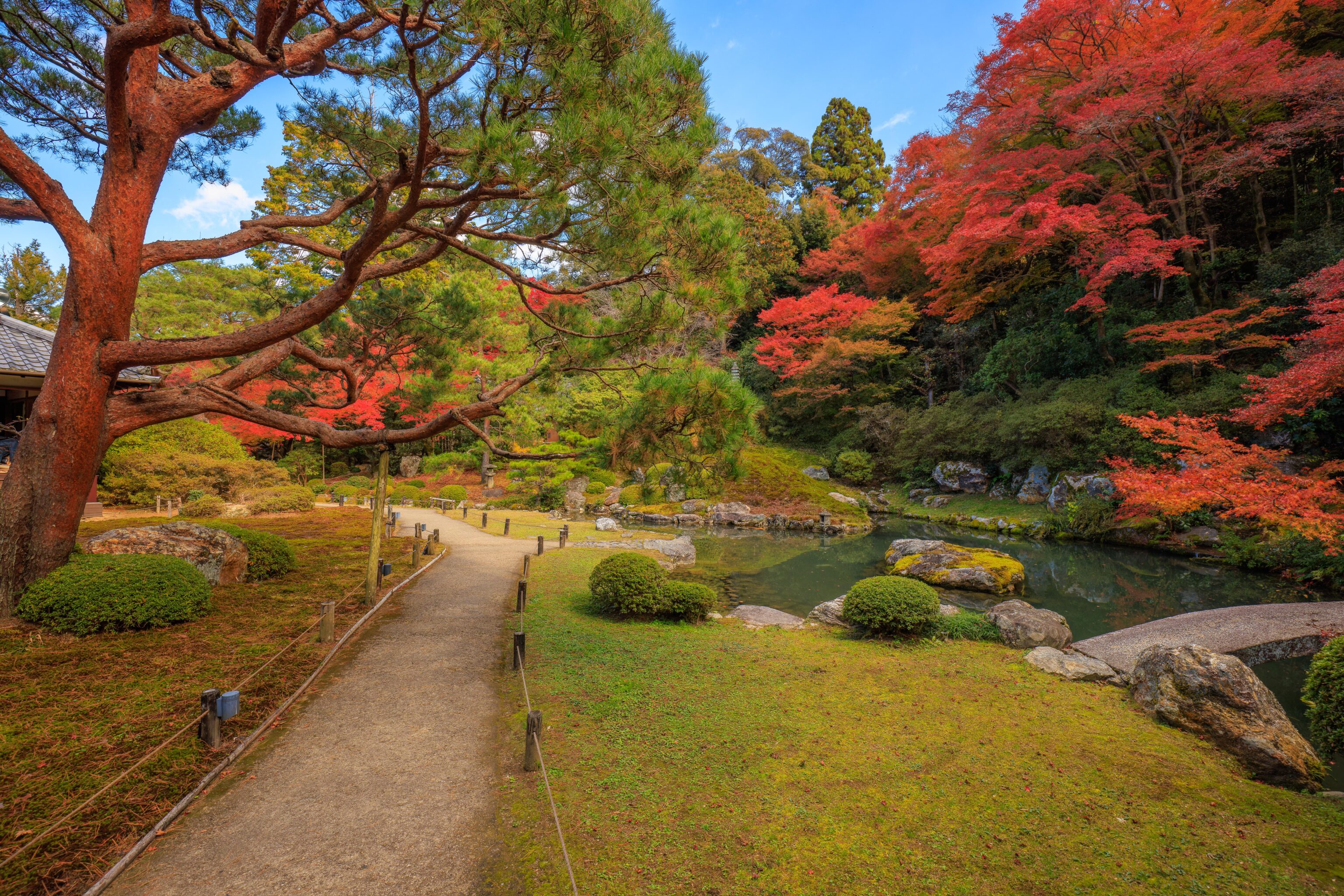
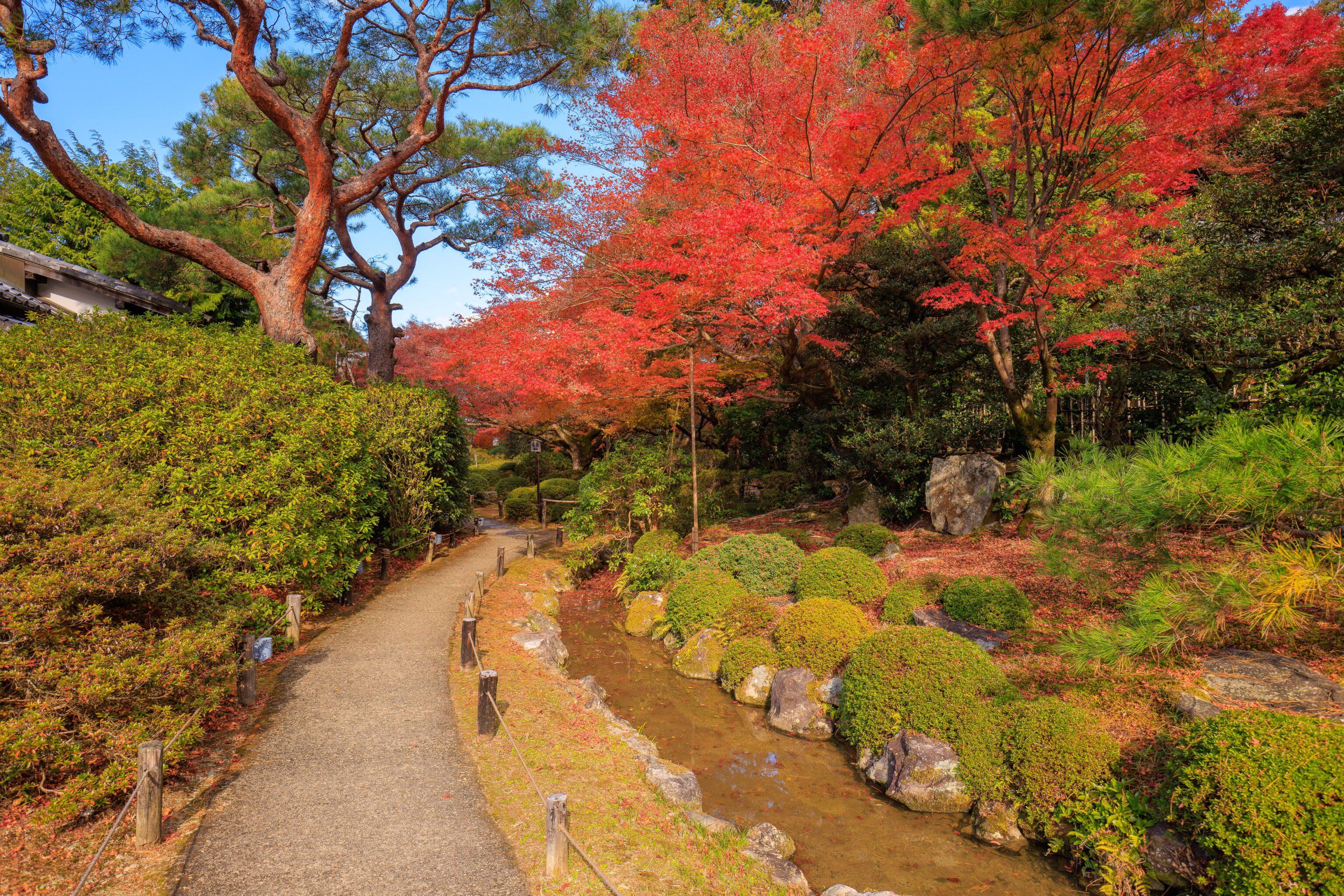

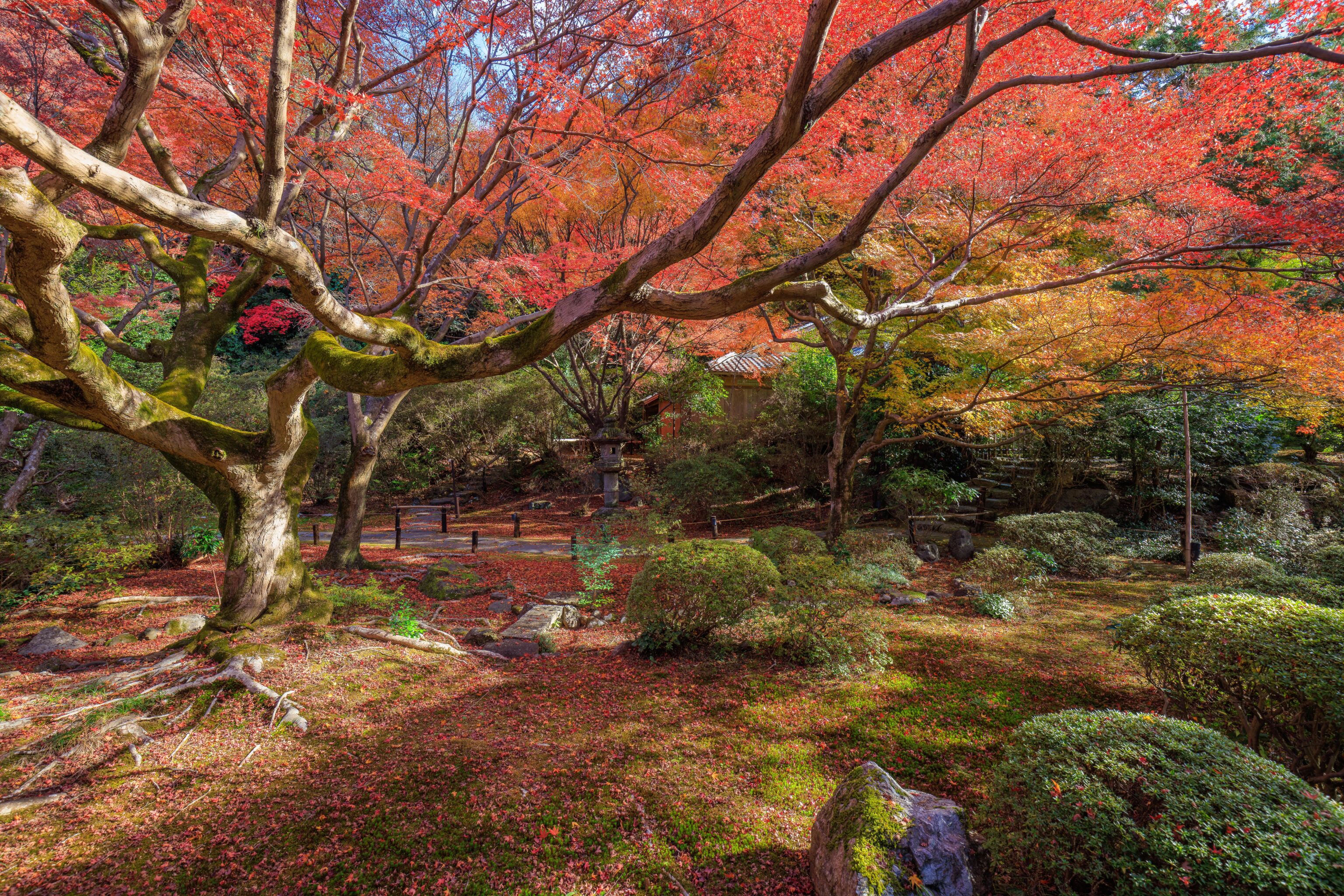
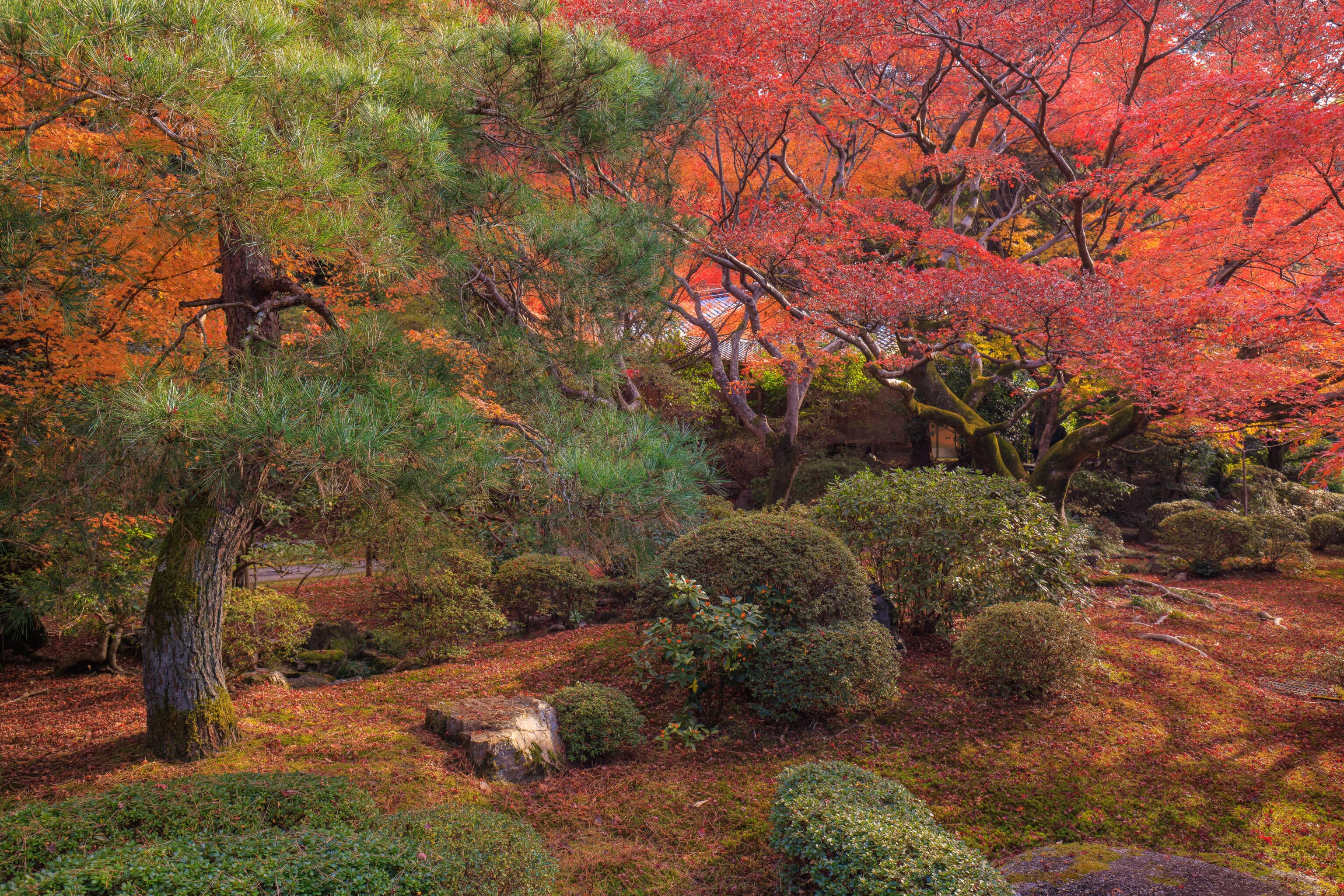
We enjoyed the views as we walked through the garden.

Unfortunately the fall leaves are mostly gone in this scene, but we did notice the clusters of red berries on the plant below. And the presence of a stone lantern in a background.
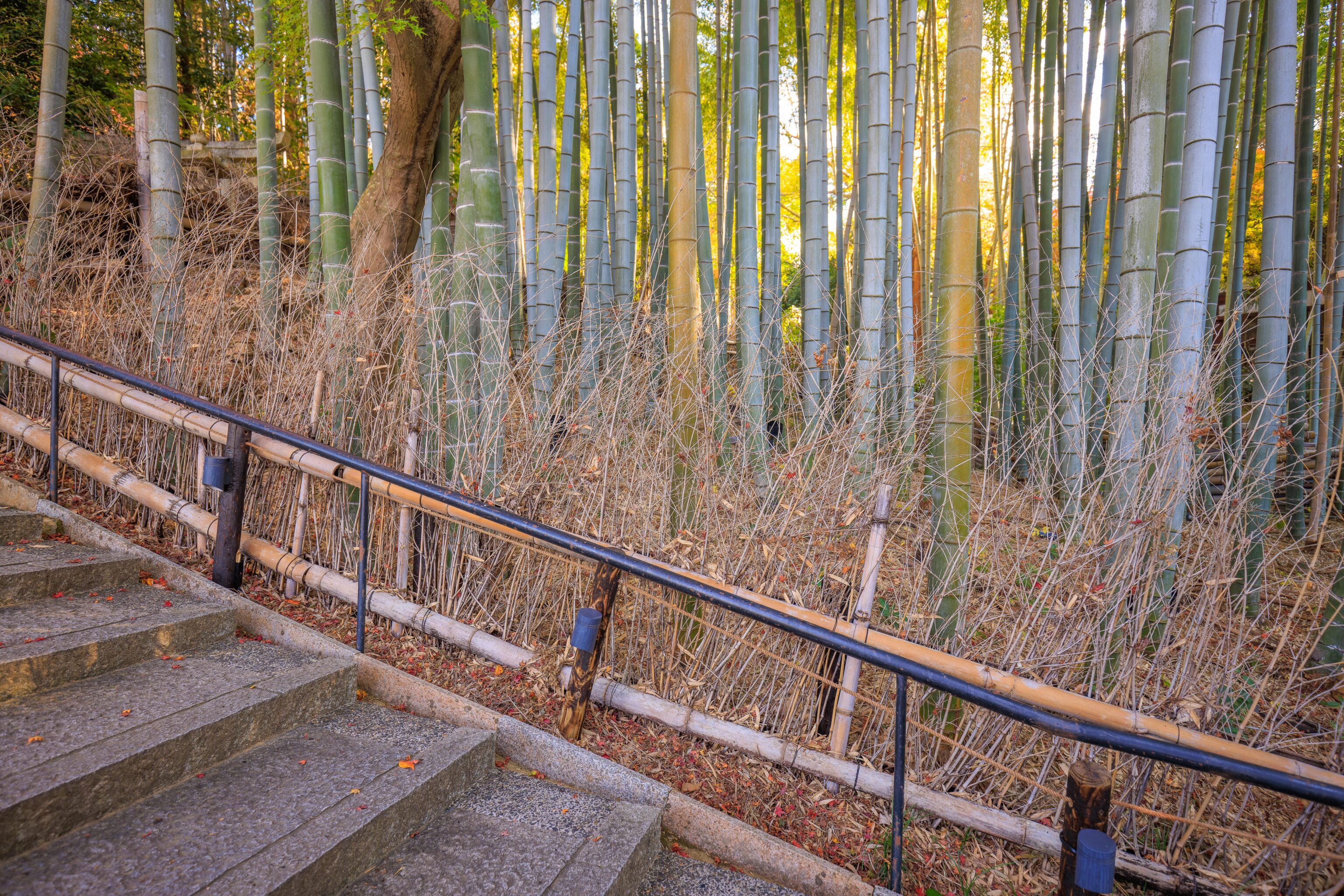
We came to stairs leading up a hill with a small bamboo forest on the far side.
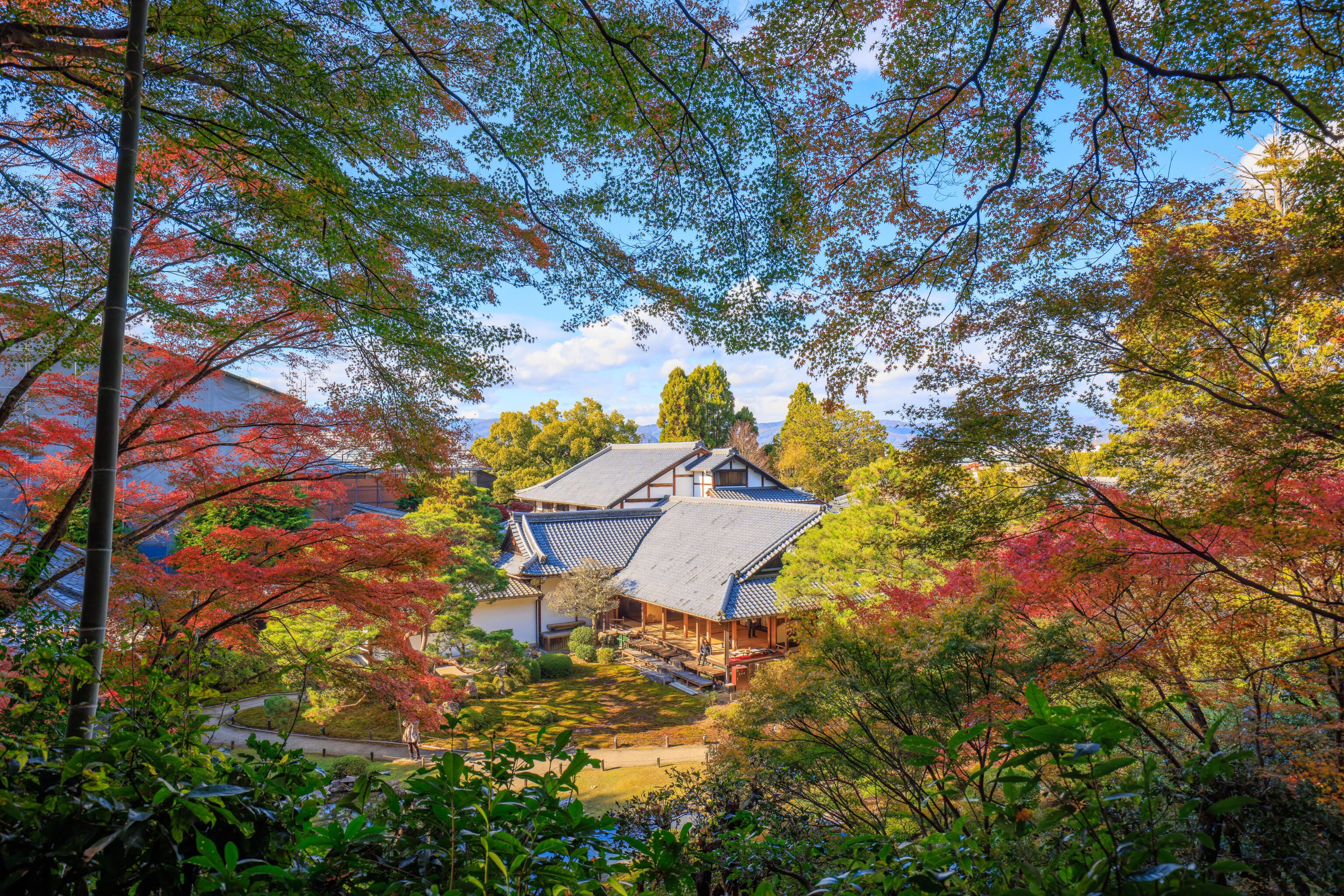
We ended up with a nice view of the Kacho-den below us! There is what appears to be a massive building on the left. It is the Shin-den which is currently being renovated. The way these large scale renovations work at Japanese temples is that they construct a huge temporary structure to fully enclose and protect the temple building while they work.

We ended up at a little Shinto shrine area amidst the bamboo.
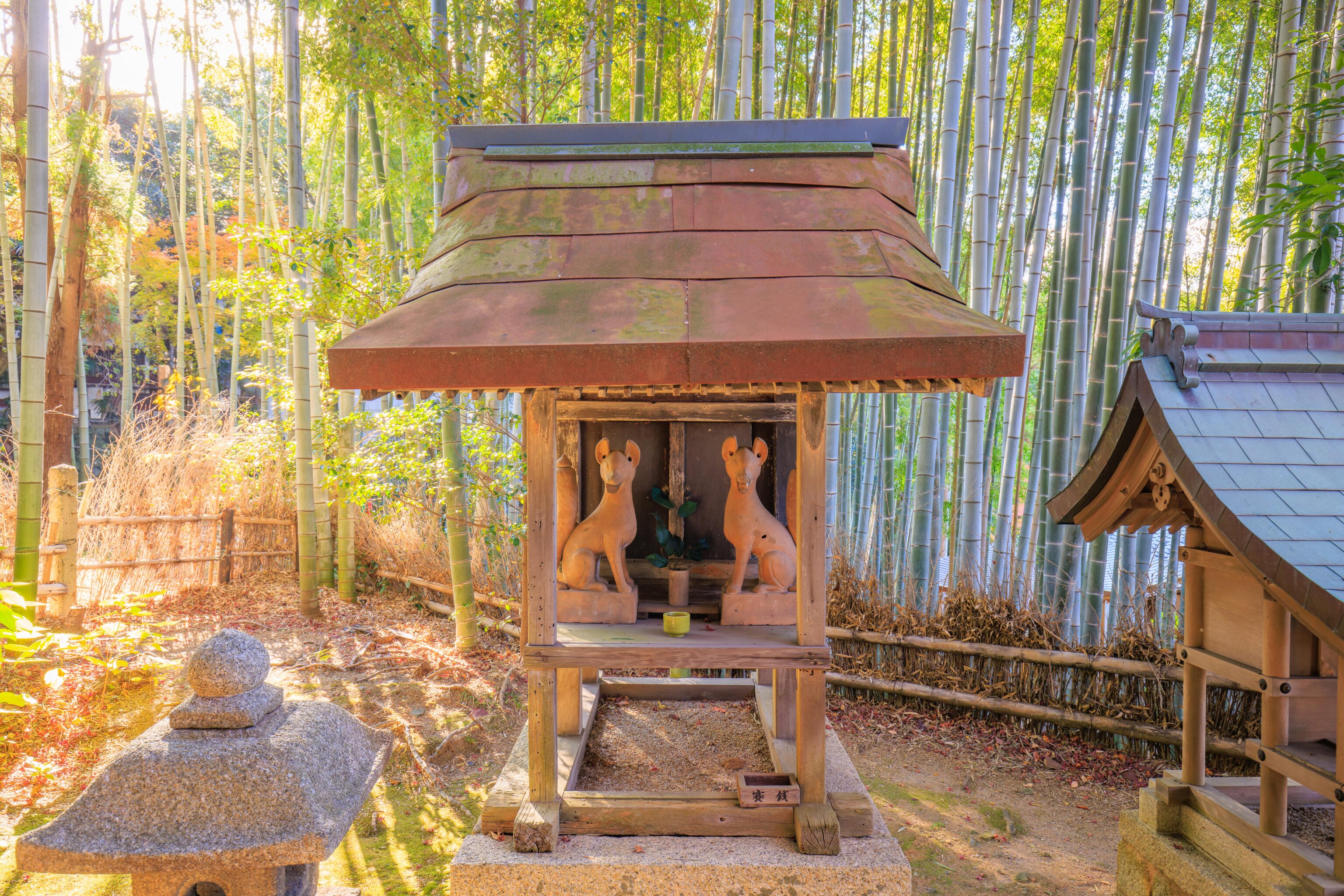
This appears to be an Inari shrine.

We continued on the path as it went back down the hill.

Back down at the temple buildings. We walked through this newer looking structure earlier while on the indoor route. It is probably one of the newest temple buildings we’ve been in!

The path continued past the Shin-den, the building being renovated.

Most of the temples we’ve been to prohibit ringing the temple’s bell. But here, it is permitted!

It was a nice visit!
Chion-in
We headed to the south to visit Shoren-in’s neighbor, Chion-in.

Compared to Shoren-in, which isn’t particularly small, Chion-in is simply huge. There was a conveniently located map by one of the entrances! We didn’t enter here though, we kept walking to the south a bit.

The entrance was through the temple’s massive Sanmon. The name translates literally to three door, but is apparently short for sangedatsumon, gate of the three liberations2. The actual architectural style of this gate is a nijumon. Unfortunately, we were too late in the season to see fall colors on the trees in front.
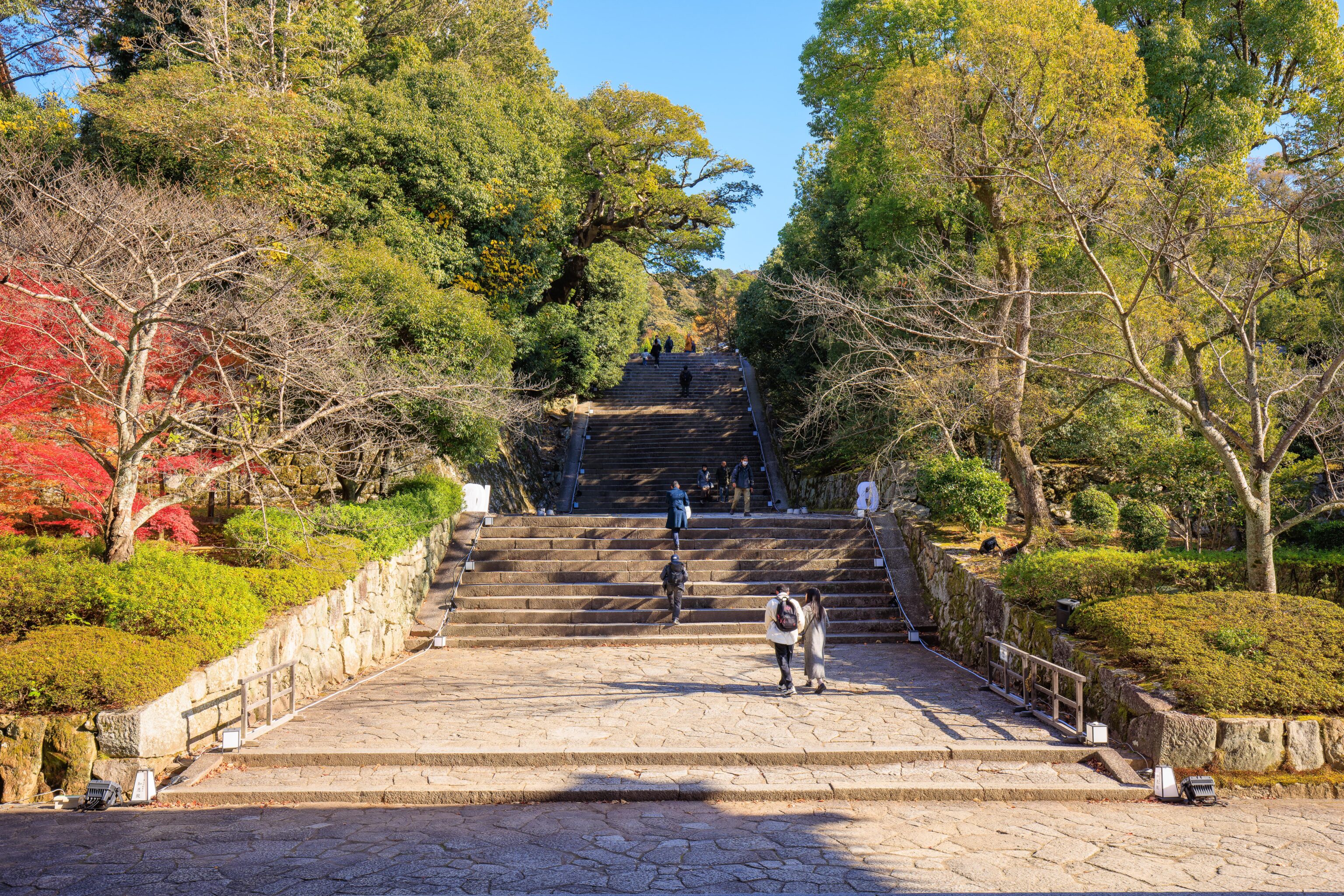
After passing through the gate, we saw stairs. And then more stairs beyond those stairs.
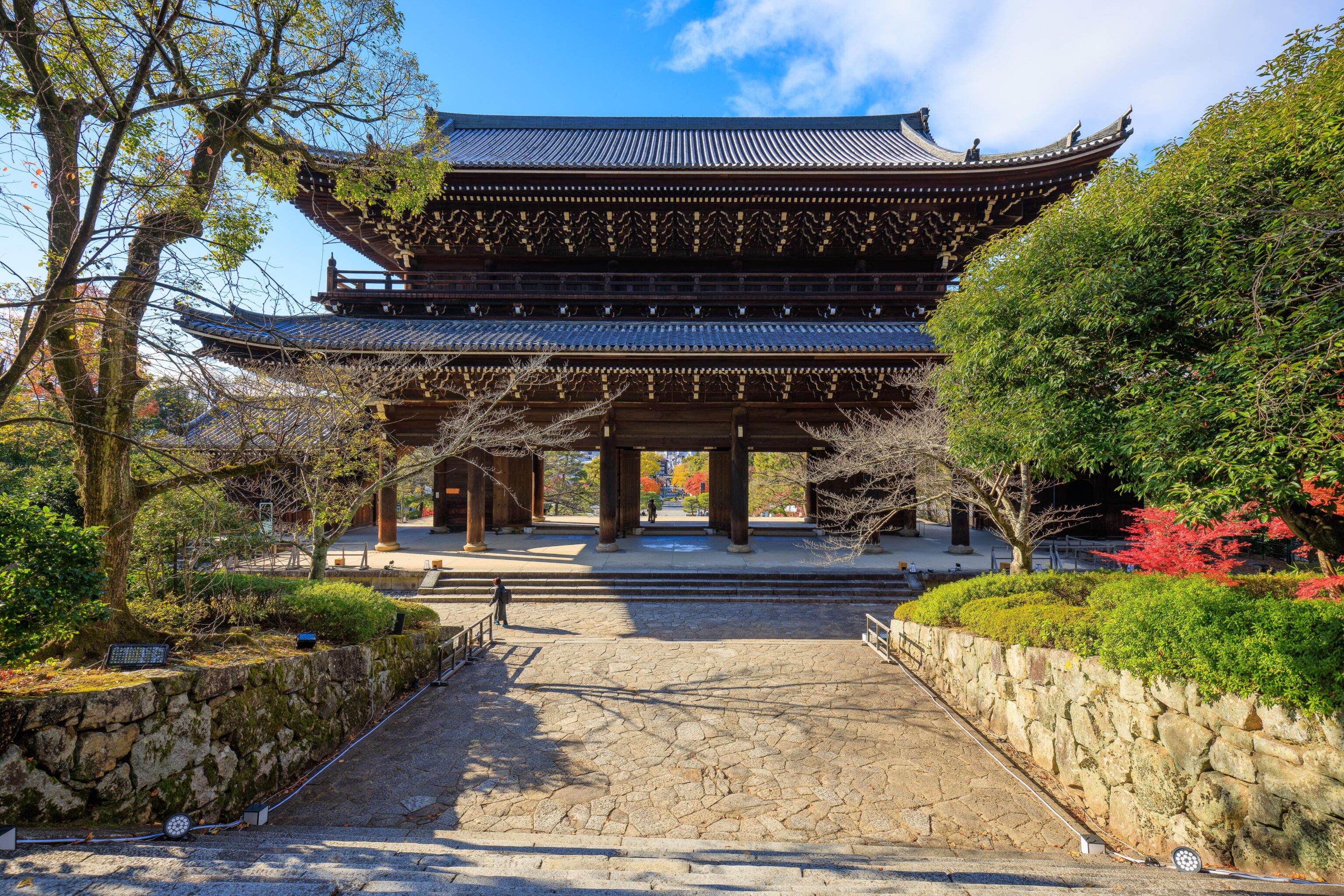
We looked back at the Sanmon after ascending the first flight of stairs.

And again after finally reaching the top!

We noticed this little Japanese maple as we approached the temple buildings.

Vending machines are everywhere in Japan. But the combination rest house and temple shop had more than we’ve seen anywhere else in a single spot! I forget the exact count but it was something like 14.
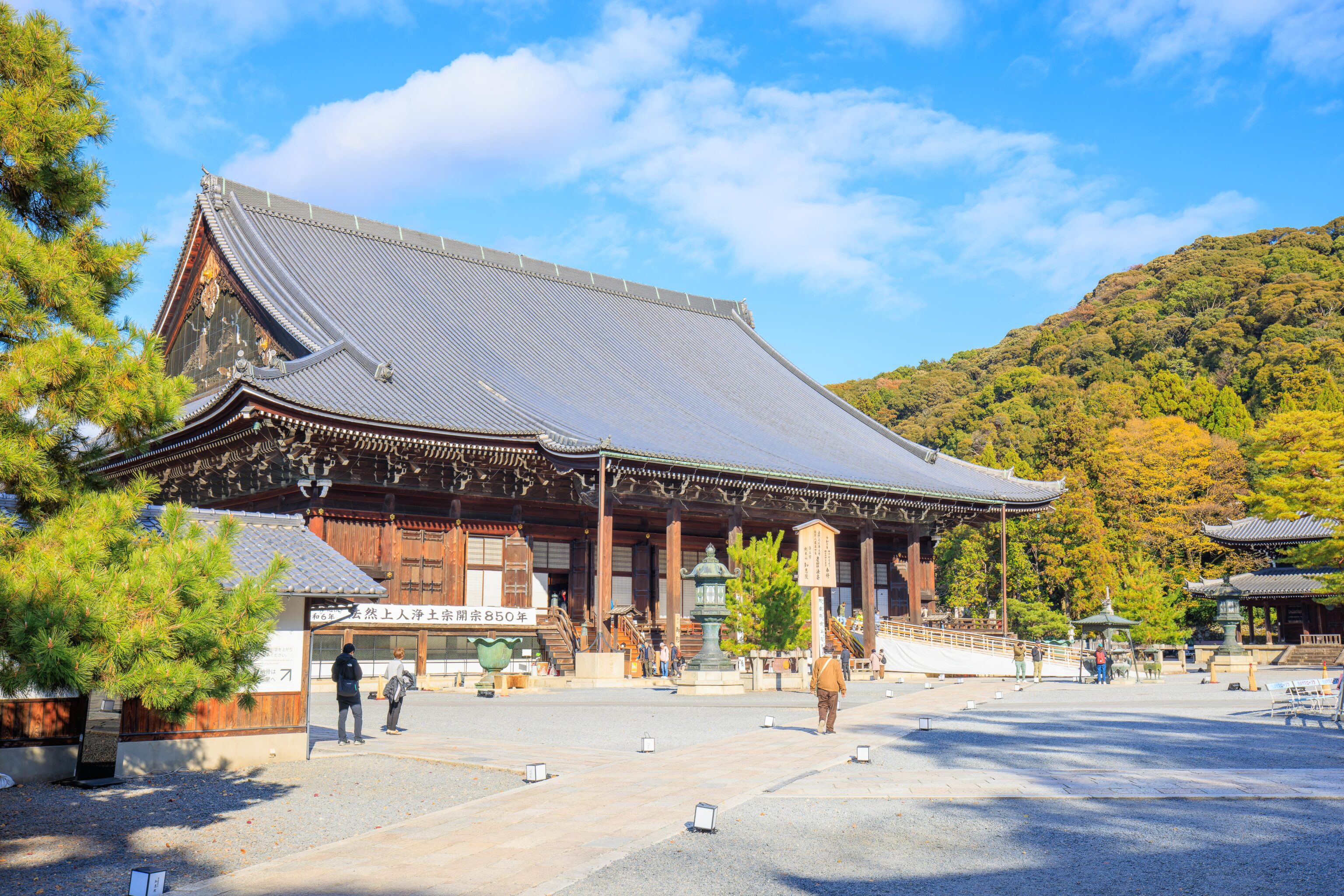
This absolutely massive building is the Mieido. The temple’s website provides an excellent description3:
Since this building houses the miei (sacred image) of the founder, Hōnen, this building is called the Mieidō (hall that houses the image of Hōnen). This hall serves as the center of the Chion-in temple complex. This hall was rebuilt in 1639 by the third Tokugawa shogun, Iemitsu.

This smaller building, the Amida-do, was off to the left.

The massive Mieido again, from by the Amida-do. The much smaller building on the right is the Kyozo.

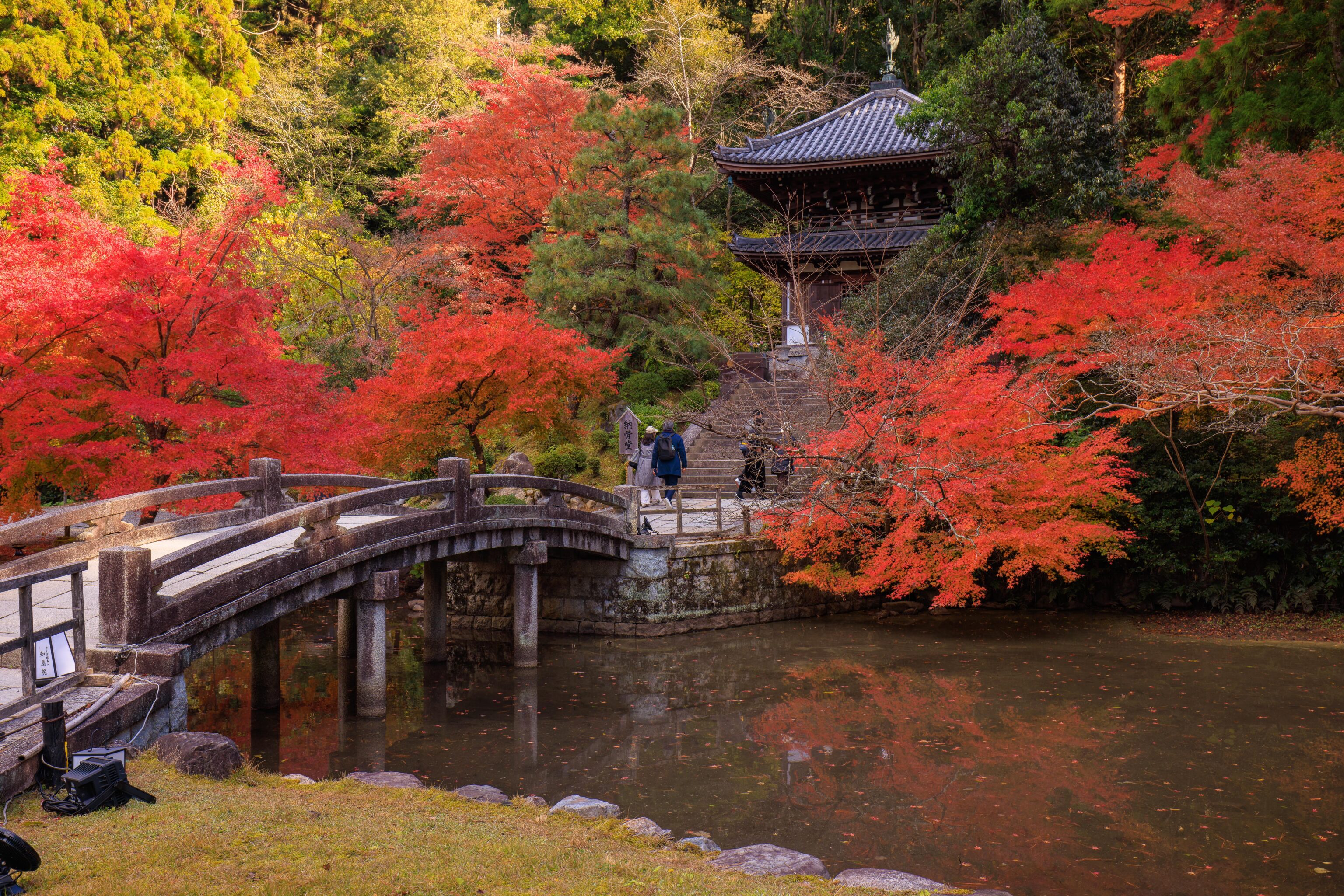
We came across a nice scene next to a bridge over a pond by the Kyozo!
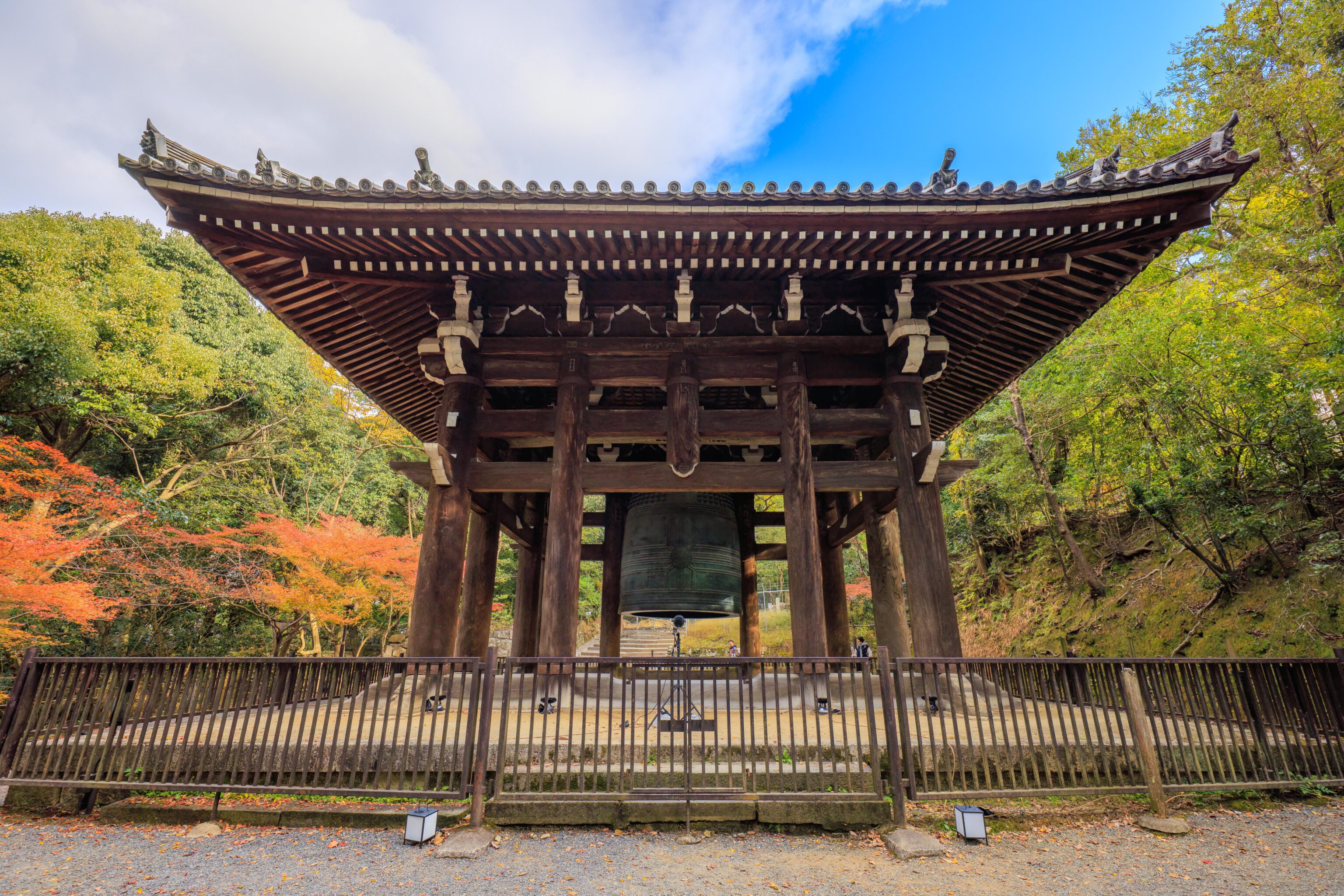
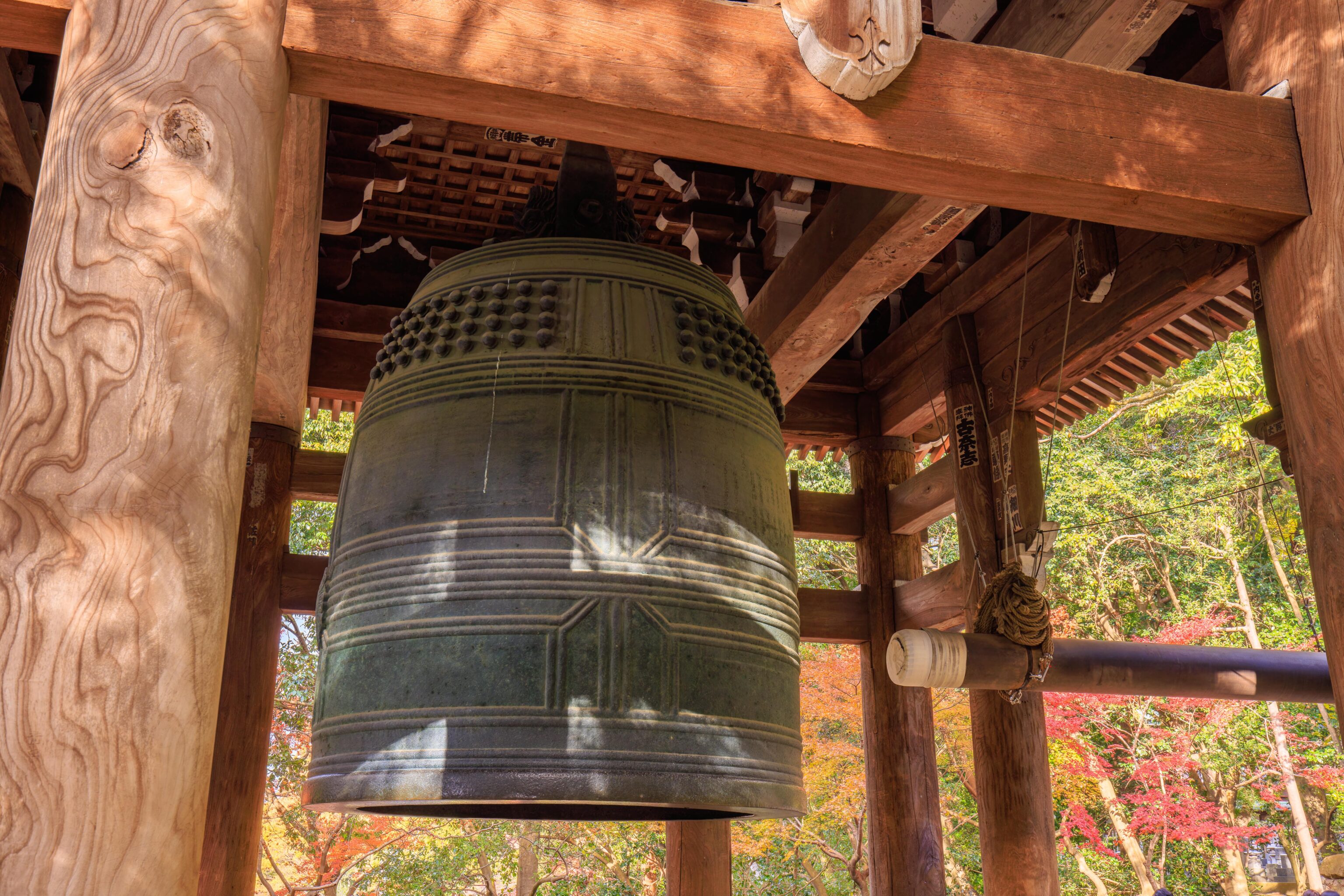
We decided to walk up to the temple’s bell tower, Daishoro. The bell is huge and dates back to 1636. In the US, we love our Liberty Bell, but this one is older, bigger, and isn’t broken!

The hill that the bell tower is on is surrounded by dense foliage so it isn’t possible to get a clear view of the temple buildings below.

We took a different path from the bell and ended up exiting the temple grounds and into the adjacent Maruyama Park. We walked to a small covered rest area, visible at the very bottom of the above photo.

There are apparently aggressive monkeys here! We luckily did not see any.


We didn’t go any further as we didn’t even really start walking through Chion-in yet!

We backtracked and headed back down the stairs by the bell tower to return to the main temple area.

We walked to the north, around the east side of the Mieido, to find more stairs!


We decided to turn around again and head to the entrance to the Mieido.

We passed by this small… Shrine? It is labelled on Google Maps as the 写経塔, Sutra Copying Tower. One of the reviews describes it as a place where sutras written by the temple’s followers are stored and can be copied by hand for 1000 JPY4.
We continued on to return to the front of the Mieido. Photography is not permitted inside so there are no photos of the interior to share.


After briefly taking a look inside, we walked around the west side of the Mieido, remaining on the building’s wooden exterior passageways.
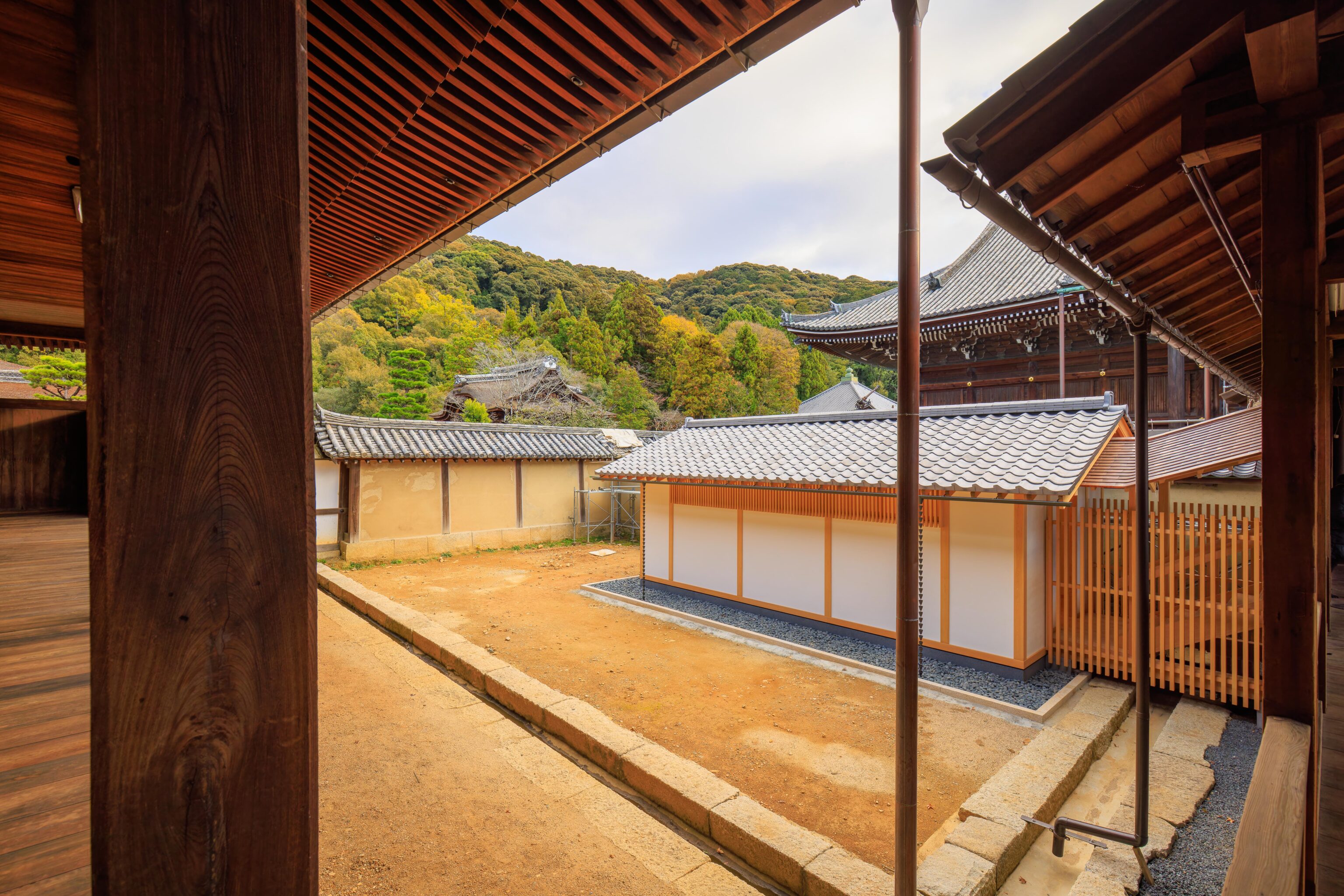
We walked through a covered passageway to the adjacent building to the north, the Shuedo. From here, we entered the Hojo Garden.
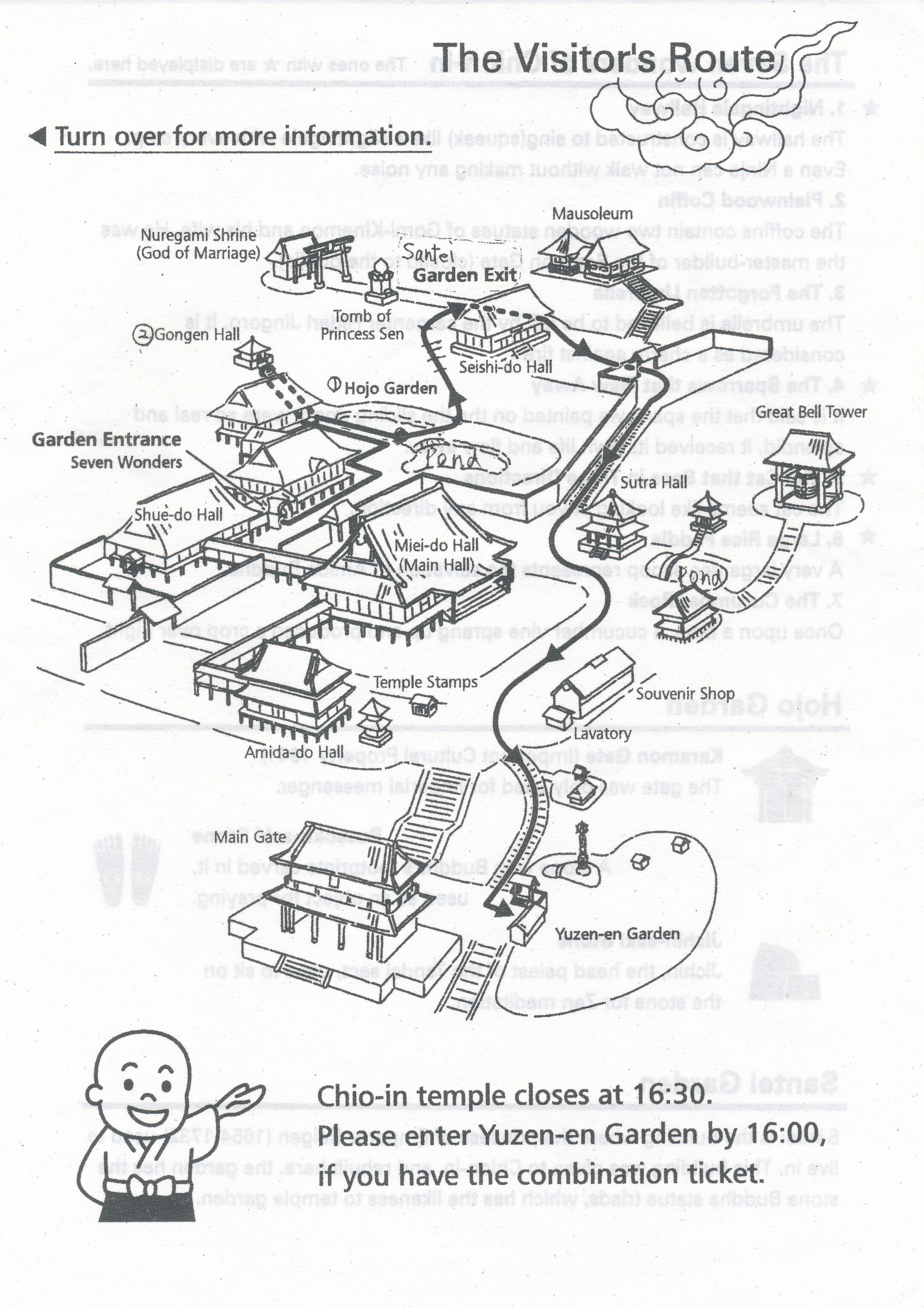
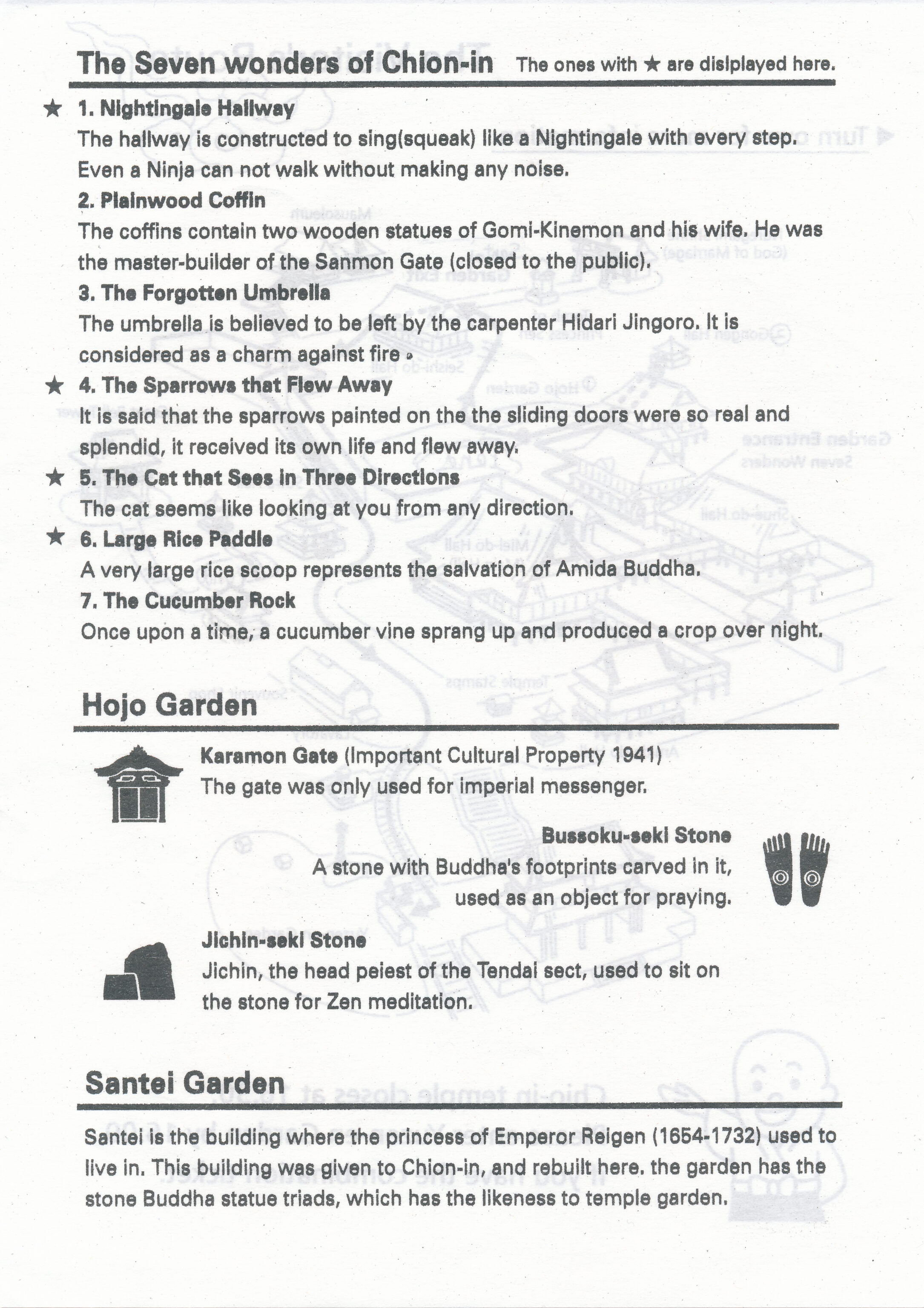
We received information about the garden and route as well as important features to look out for. There are actually two gardens in Chion-in but due to the time we only paid to enter this one.



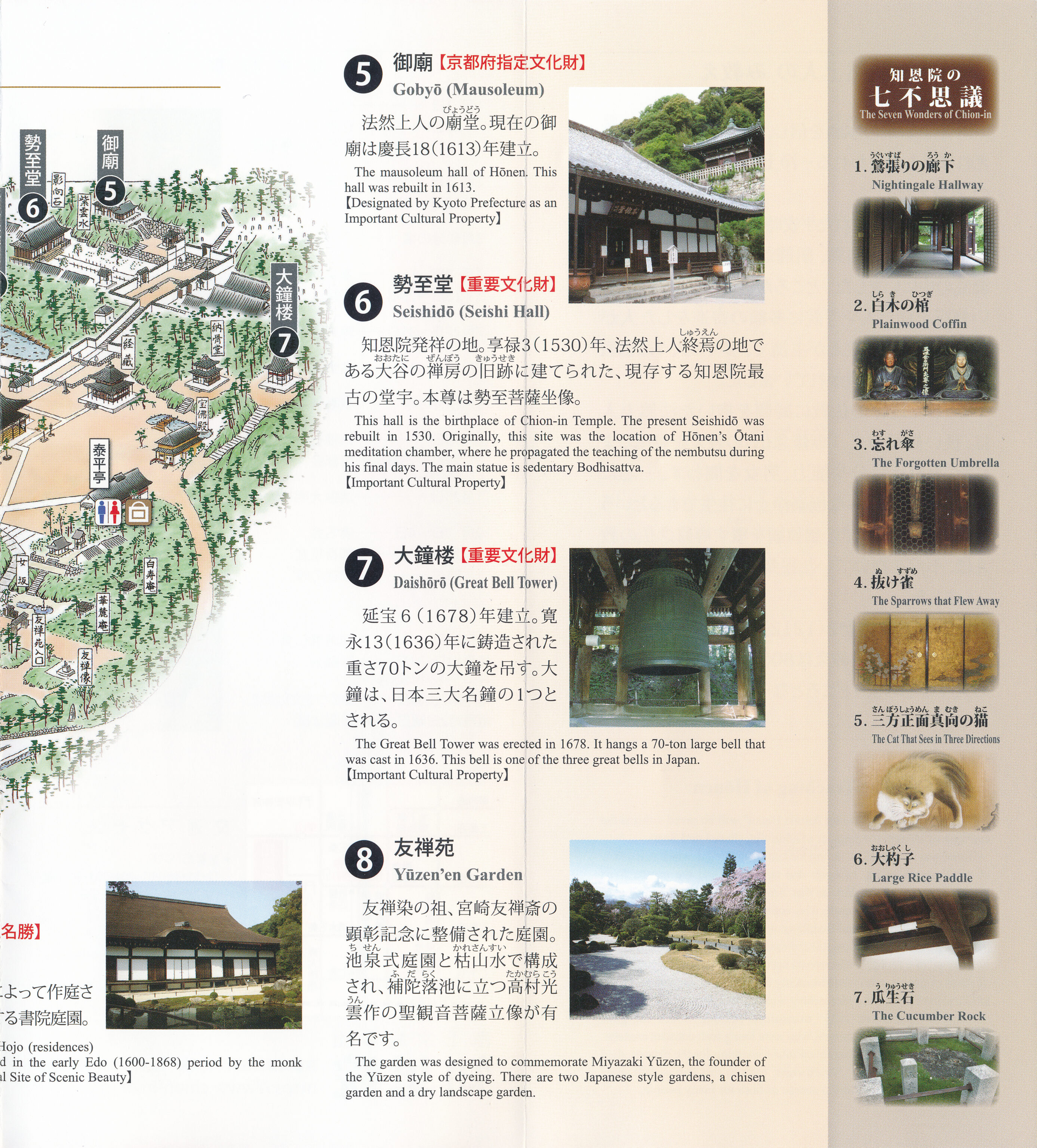
We picked up a pamphlet with some general information about Chion-in and a map.

It was very quiet at the garden with almost no other visitors.

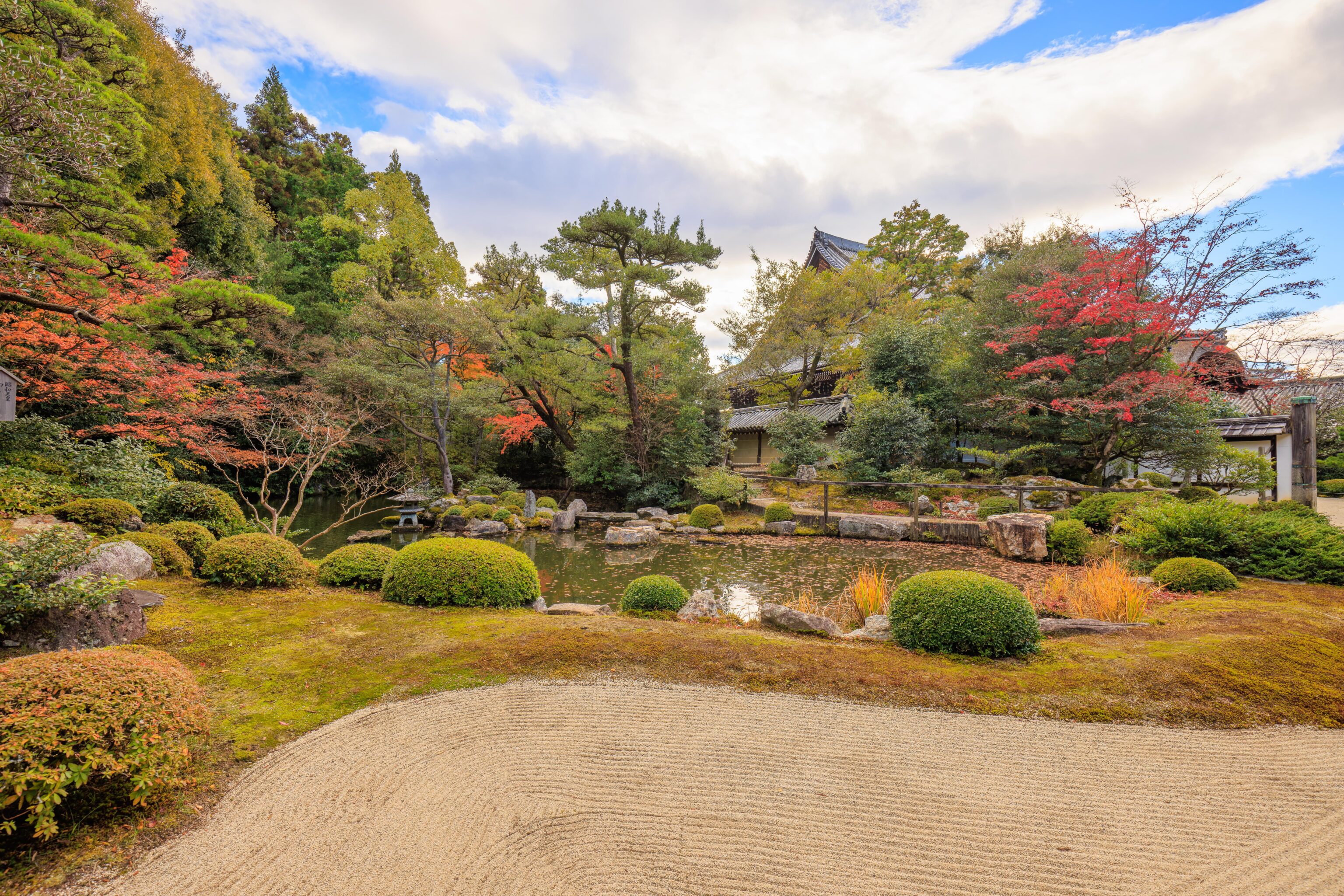
We walked by a small dry garden with pond.

A nice scene…





We saw a bit of fall foliage as we continued walking through the garden.



An interesting dry garden landscape!
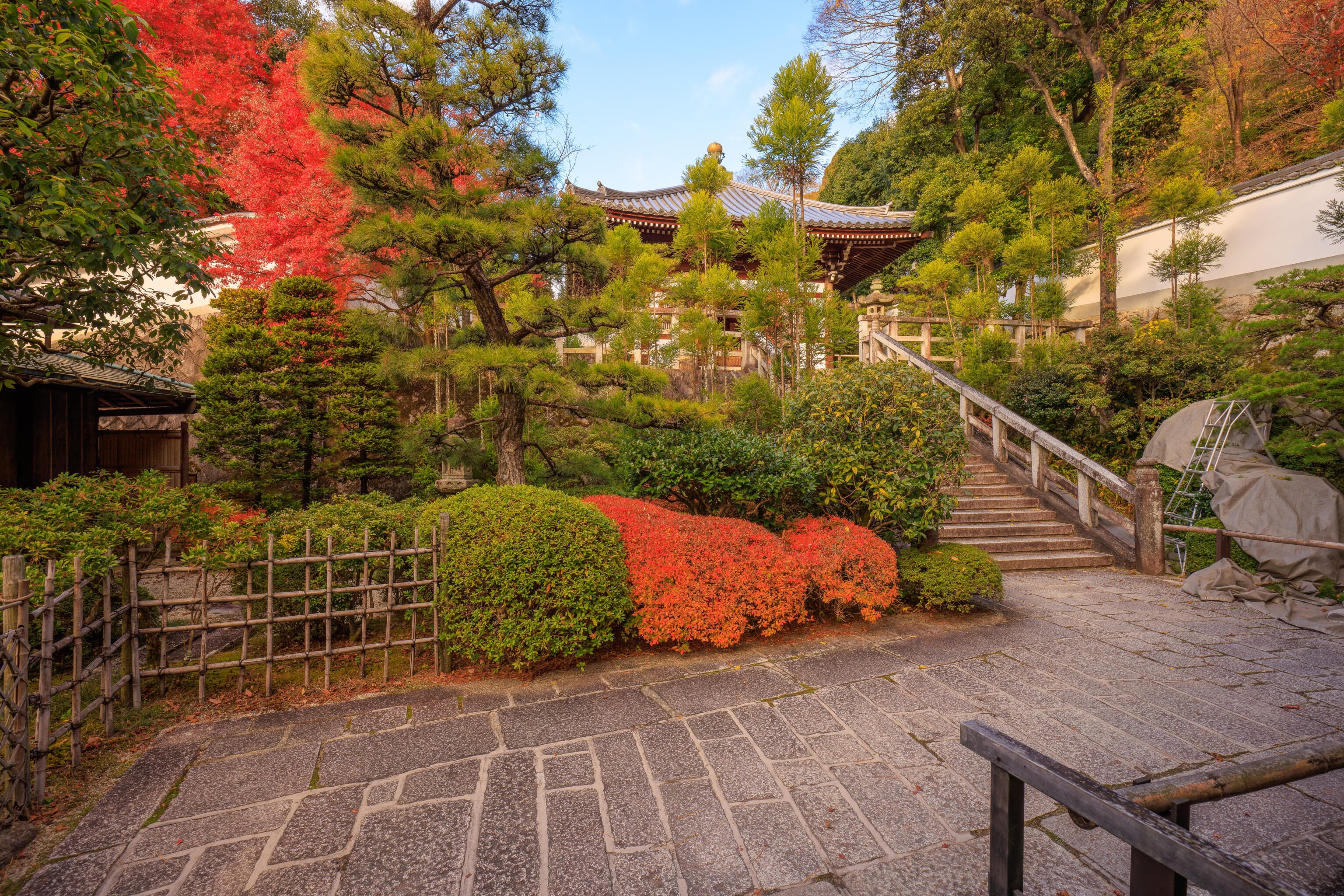

We continued on to find some stairs to climb!

There was a small temple building at the top, the Gongendo.

From this slightly higher vantage point, we could see some of the temple buildings but not much else.
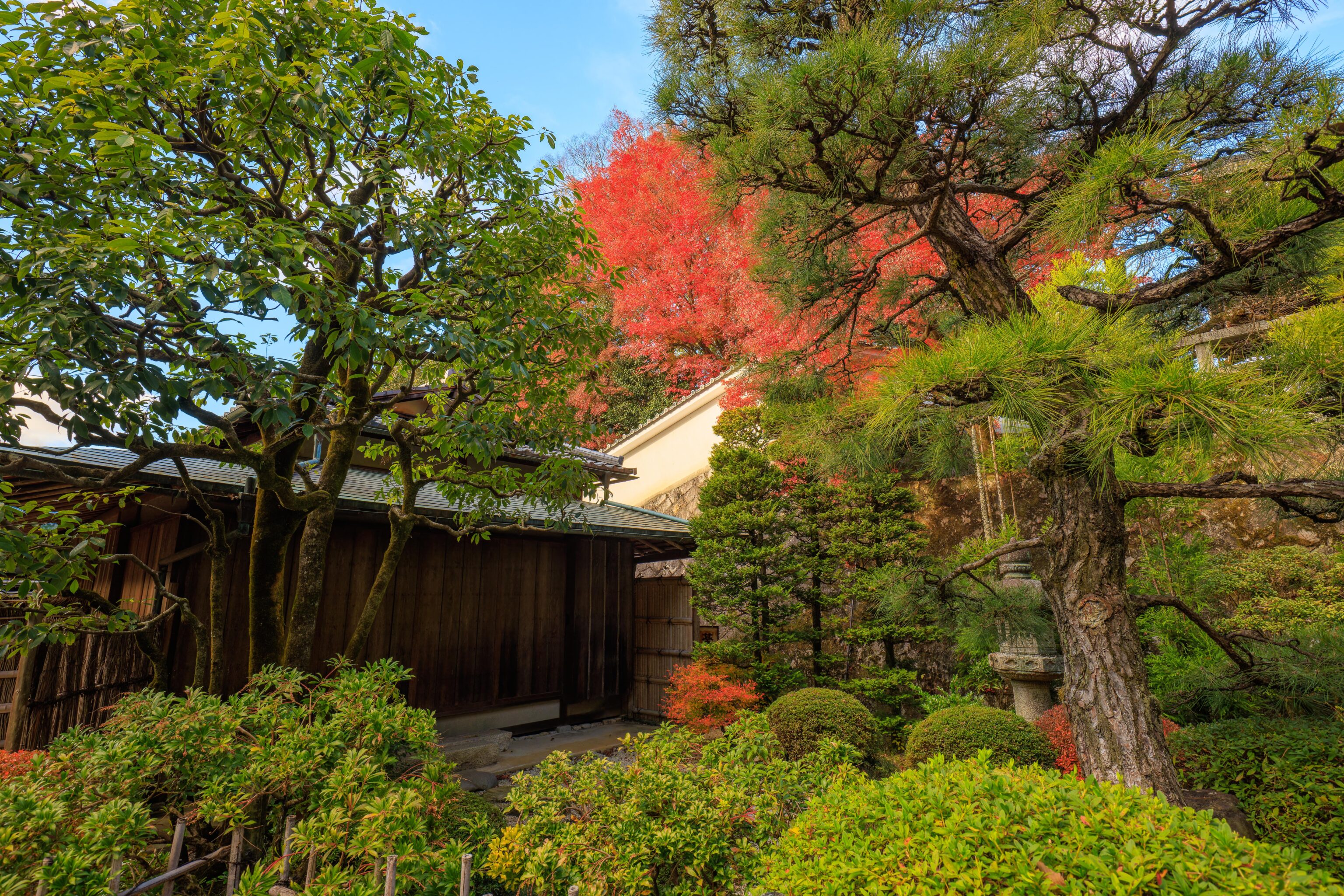
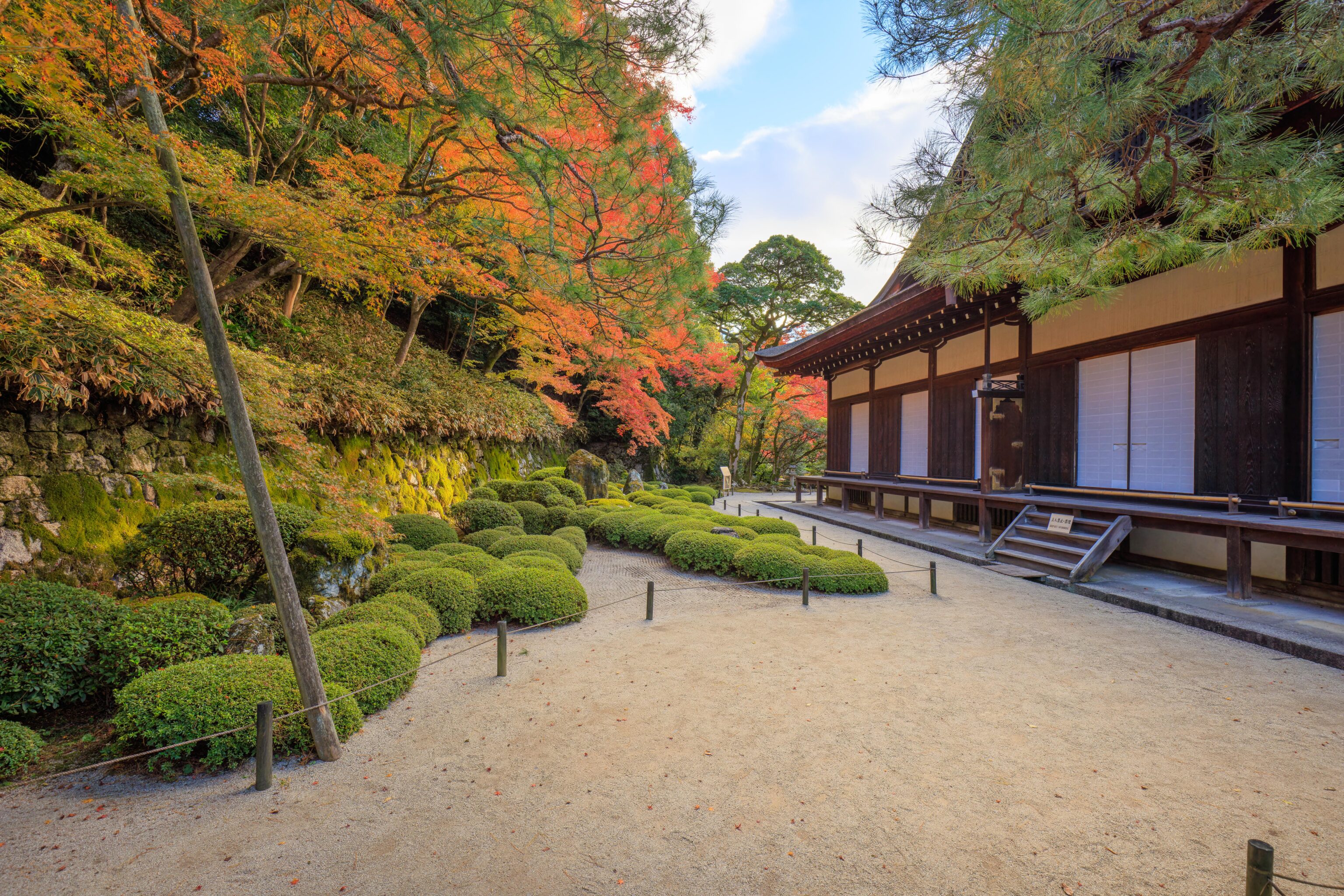

We backtracked to continue on the route through the garden.


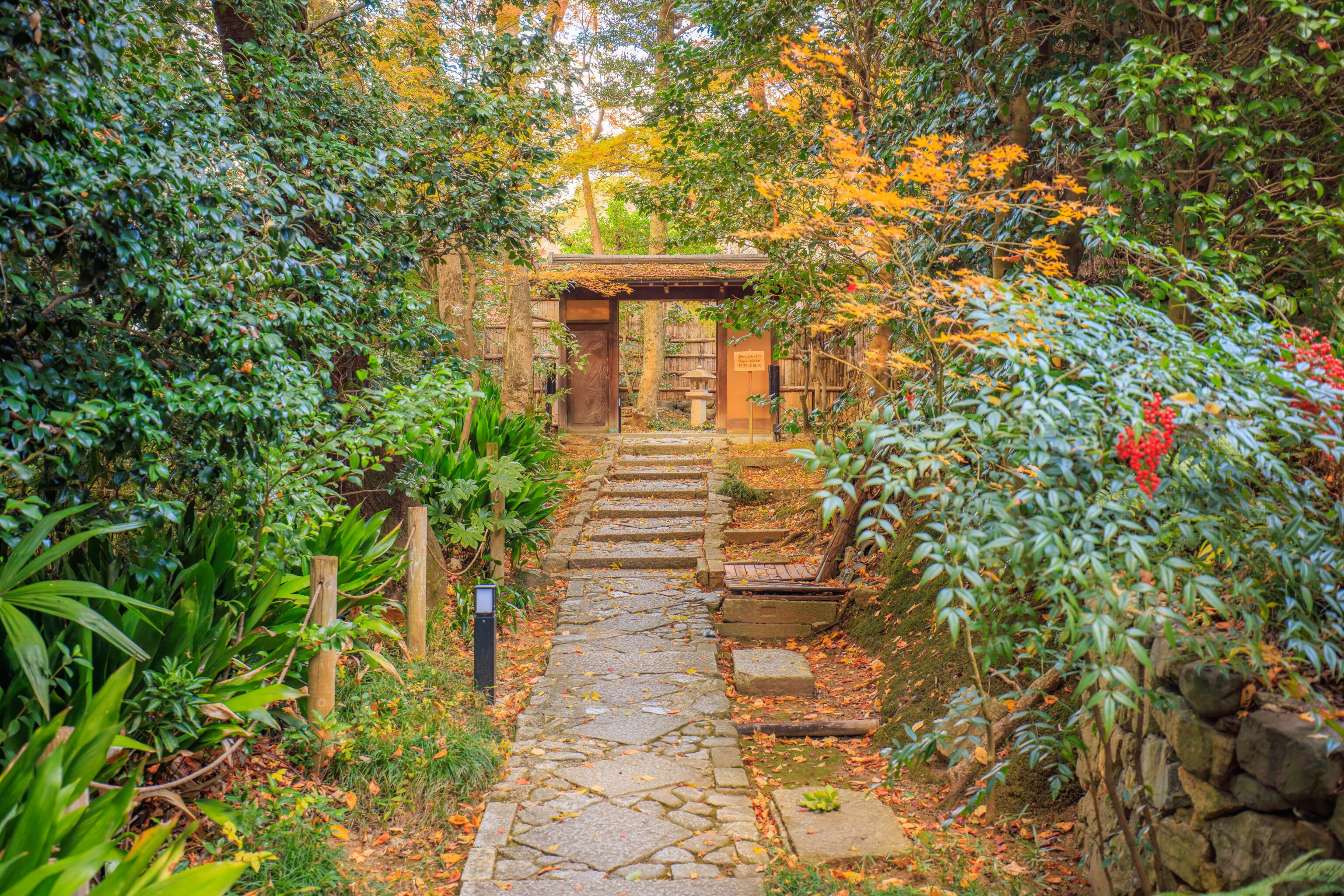
Stairs!

We ended up at a higher elevation this time where we could see past the temple buildings. We were able to see a small section of Kyoto to the west. The tall modern building at the very right is rather prominent as it rises above everything else. After looking around on Google Maps, it is the Hotel Okura.

We walked through another very small garden area, the Santei Garden. Santei refers to the building that is next to the garden.


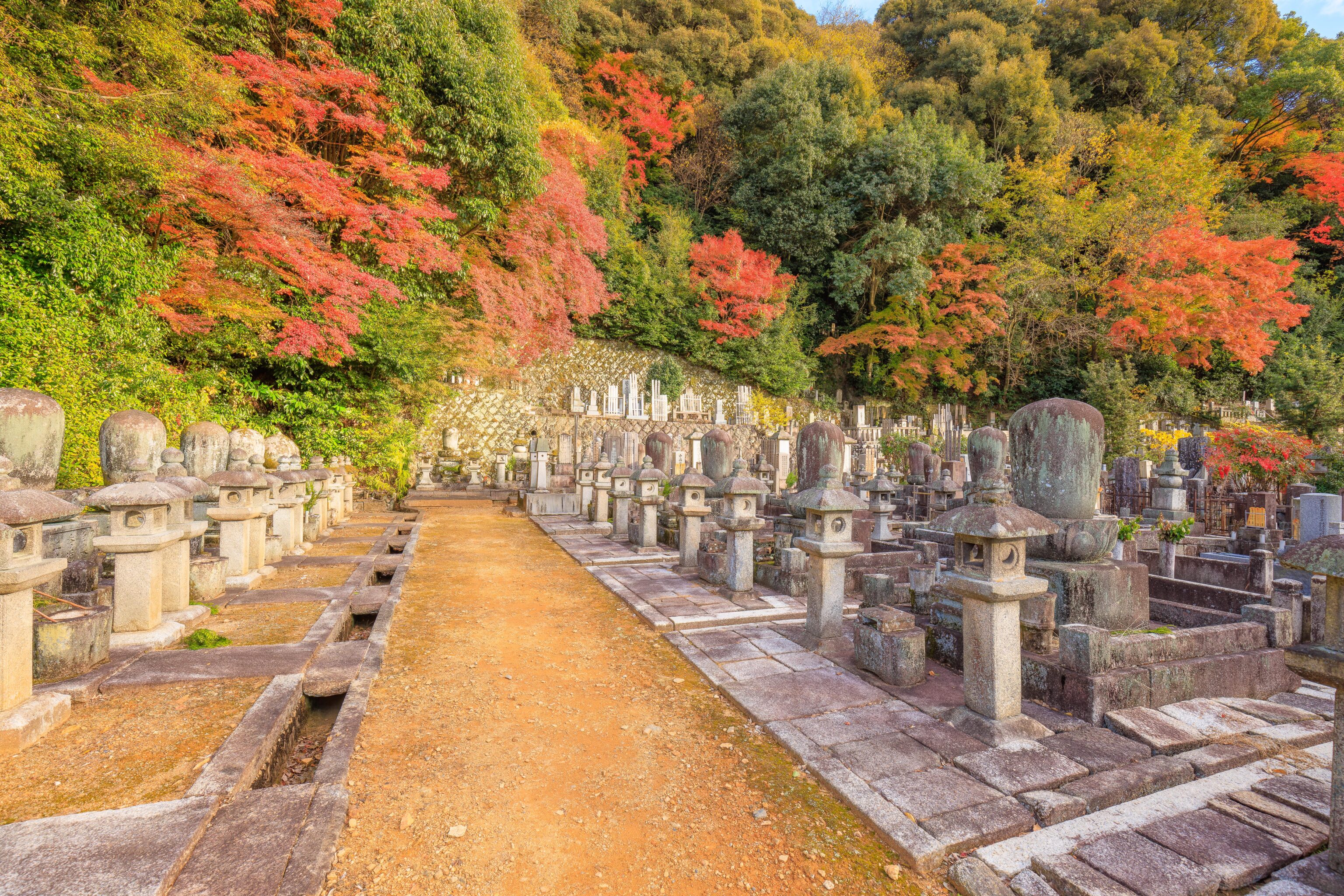
The garden route ended here, in a temple cemetery!


There is a small Shinto shrine, Nuregami Daimyojin, in the north part of the cemetery. The shrine is for Nuregami, the god of matchmaking. Unfortunately, there is no English description of this shrine. But, the Japanese website tells its story5, thanks to Google Translate and a bit of manual cleaning up:
As you walk past Seishido and Santei and walk deeper into the grave, you will find the particularly large grave of Senhime (the eldest daughter of Lord Hidetada Tokugawa), and beyond that is the grave of Nuregami. You will see a torii gate with a sign that says "Shrine". A fox who was forced to leave his home due to the construction of Mieido asked the 32nd head priest of Chion-in Temple, Yuten Reigan, to prepare this wet-haired shrine in his place. The name "Nurekami" comes from the fact that his hair was wet when he was disguised as a child. Originally, she was enshrined as a god to protect against fire, but because her wet hair evokes the image of a glamorous woman, she has gained the faith of the beautiful areas of Gion Town, and today she is known as the god of matchmaking, "Nurekami-san." Senhime The eldest daughter of the second shogun Hidetada Tokugawa (1598-1664). At a young age, she married Hideyori, the son of Toyotomi Hideyoshi, but was protected by the Tokugawa family during the Osaka Siege. She later married Tadatoki, the eldest son of Tadamasa Honda, the lord of Himeji Castle, but when Tadatoki and others died of illness, she returned to her younger brother, Iemitsu Tokugawa, the third shogun. It is said that Senhime became a monk, took the name Tenjuin, and lived the rest of her life at Takebashi Palace in Edo. She passed away at the age of 70. Nurekami Doji In the early Edo period, a child appeared wet and sobbing at the bedside of the 32nd Reiyan Shonin of Chion-in Temple. This child was a white fox who had lived in the area of Mieido for a long time, but it was said that he lost his home when Mieido was built. Feeling sorry for him, Reigan Shonin made a sleeping place for the child. Later, the child appeared again at his bedside, and as a token of gratitude, he vowed to protect Chion-in from fire, and legend has it that he left an umbrella under the eaves of Mieido as proof of his promise. Afterwards, it is said that the Shonin named the child Nurekami Doji and enshrined him at a shrine.
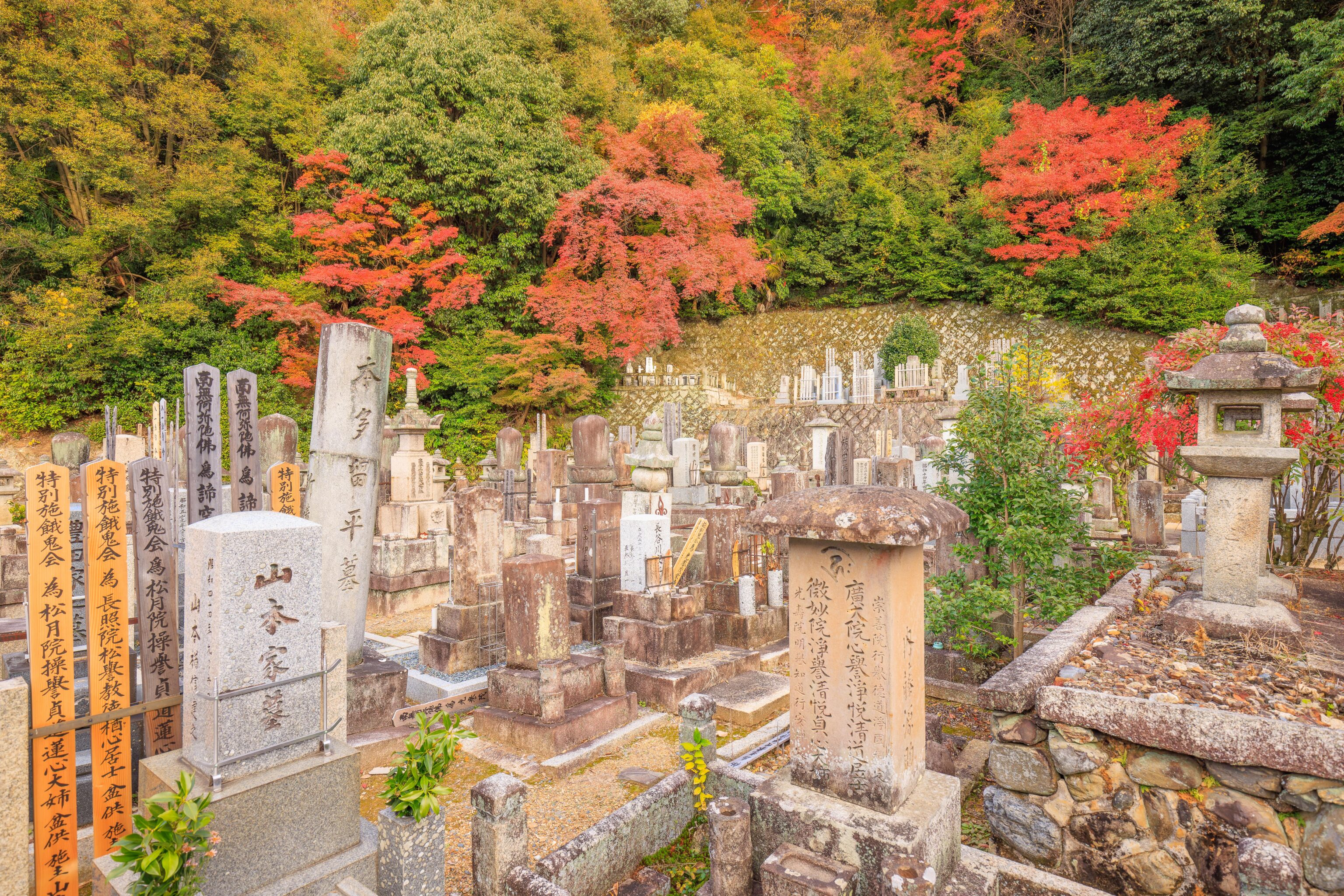
Having more or less gone as far north as possible, we turned around and headed to the south through the cemetery.
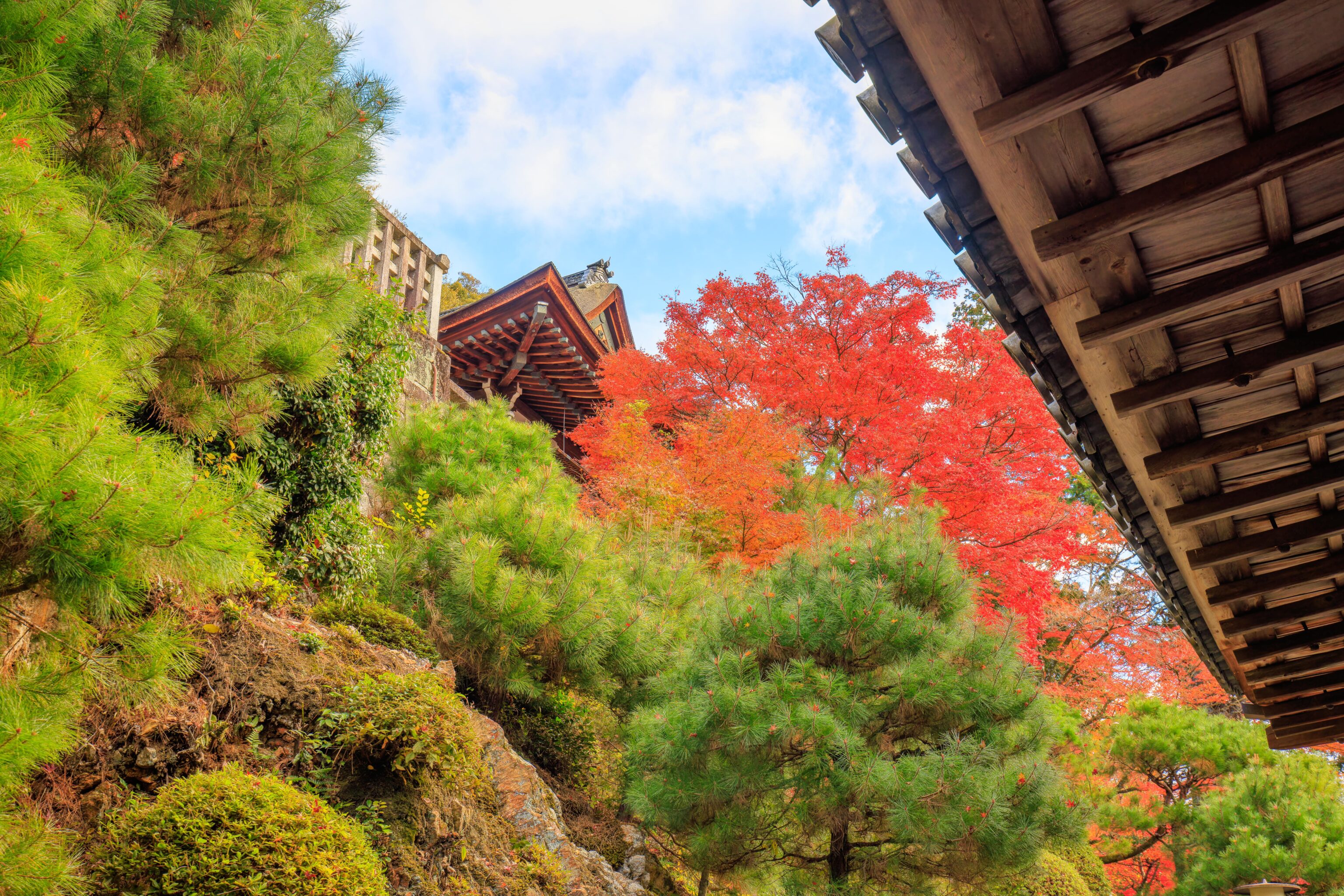
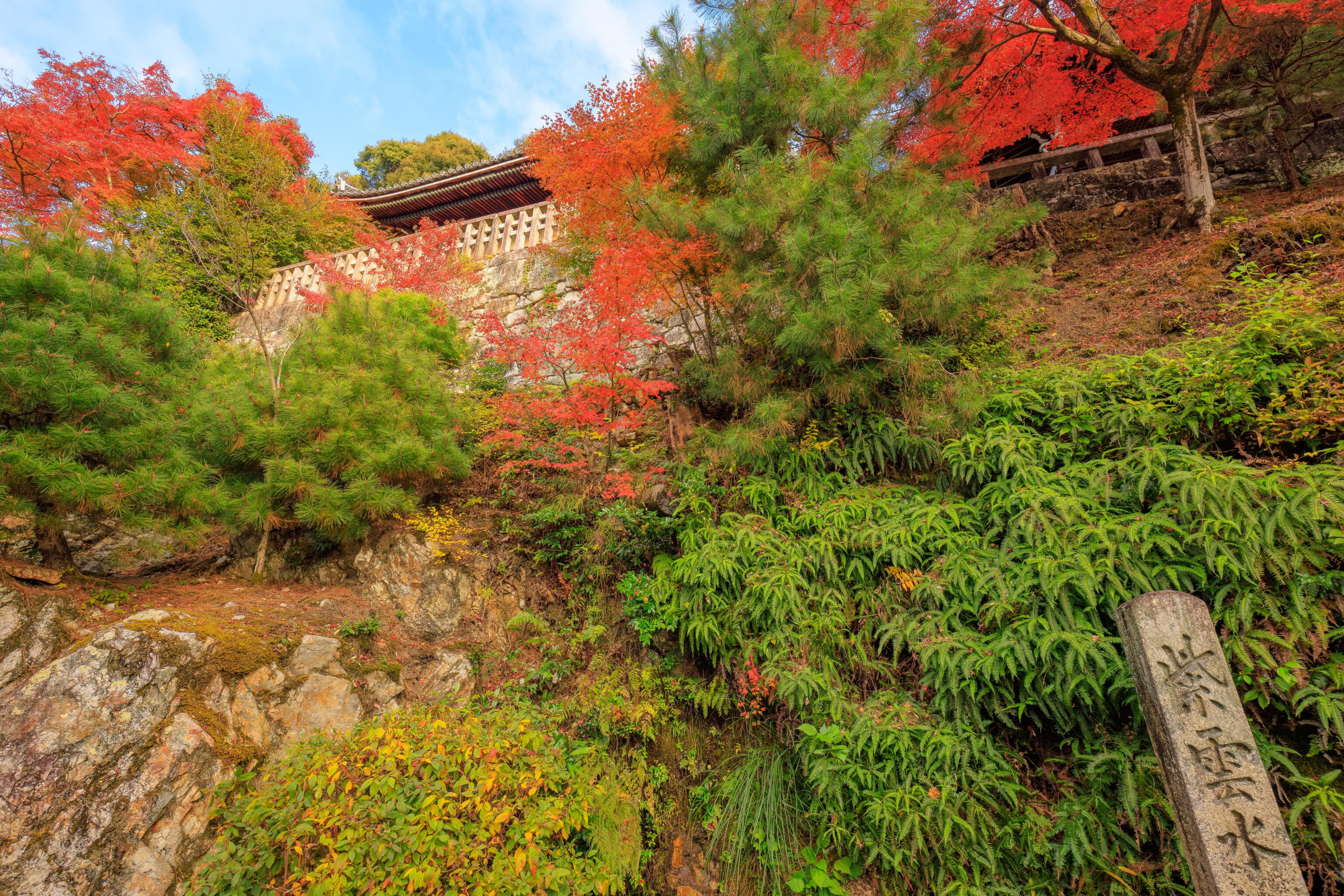
There were more buildings above us!

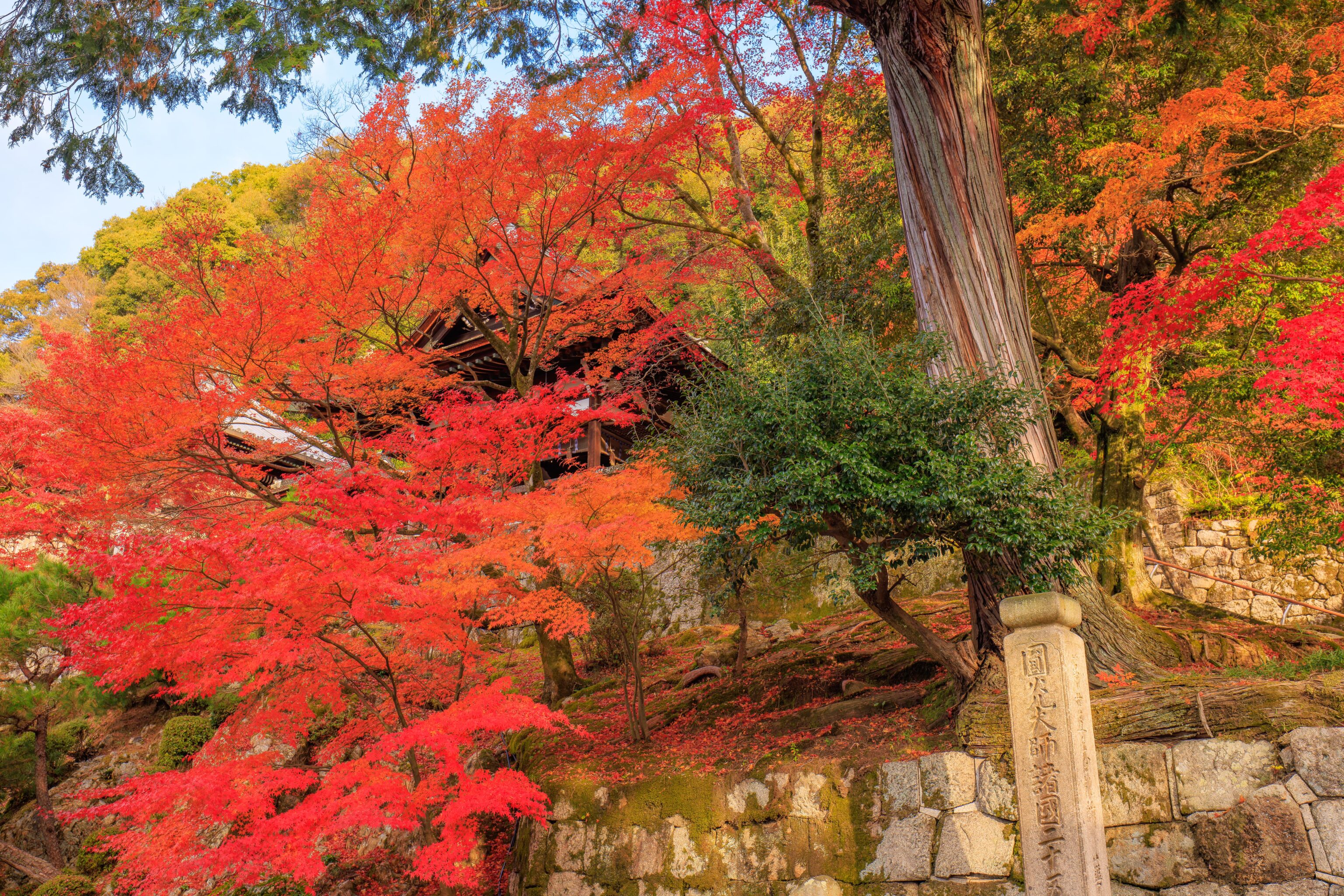

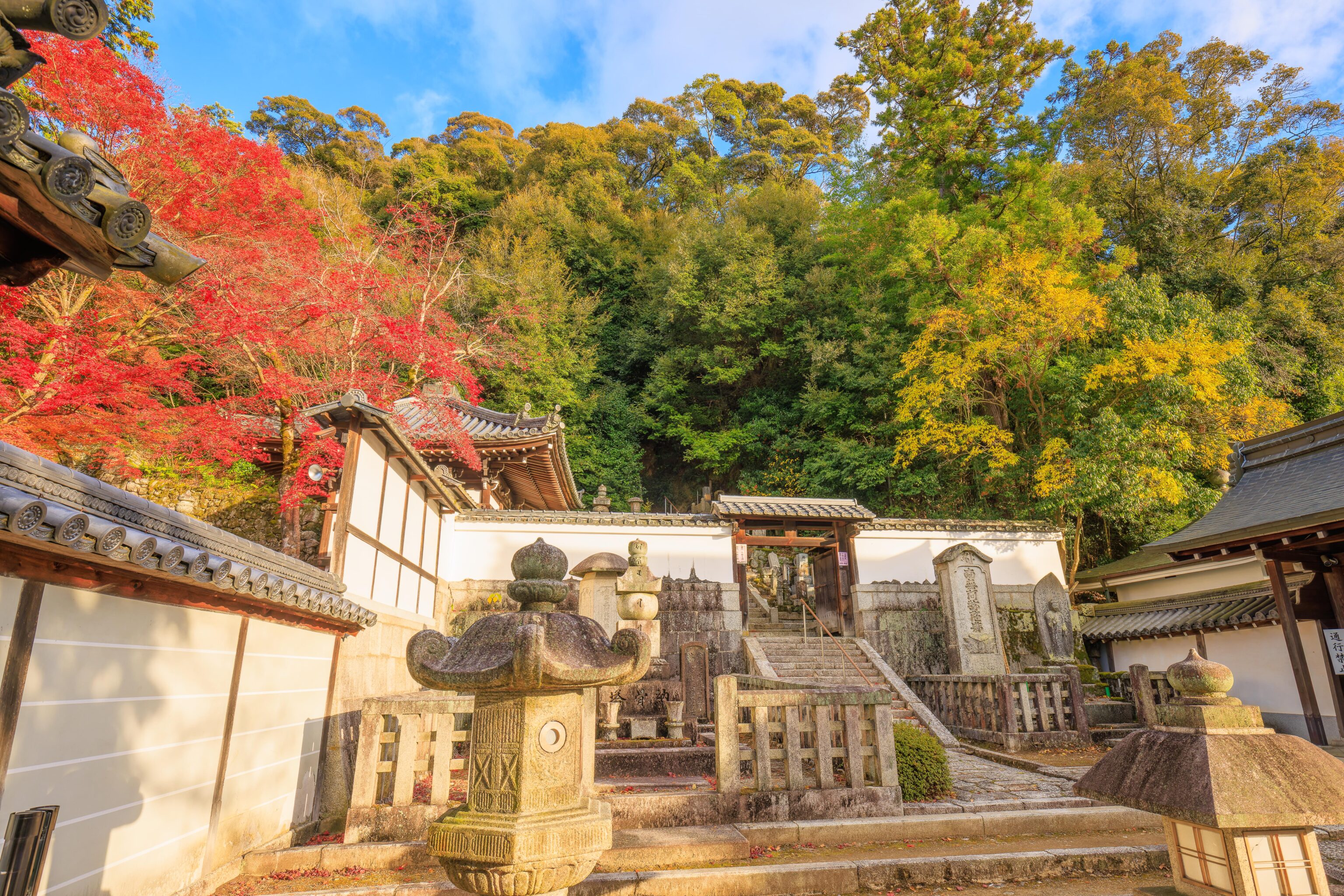
We walked to the south until we exited the cemetery and ended up at a junction.

We briefly took a look at what was further south. More temple buildings.

We decided to head down as it was already getting late in the afternoon. We had to walk down these stairs though, the same ones we looked up at from the bottom earlier!

A familiar sight! After arriving back at Chion-in’s main level, we went to the temple shop to take a look around.
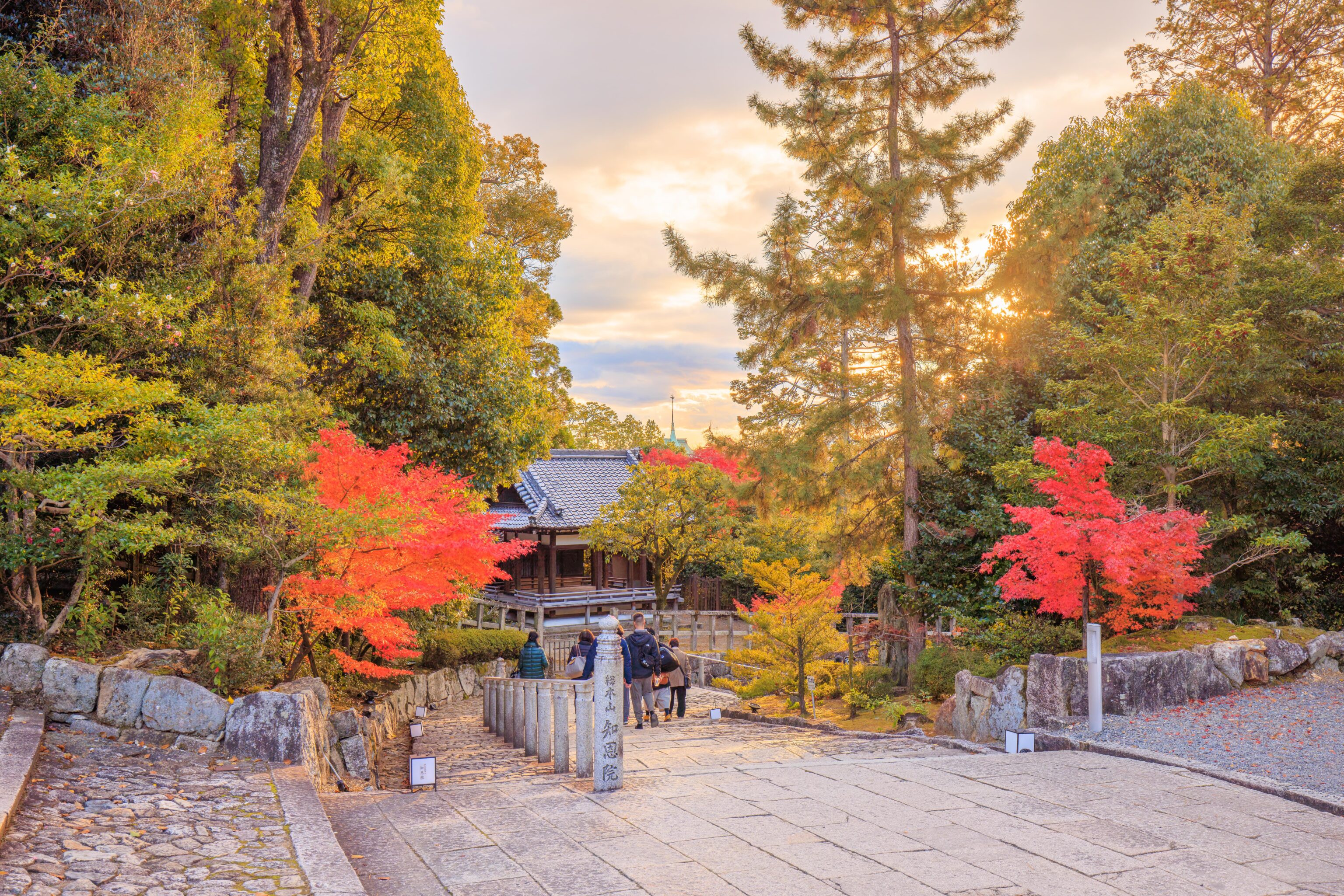
There is actually side path down that bypasses the steep stairs behind the Sanmon. This path is the Onnazaka, literally, woman stairs, meaning stairs for women.
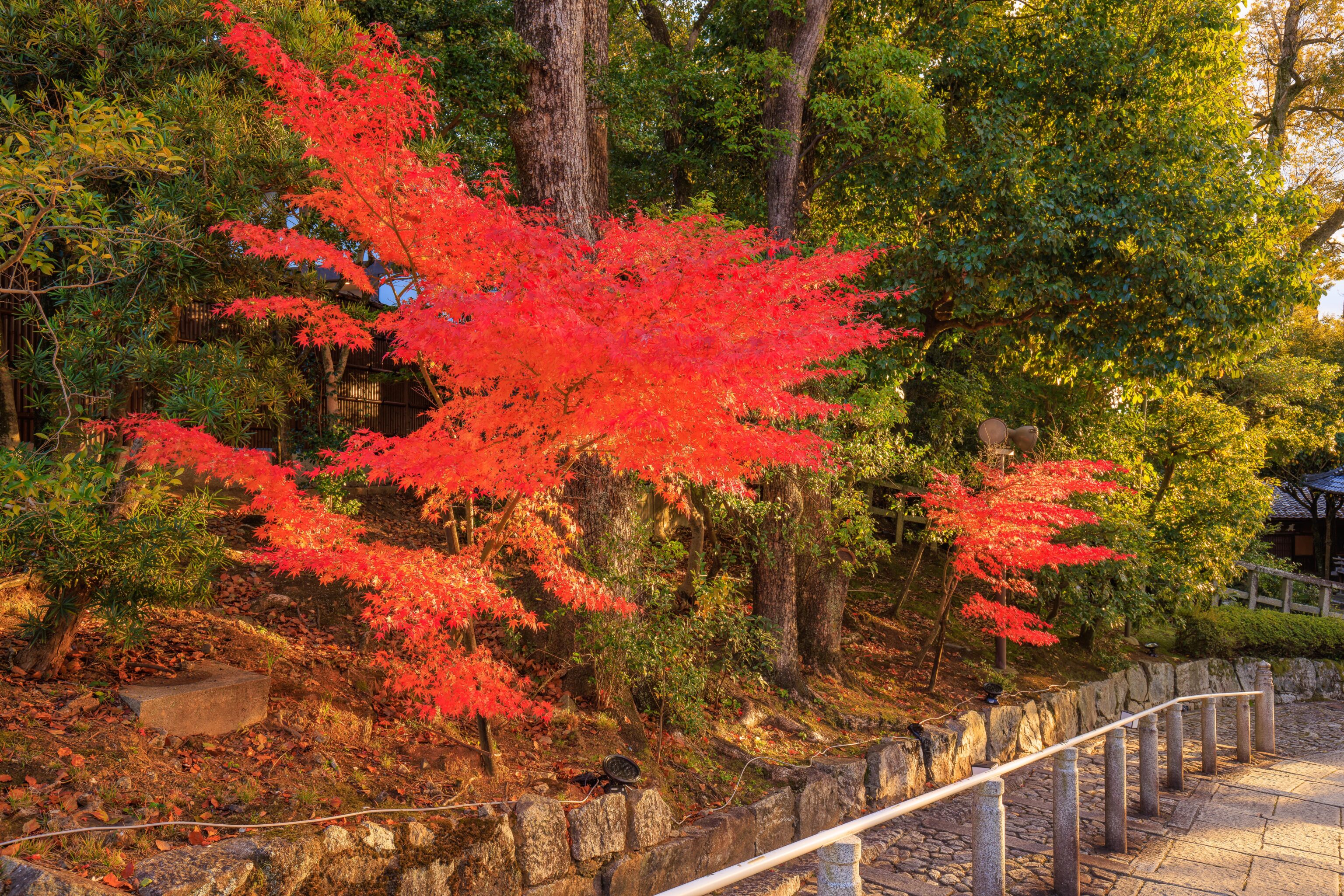
Not the same tree we photographed earlier on our way up! That one is growing in moss on the other side of the path!

After descending past the Sanmon, we crossed the street and bought some chestnuts from a vendor. He had a nice view!
Gion

We walked through the western part of Maruyama Park to reach this torii by the Yasaka-jinja.

We walked through on our way to reach the main shrine buildings.
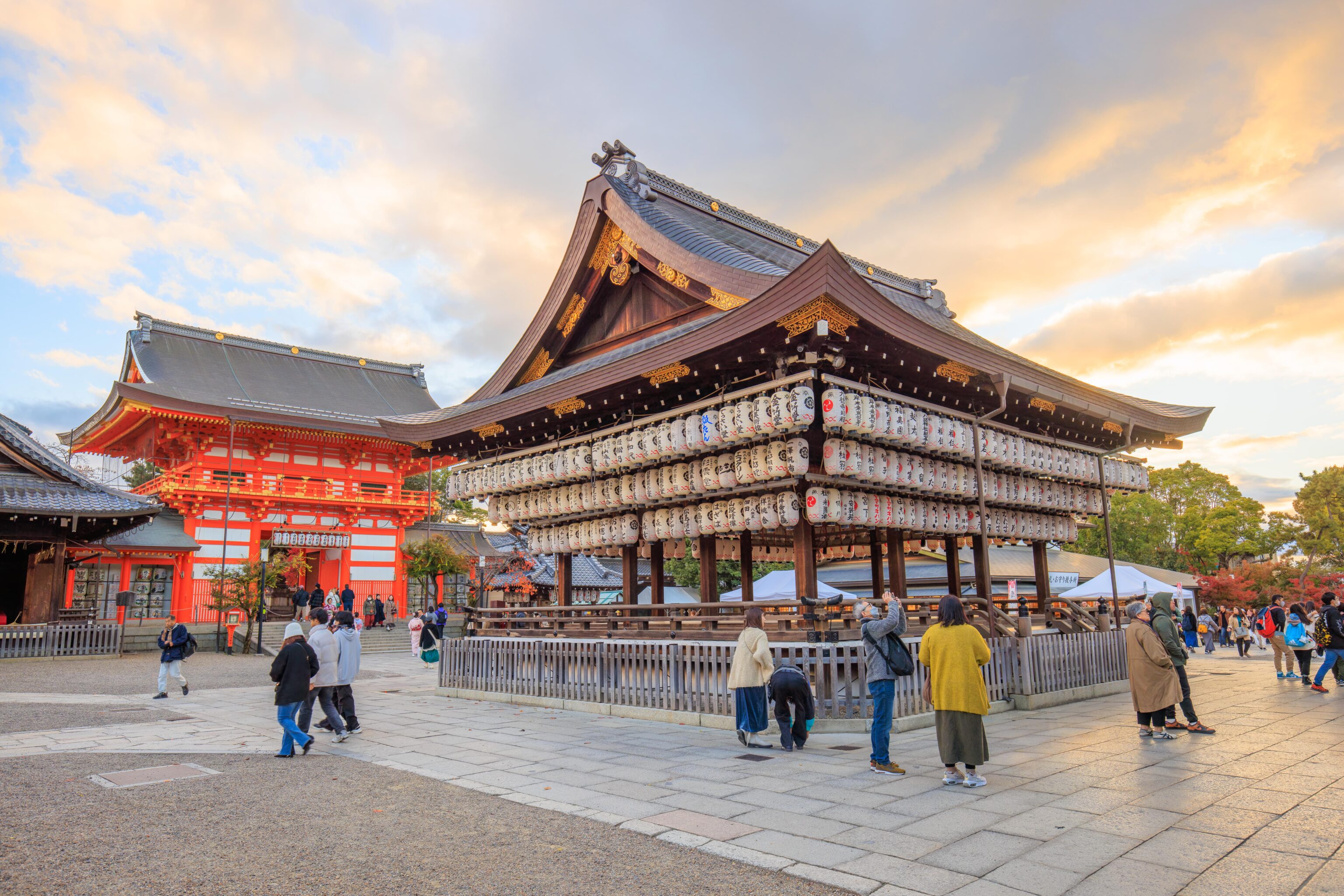

We just took a quick look before moving on as it was quickly approaching sunset.
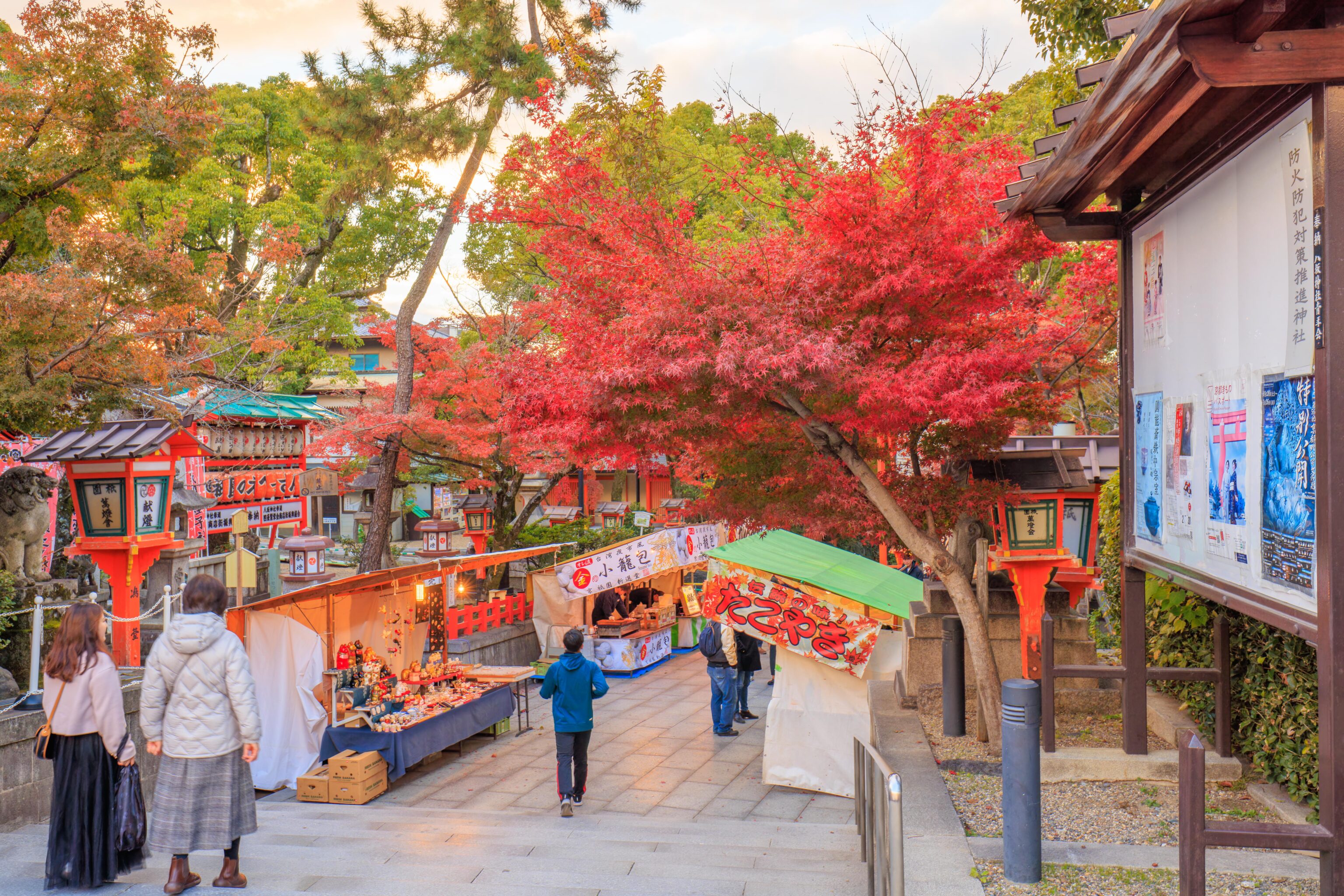

Just past the shrine buildings, we came across an area with some vendors, including hot street food. We got two orders of beef on a stick. The way it worked here is that you paid and then queued to pick up. While the meat wasn’t nearly as good as what we had for lunch, it was still a nice late afternoon snack.

The shrine is at the very eastern edge of Gion. It was sunset just as we got there!

We had dinner reservations with a cousin and her family, the some ones we met the evening we left for Kyoto at Haneda Airport! But, we still had some extra time. So, we decided to do some more snacking in Gion!
We ended up at Tsujiri, a tea house that we’ve been to multiple times in the past. We’ve also been in locations in other countries! We went upstairs to their cafe area. It was very nice to sit down after a long day full of walking! We ordered quite a bit. The matcha parfait, one of multiple options, was excellent!

We also got a matcha soba. The soba noodles are presumably made with the normal buckwheat but with matcha added in. This gives them a green color, though they didn’t have any discernible matcha flavor. The broth seemed to be pretty typical as well, though good on a cool evening.
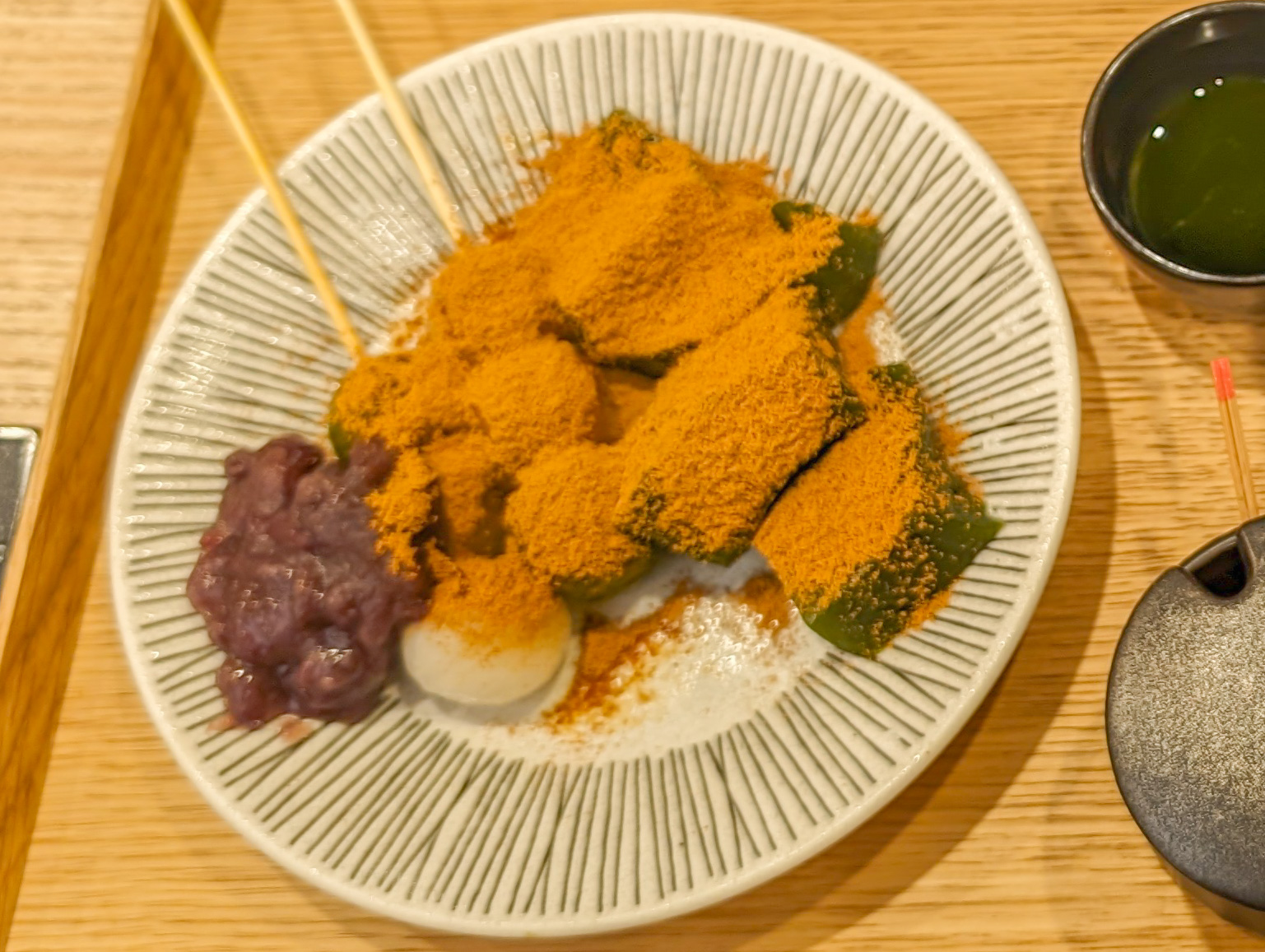
The soba was half of the Kiyomizu set. The other half was this plate of rice dumplings and matcha warabimochi. It was very good as well!
Dinner
We briefly walked around a bit before it was time to catch a bus. This was a mistake as we were headed to Kyoto Station, technically one stop before. We should have just taken a train as it would have been faster, even including transfer time and walking. The bus we boarded was extremely crowded and picked up more people on the way as it went past many of the famous temples in eastern Kyoto. We ended up just riding to Kyoto Station was it was too crowded to bother getting off just one stop before.
Dinner was at Hyoto, a shabu shabu restaurant a few blocks northwest of Kyoto Station. It is a somewhat high end restaurant with dining in individual rooms. We ordered two sets that covered a range of meat and seafood.
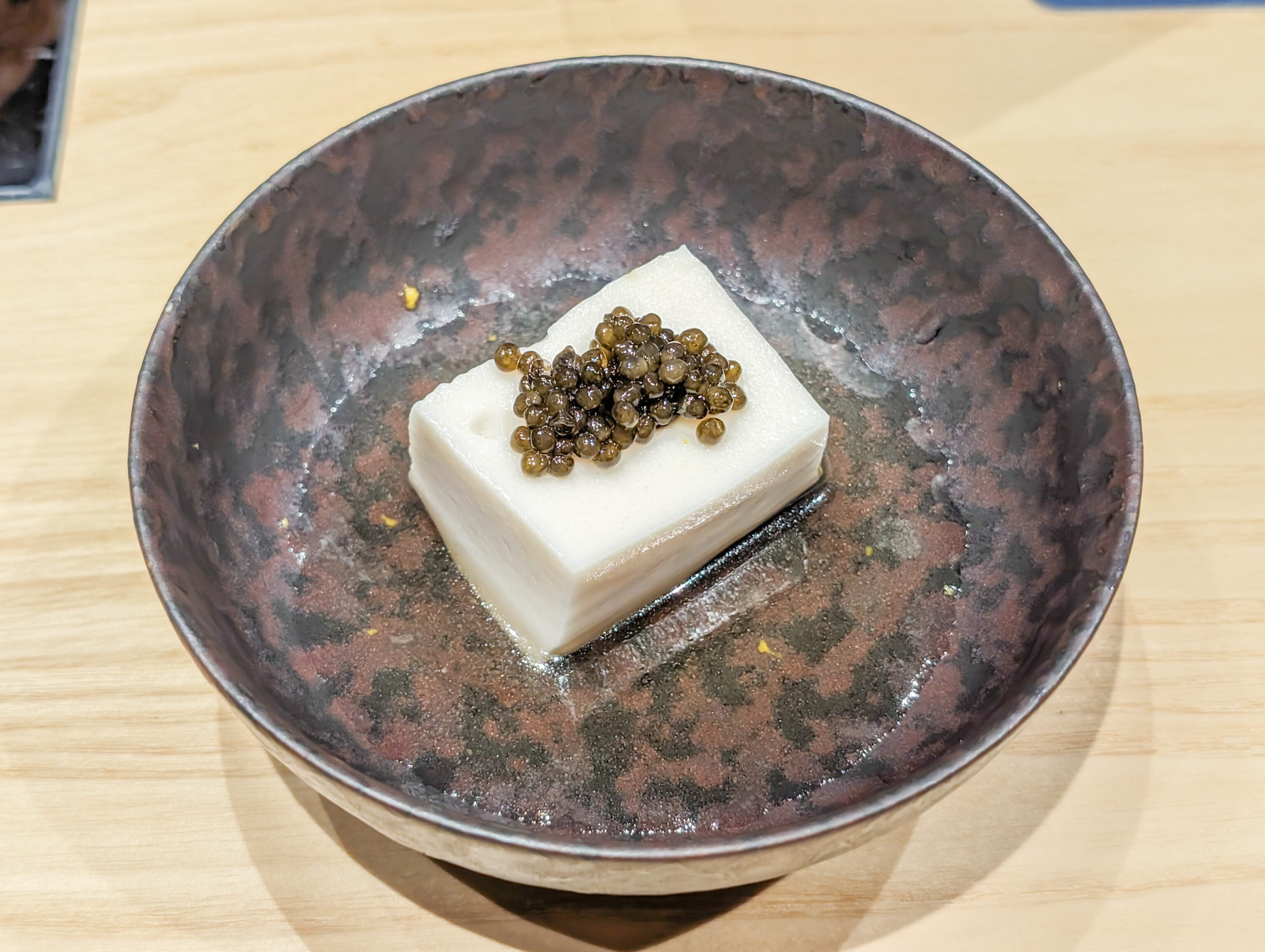



The meal started with some appetizers. Everything was fantastic and a nice hint of what was to come!


The raw ingredients for the shabu shabu! One set included Omi Beef, like we had for lunch, and pork. The other set had snow crab as well as pork. The pork cuts were basically very thin slices of what we would call bacon in America.

There were also vegetables to put into the shabu shabu.

The cooking style was very unique! A bamboo basket was placed on an induction cooking surface with a waxy paper bowl. A metal plate underneath provided the actual element for the induction heating to work. Everything we had was excellent, but particularly the beef and pork!

We ended the meal with a bit of matcha pudding for dessert. Overall, while expensive, a satisfying meal and different from what we usually have in Japan!
Afterwards, we walked back to Kyoto Station and took the subway back to the Hyatt Place Kyoto.


